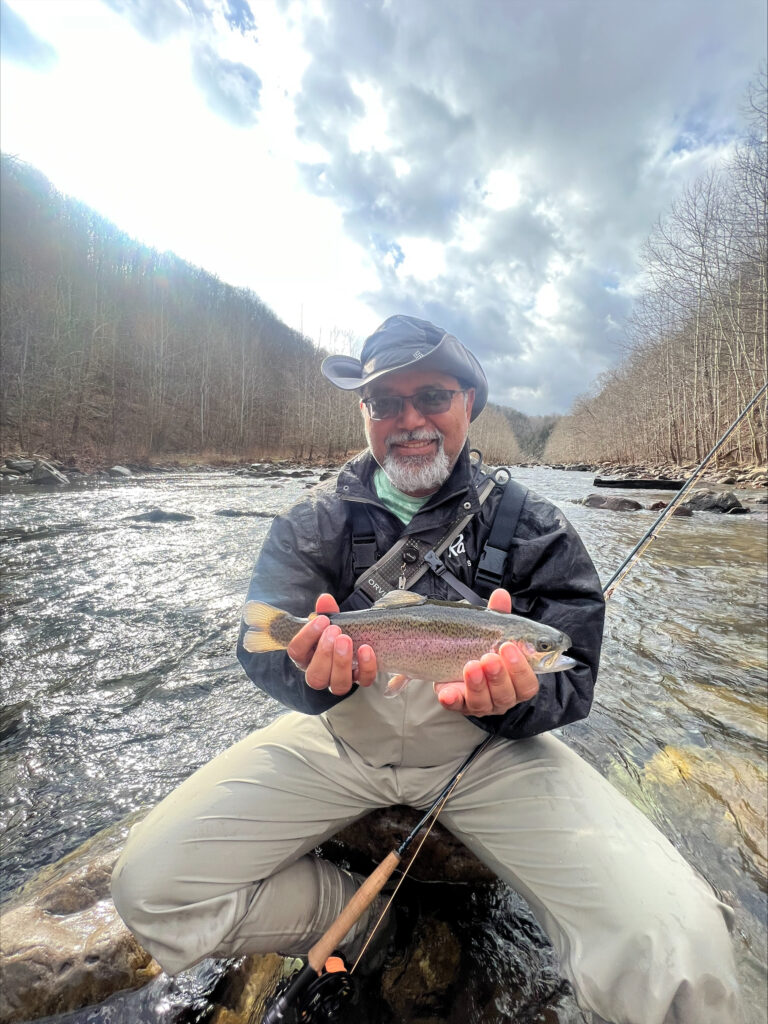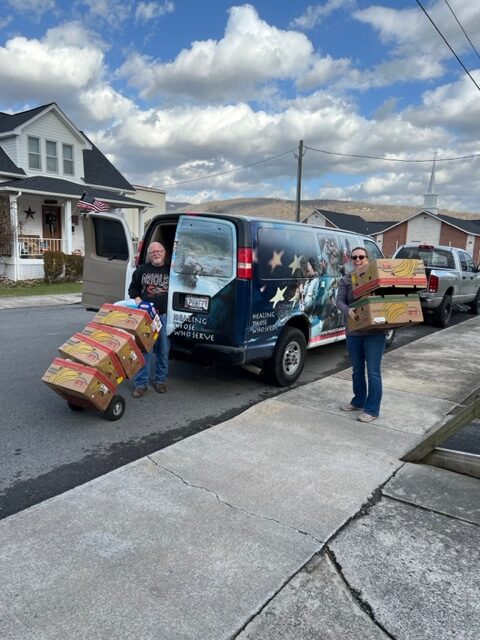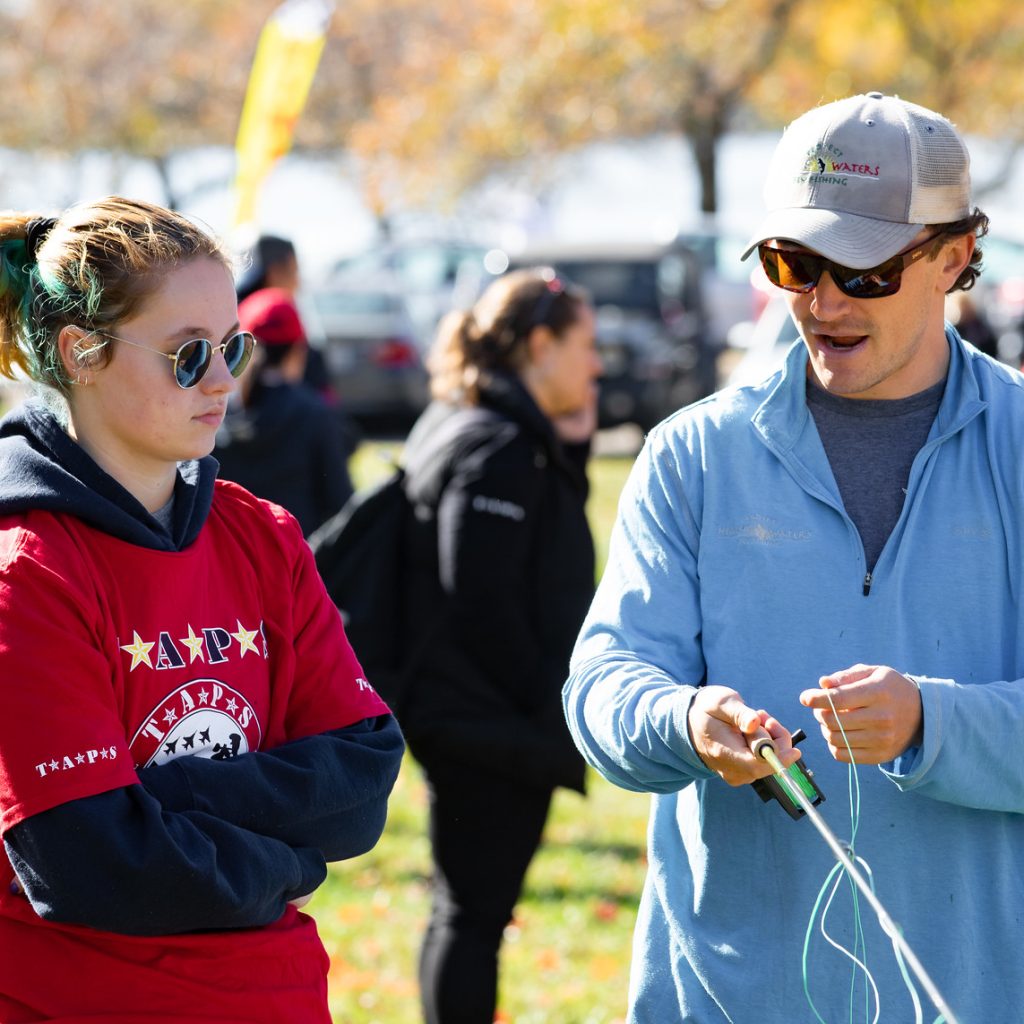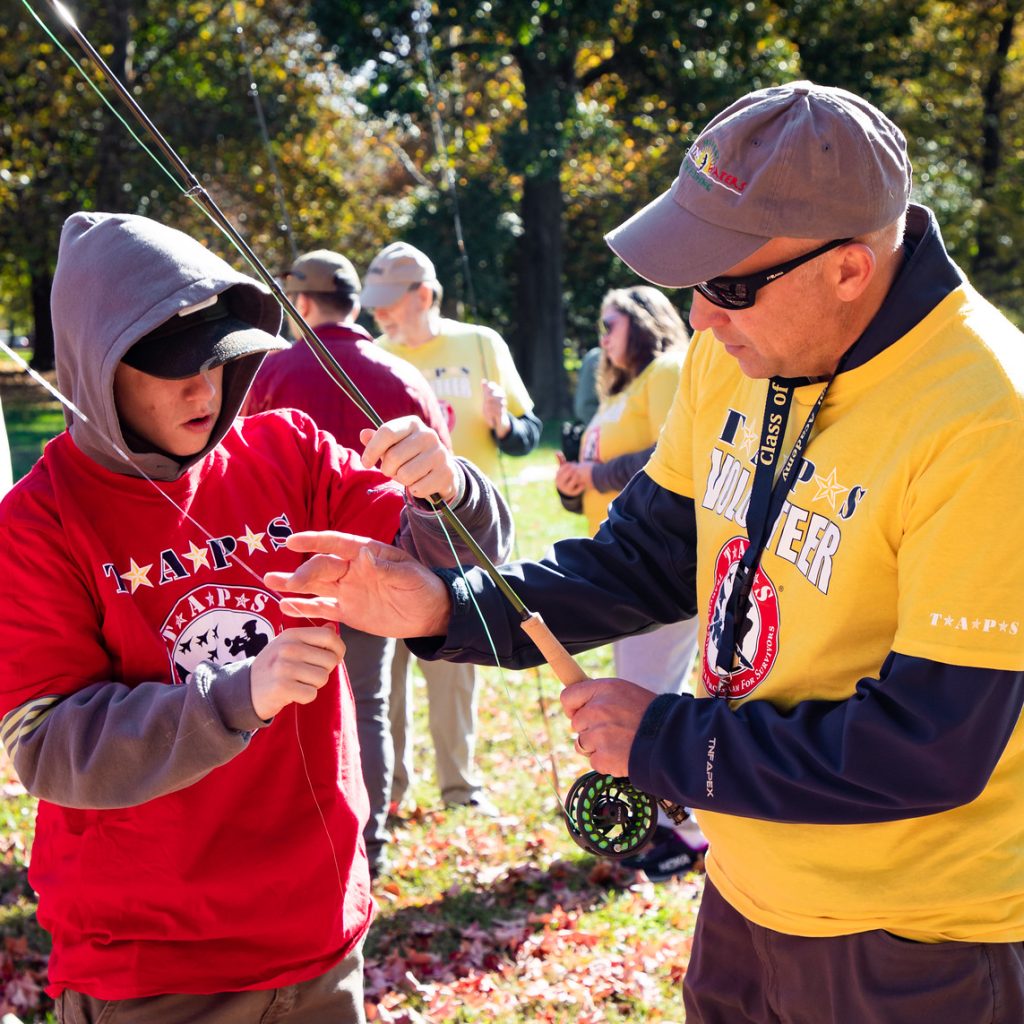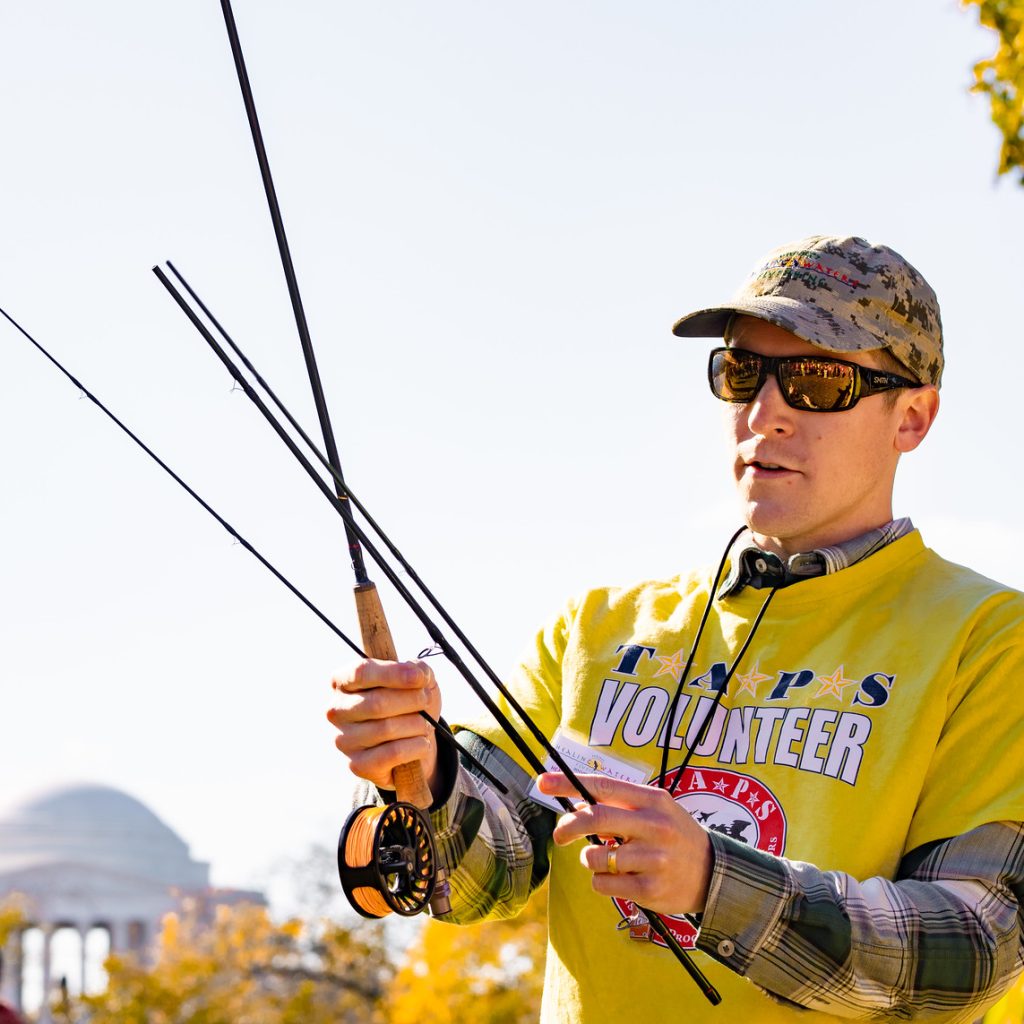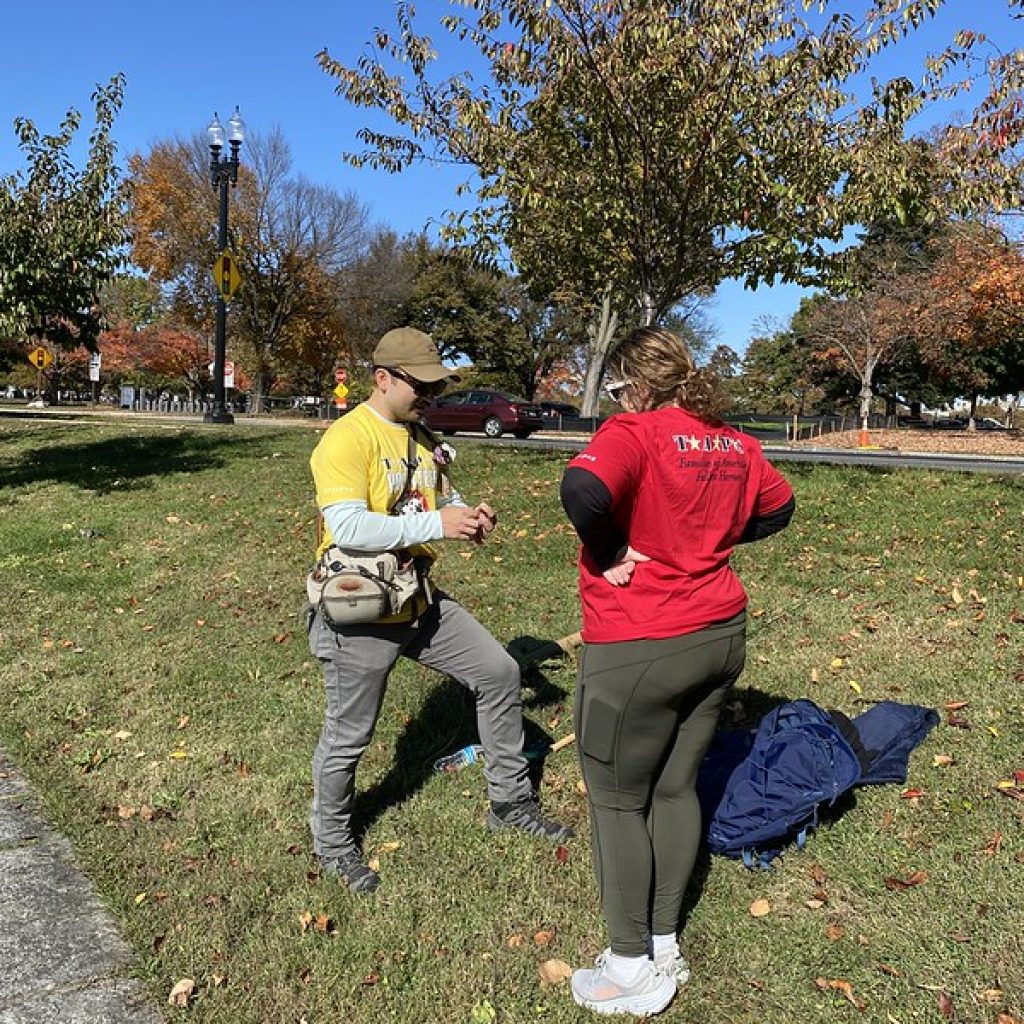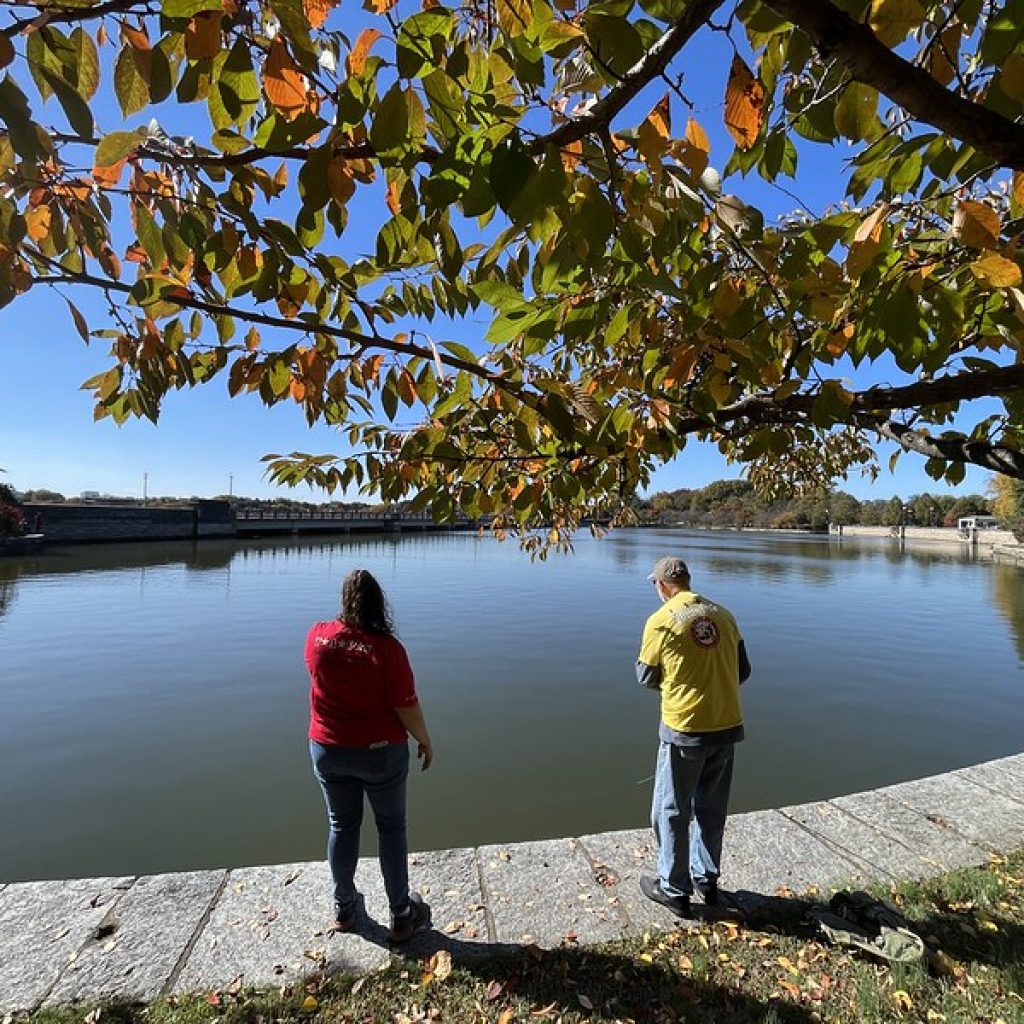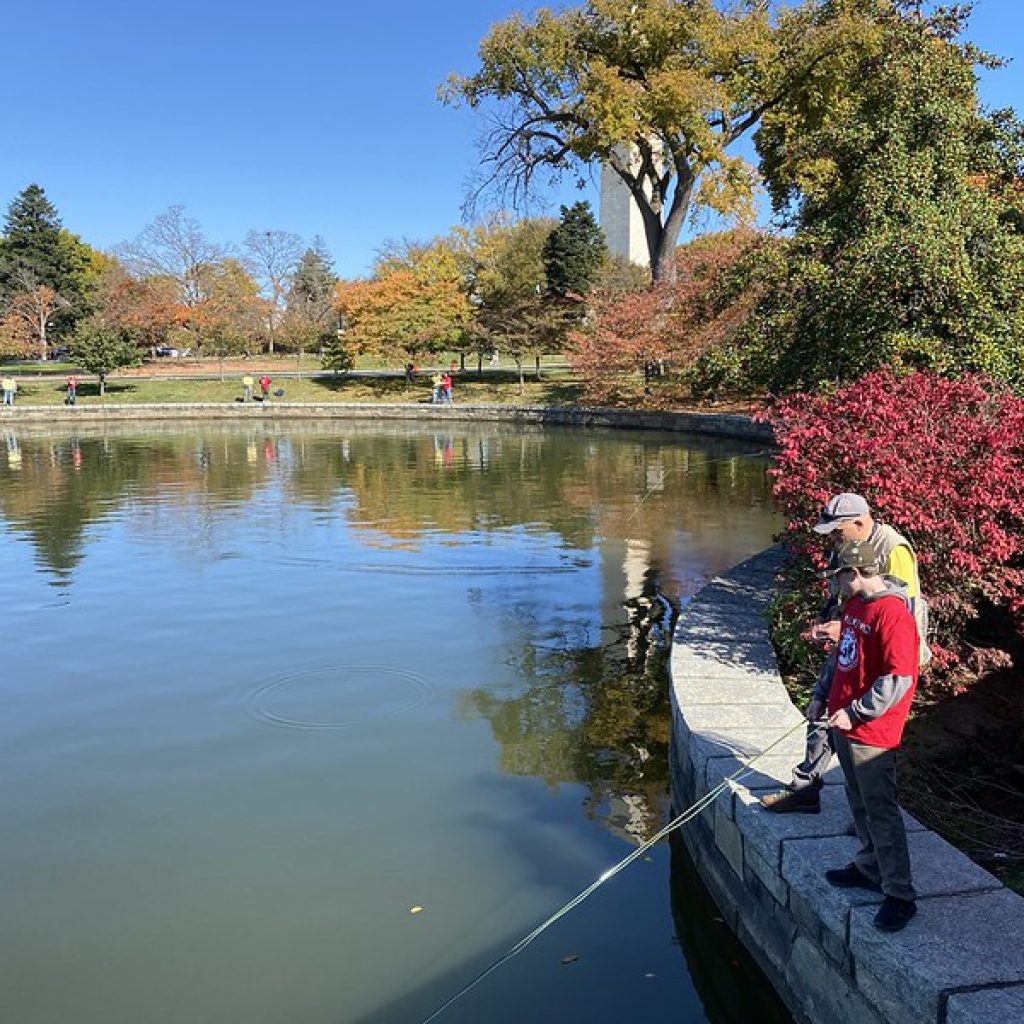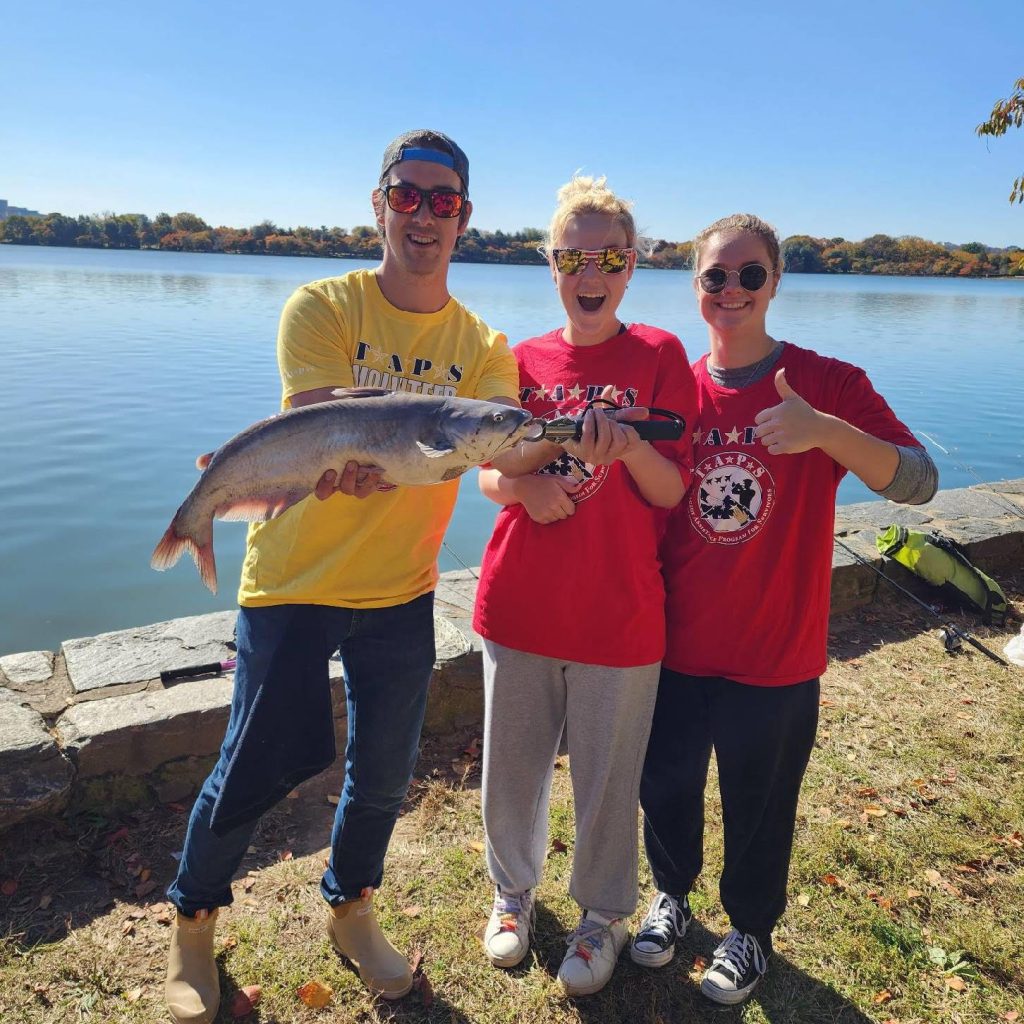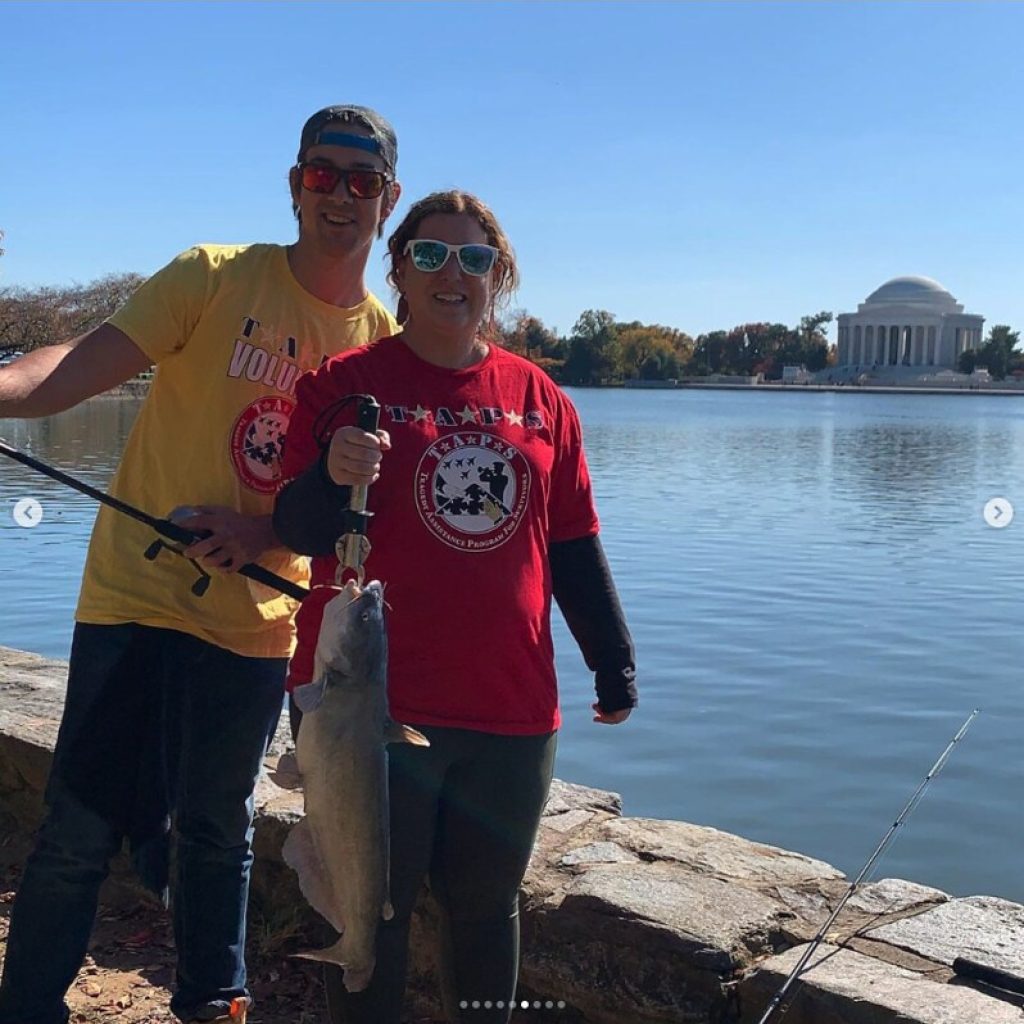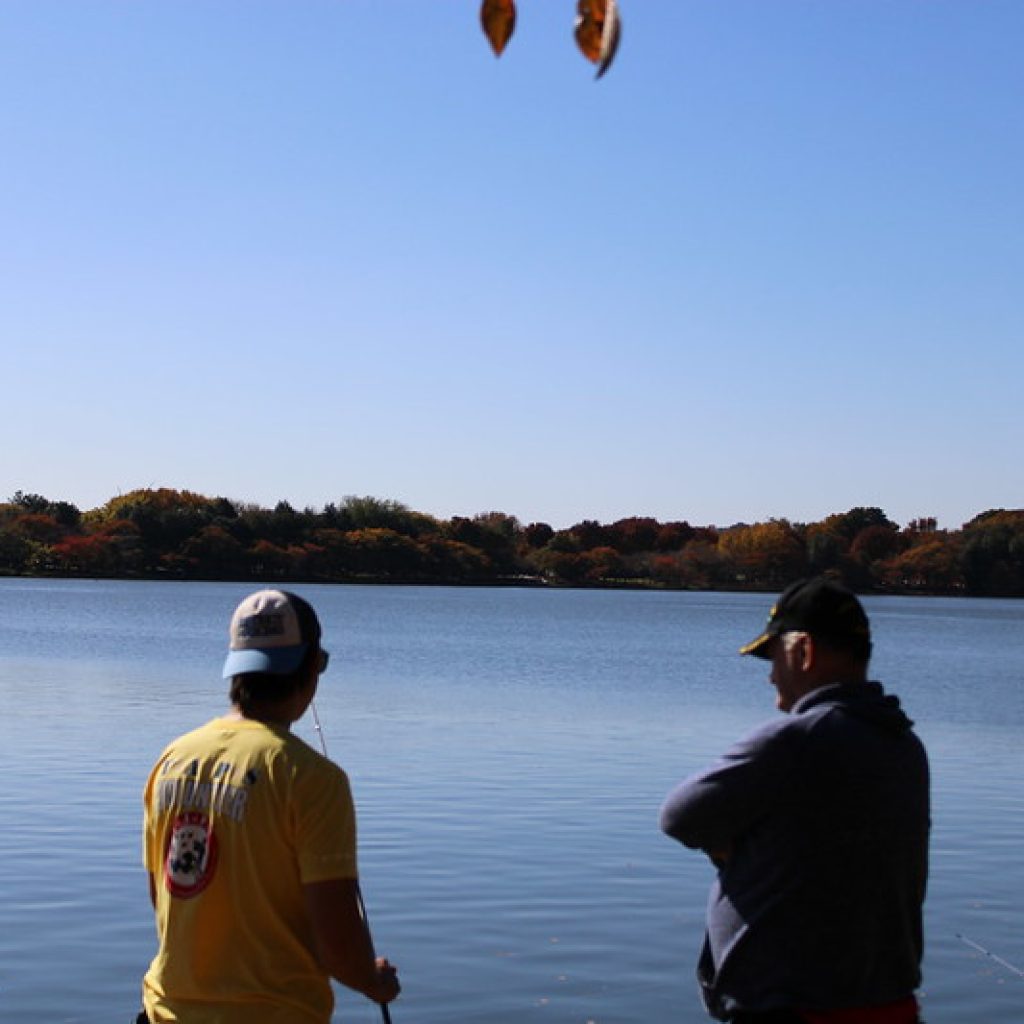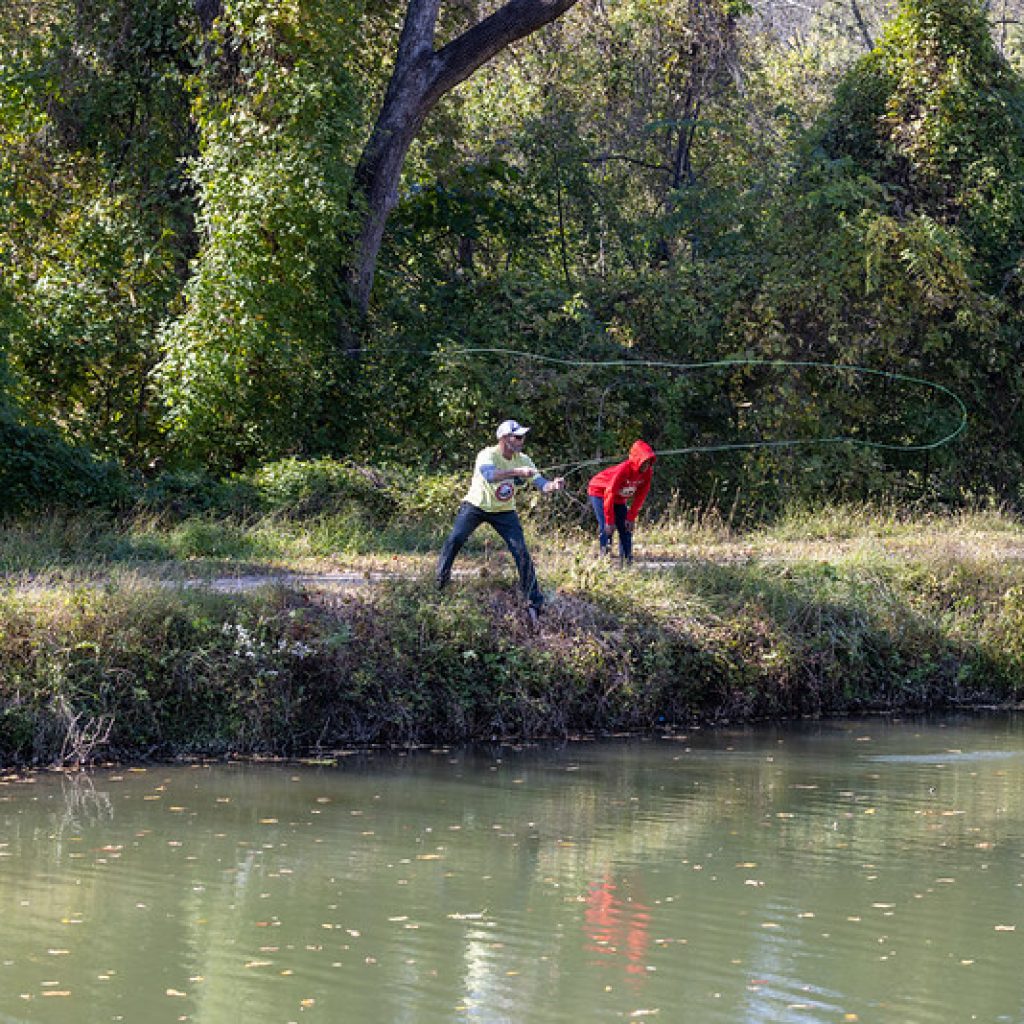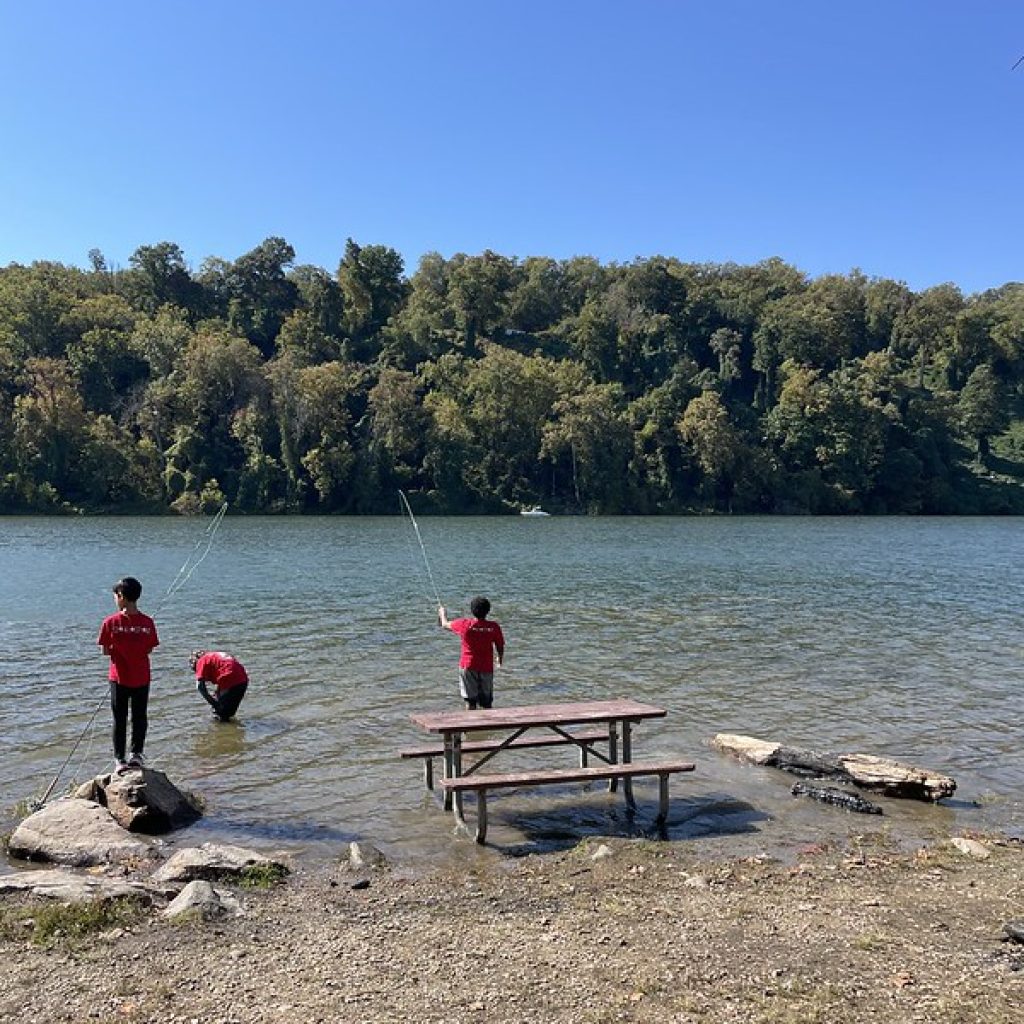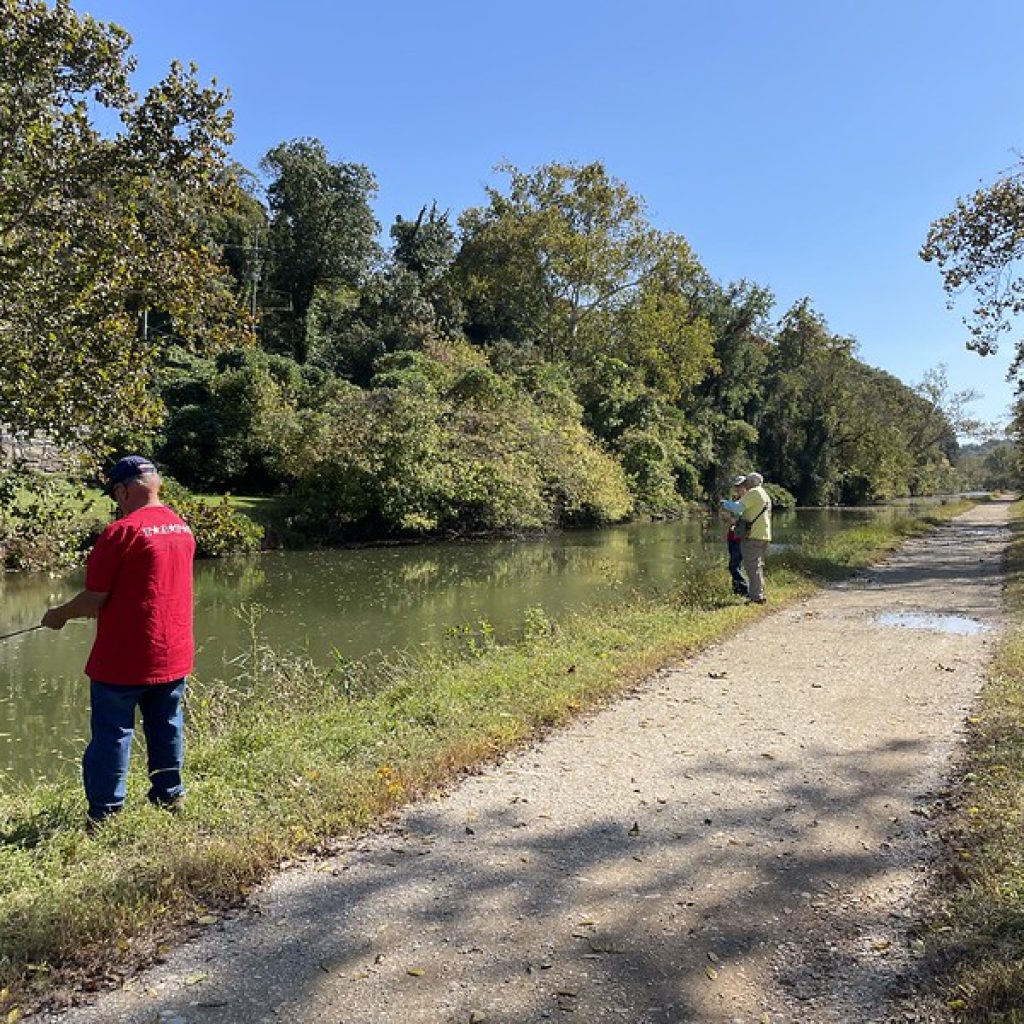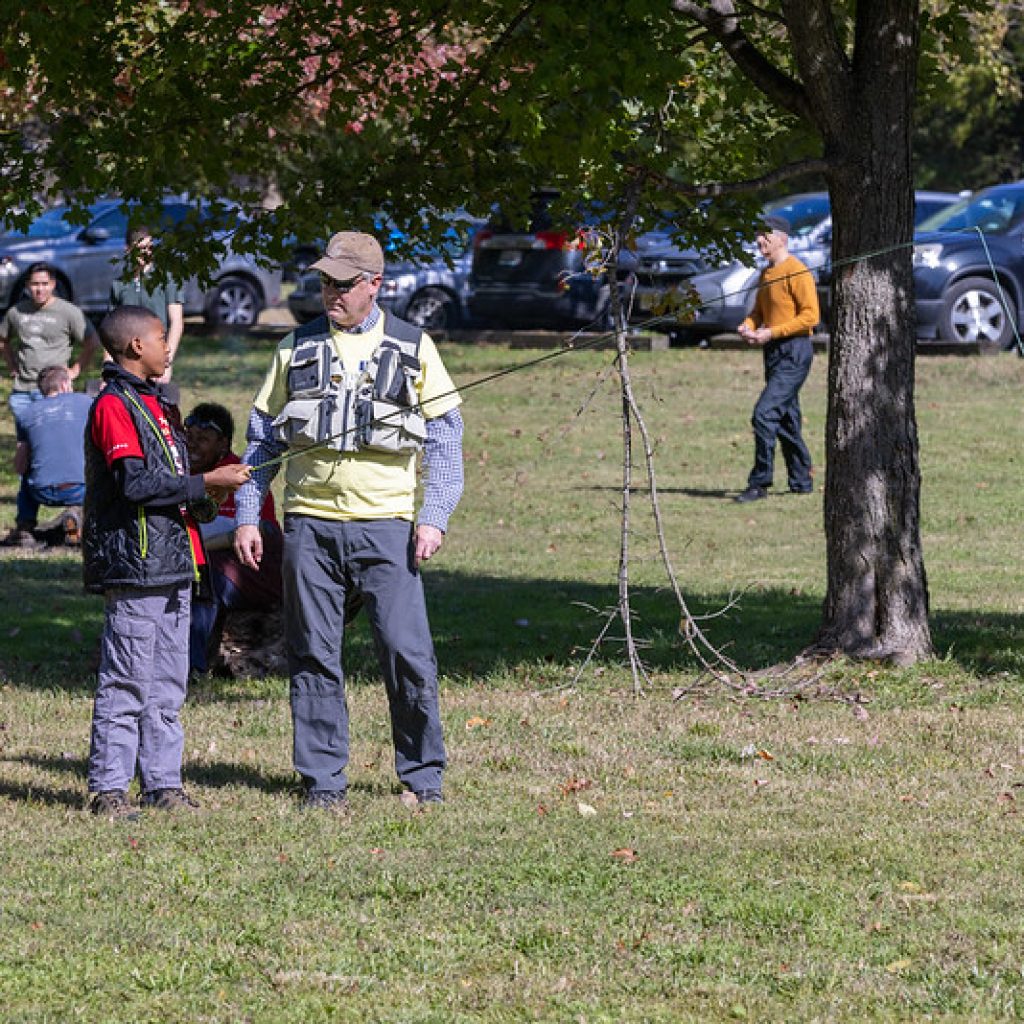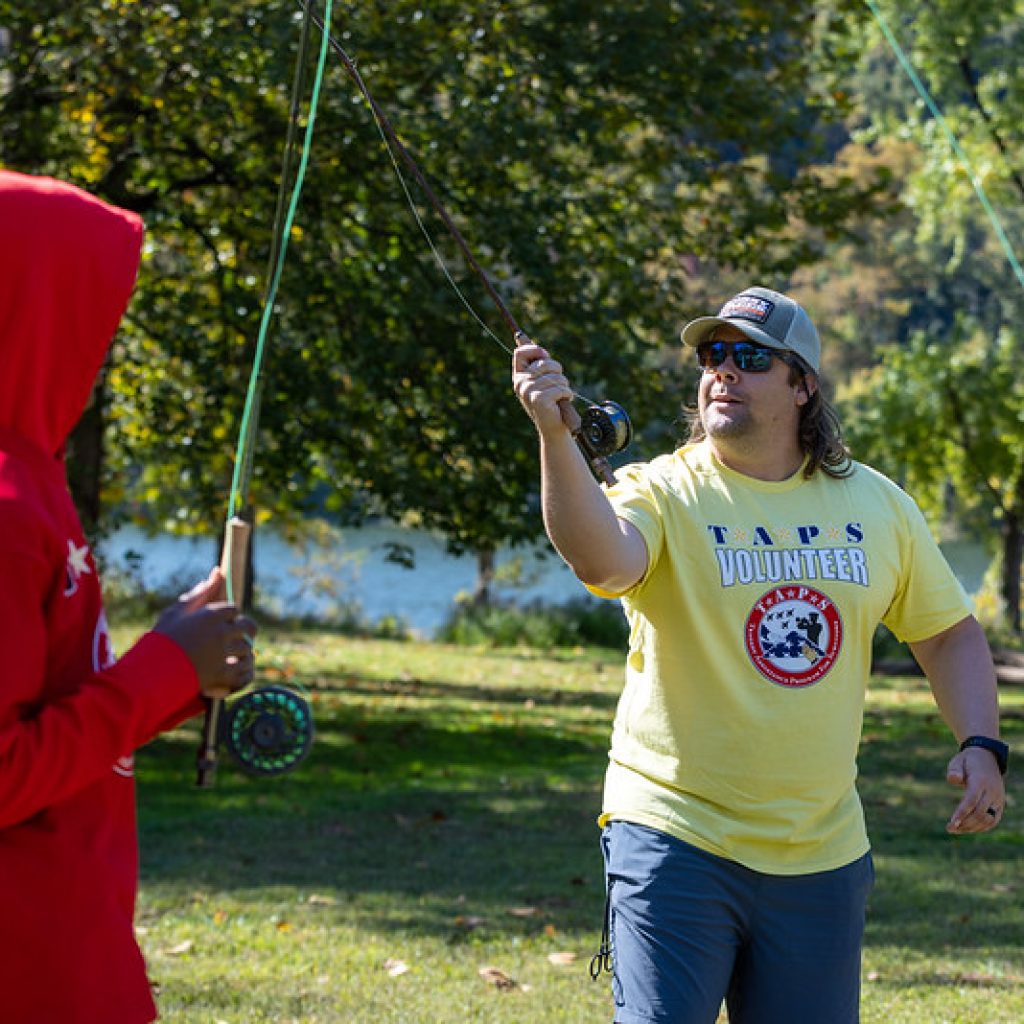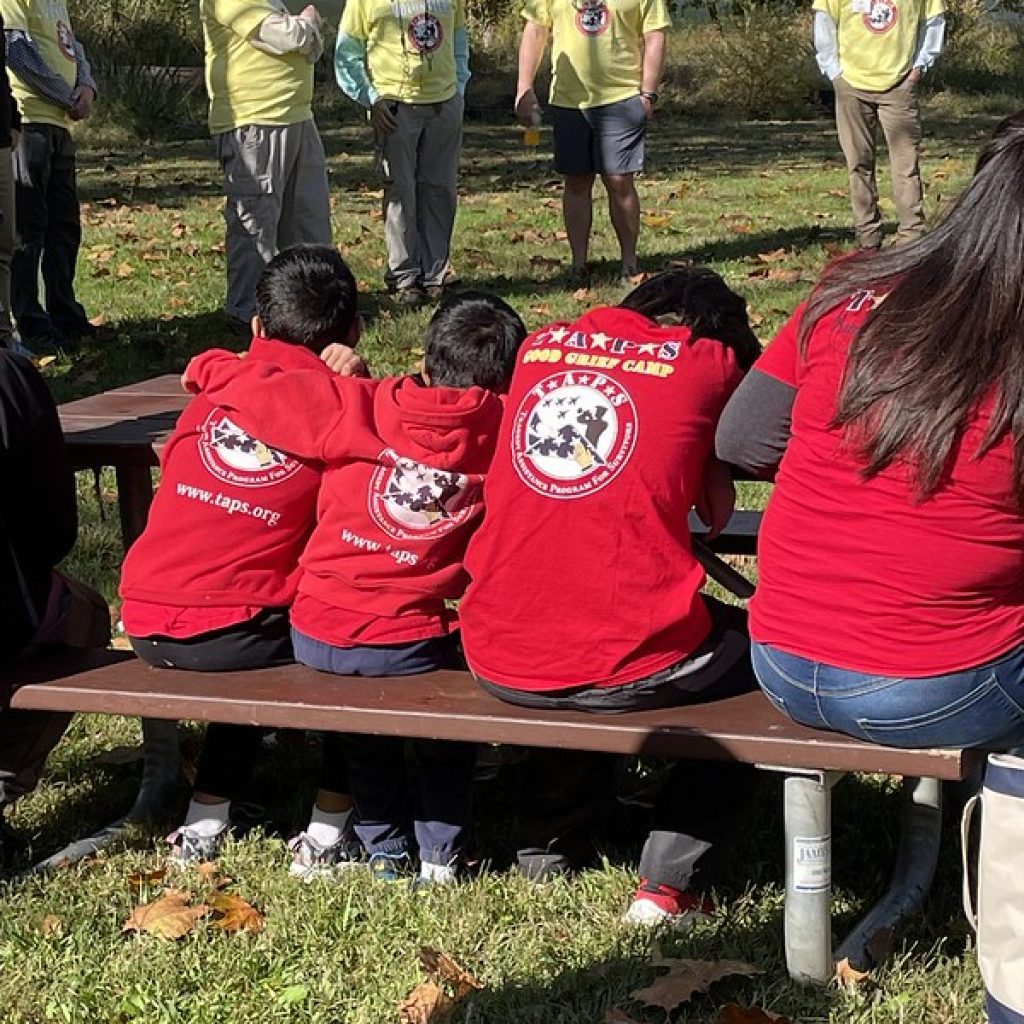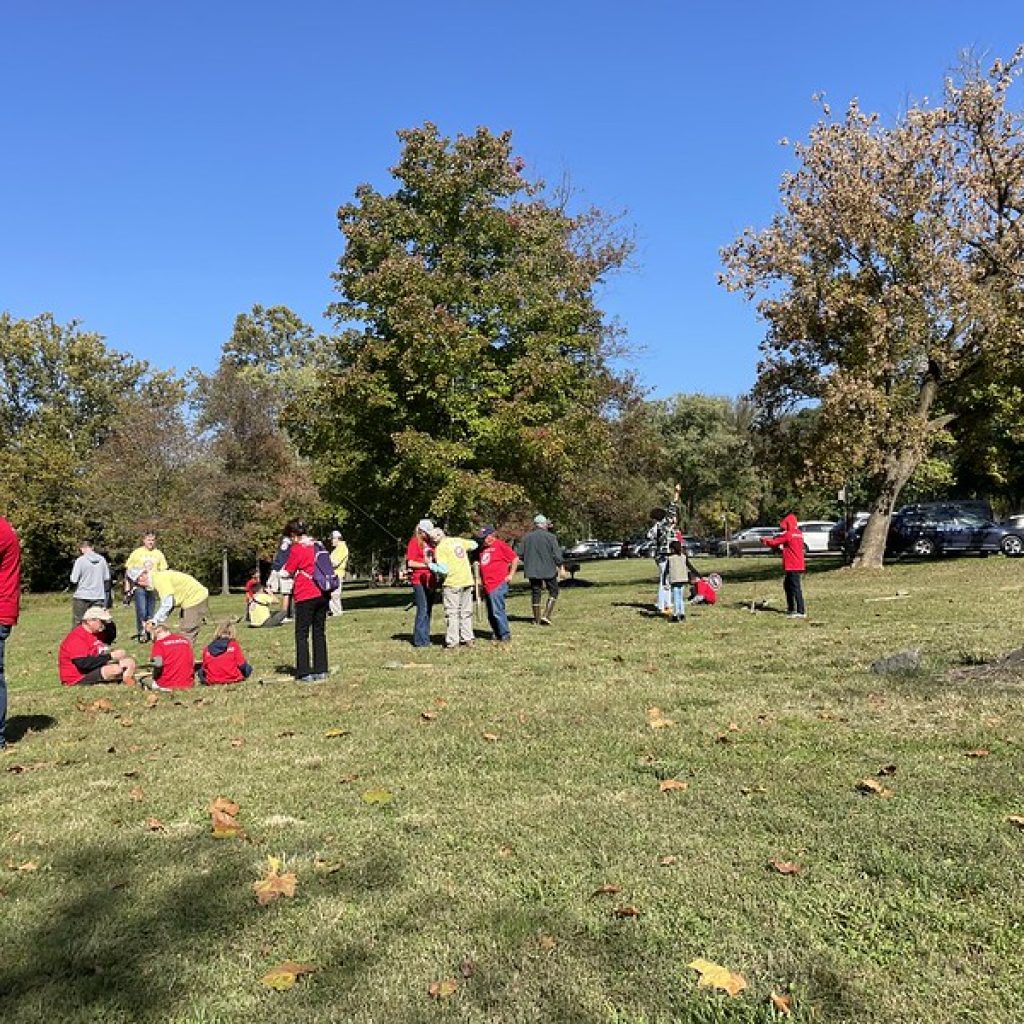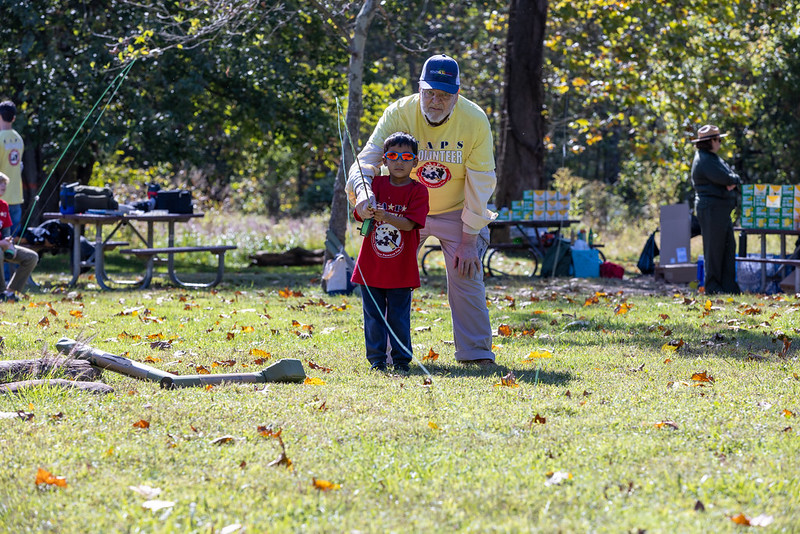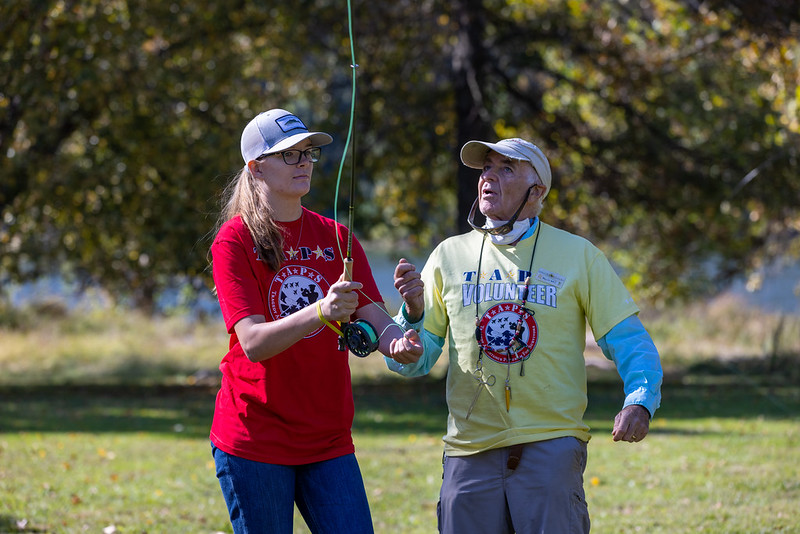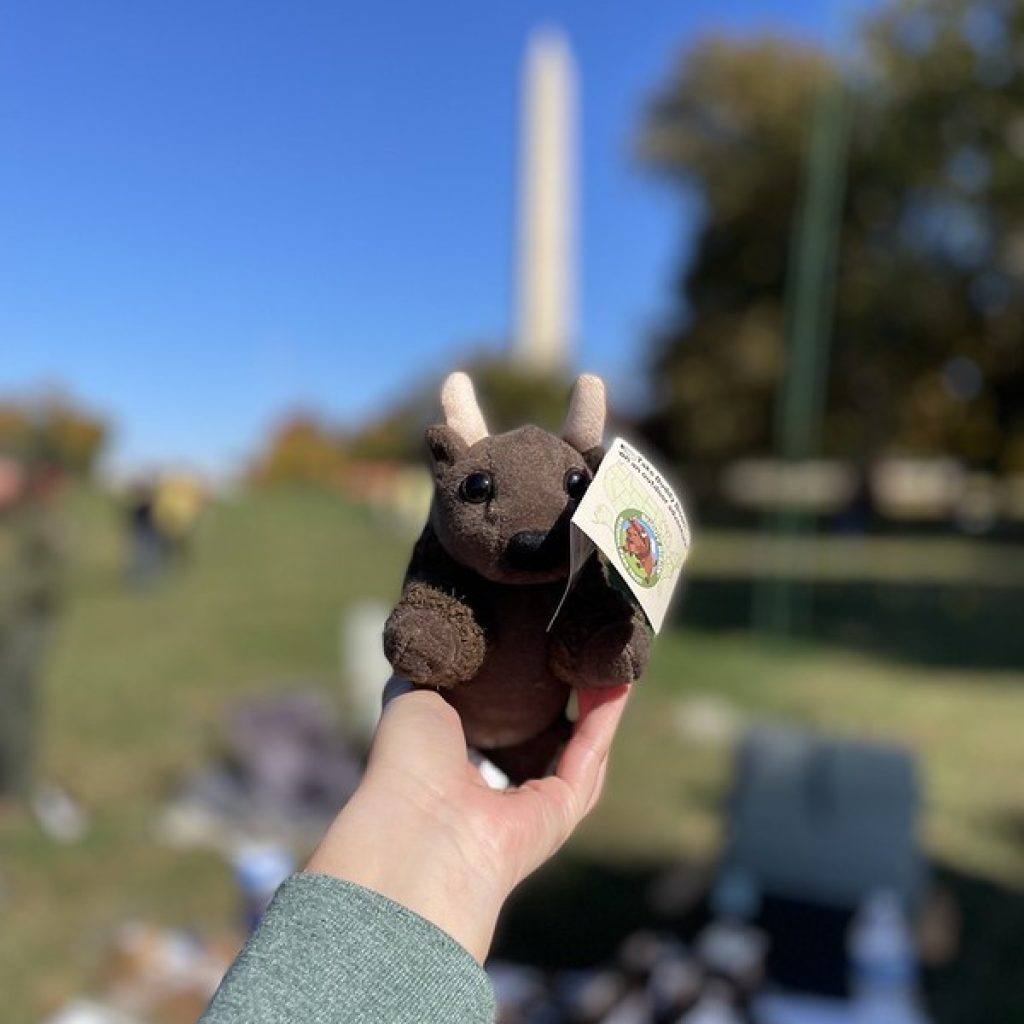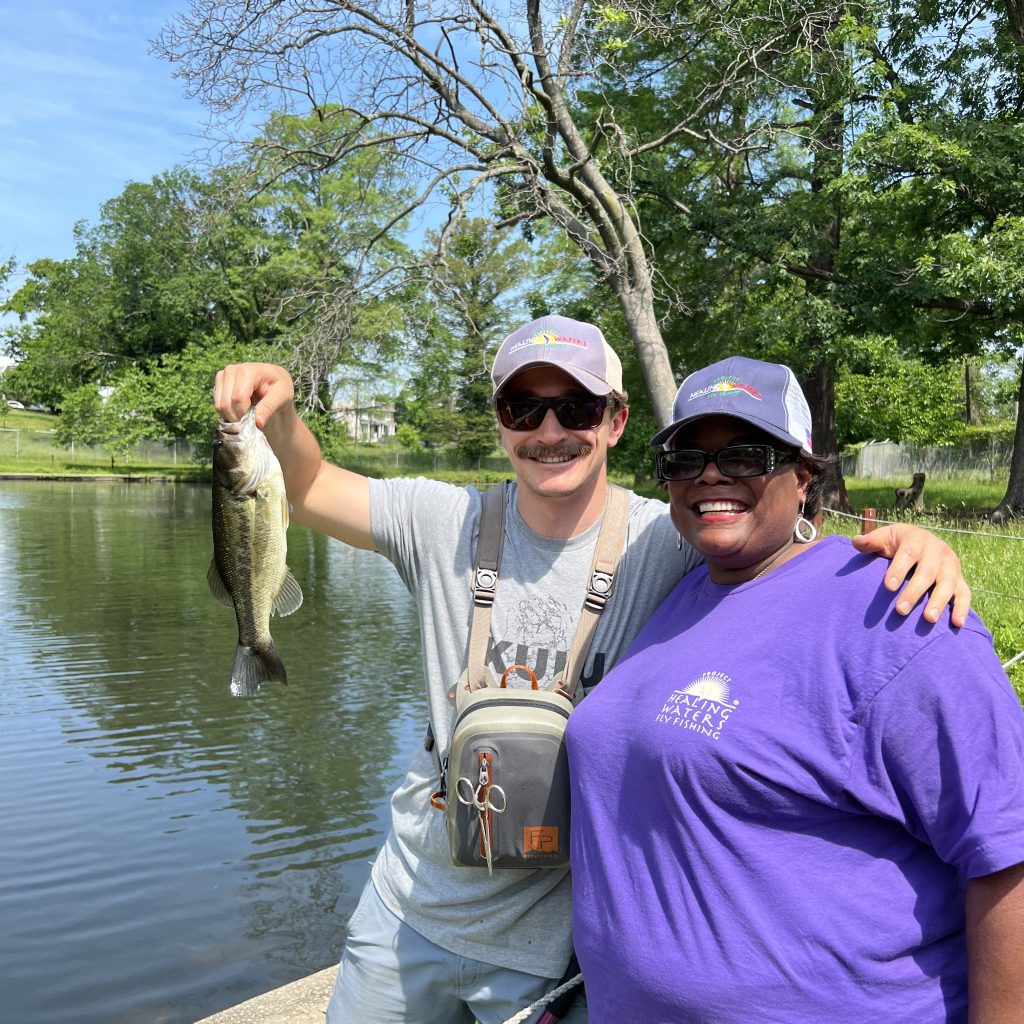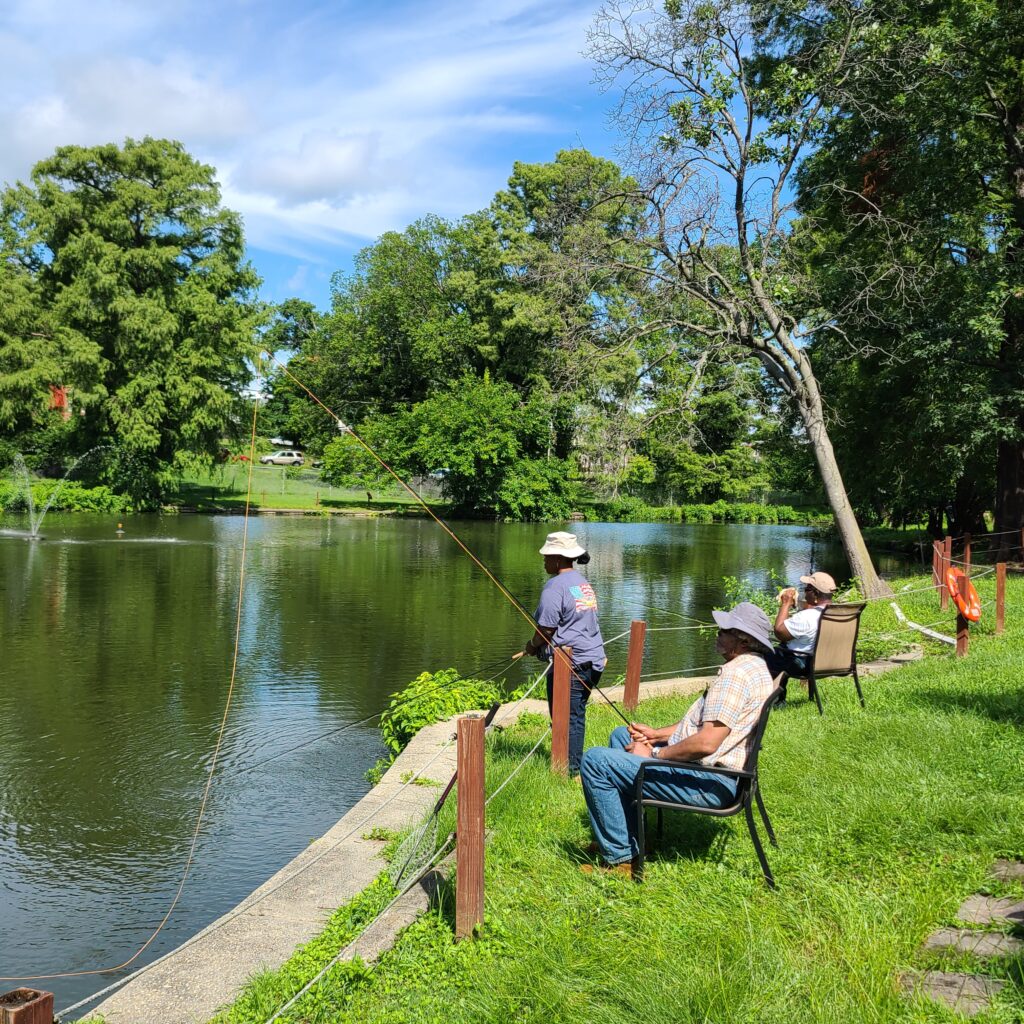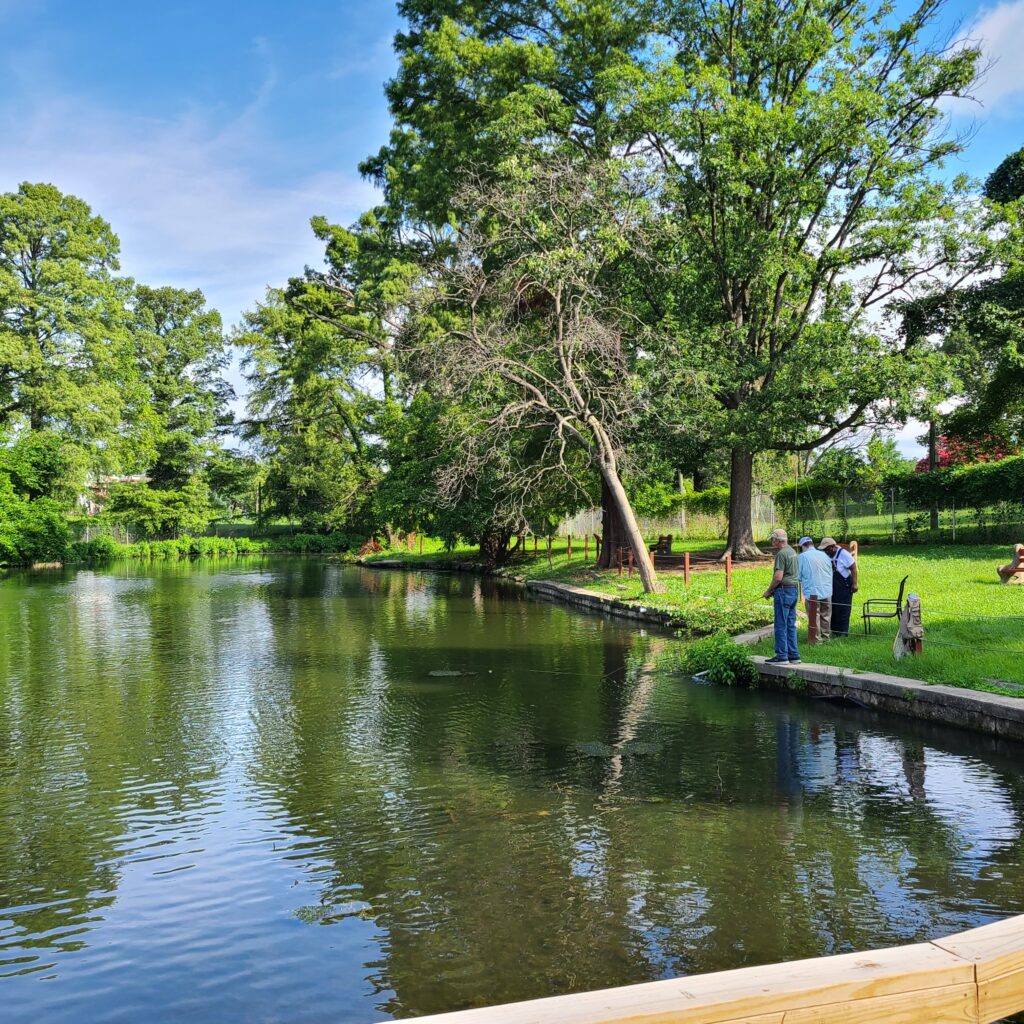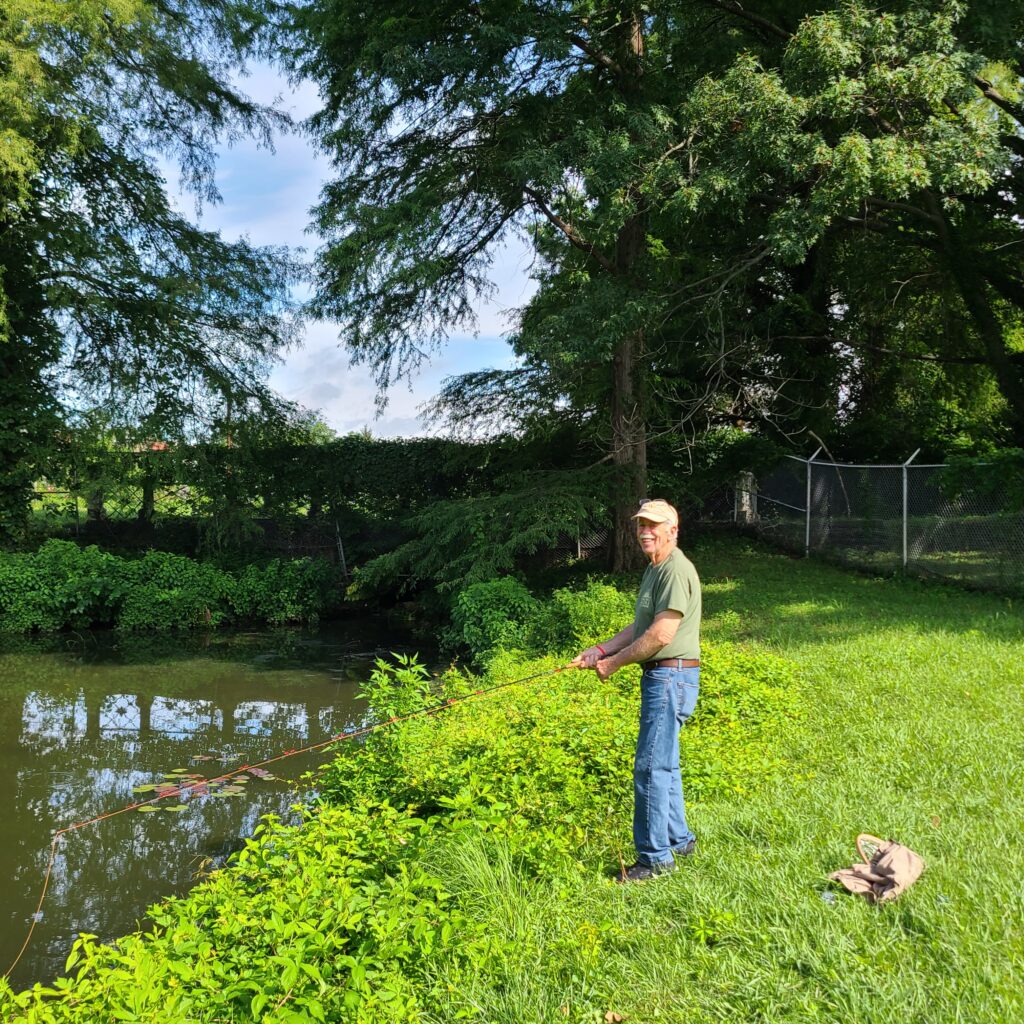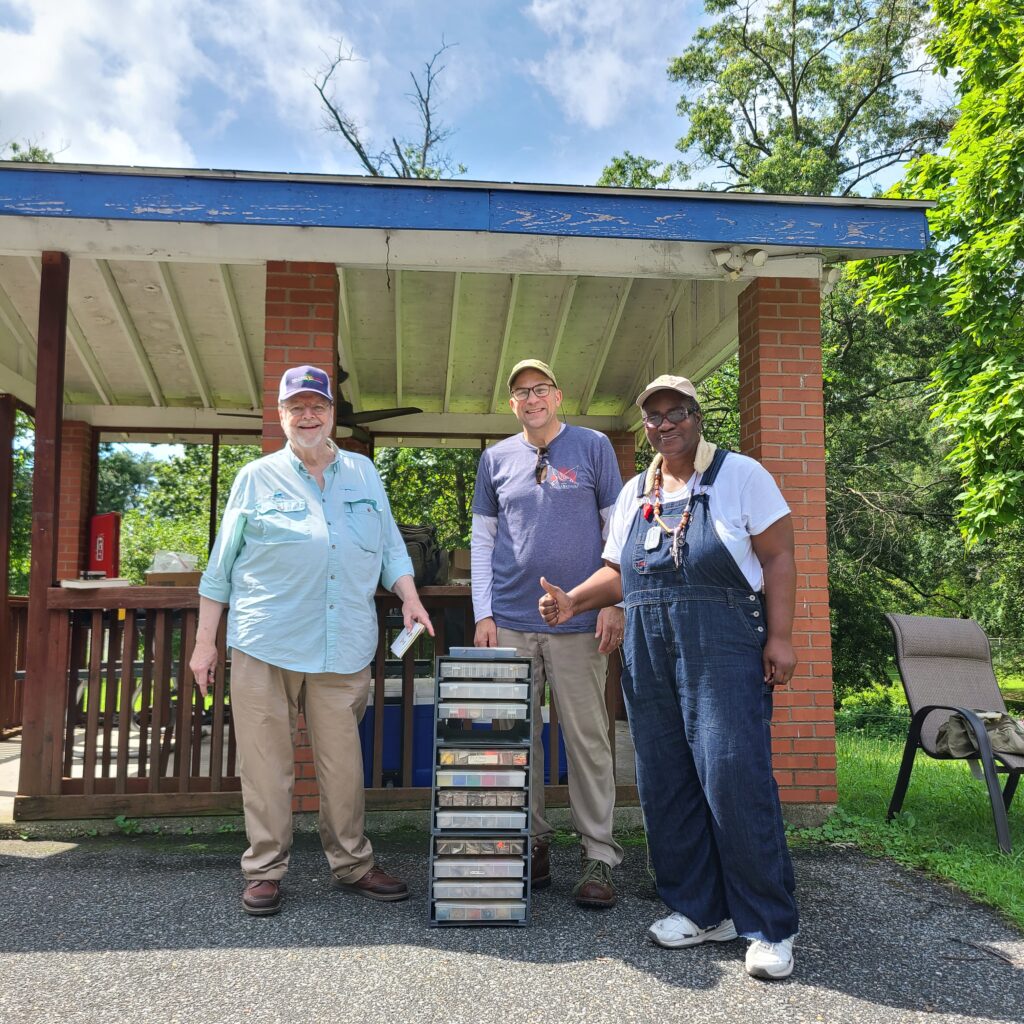Archives
Potomac Shad – Fun at Fletcher’s Cove
June 4, 2023
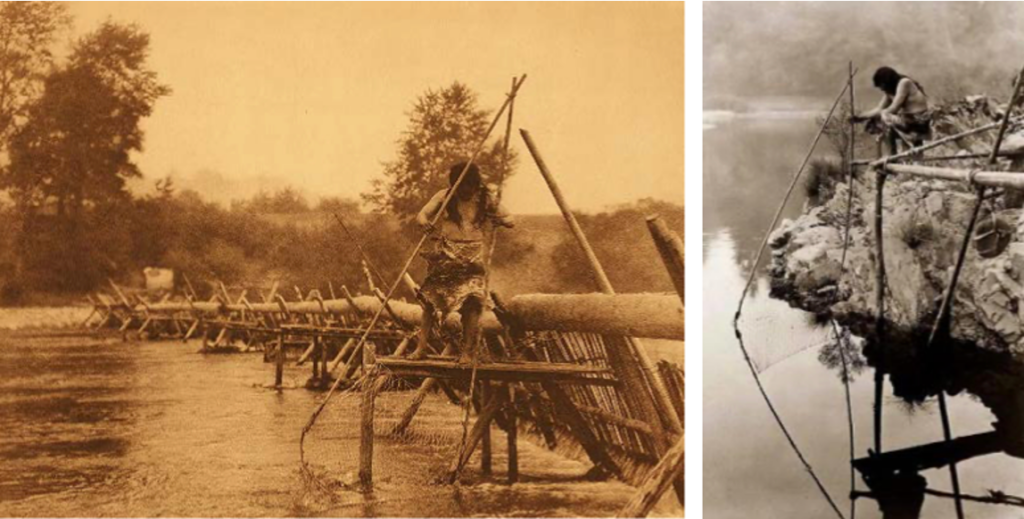
May 20th, 2023
By Tim Metzger
The American and Hickory Shad run in the Potomac River is somewhat of a bittersweet story. In my opinion, shad are not that smart of a fish, relatively speaking, and they fight pretty hard, making for an attractive combination for the average angler such as myself. The 10,000-mile journey some of these fish take after wintering in Florida is not what it once was, but the shad presence is notable in the history of the United States and the Potomac River.

- The 1608 General History of Virginia states the shad were ‘…lying so thicke with their heads above water, as for want of nets we attempted to catch them with frying pans.‘ In the 1830s it was not uncommon for fishermen to pull 4,000 shad or 300,000 herring in one single haul. Many know the story about how shad saved George Washington and the Continental Army at Valley Forge in 1778, as their “delivery” saved his troops from starvation. According to the 1938 account of Harry Emerson Wildes “dramatically, the famine completely ended. Countless thousands of fat shad, swimming up the Schuylkill to spawn, filled the river….Soldiers thronged to the river bank….the netting continued day after day…until the army was thoroughly stuffed with fish.”
- George Washington was one of the first watermen on the Potomac and his fishery helped keep Mount Vernon viable. There are historical writings that he was paying six shillings a piece for shad (~$30 today). That is a lot considering Washington was known to be frugal!
- Shad influenced the American Civil War, when, at “the decisive battle at Five Forks (Va). On April 1, 1865 (CSA General) Rosser had paused to scoop up some succulent shad from the Nottoway River. He invited George Pickett and Fitz Lee to join him for lunch.”
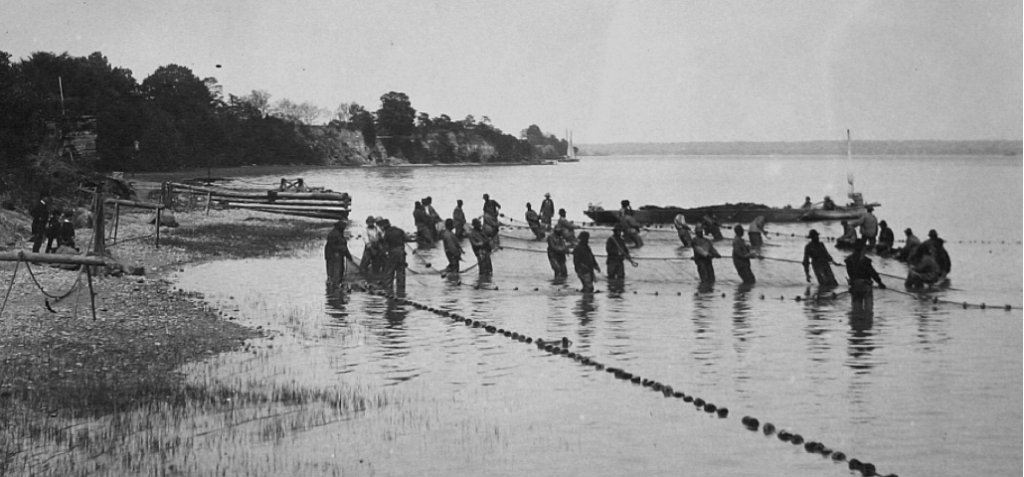
In the late 1950s-1970s the history of Shad in the Potomac becomes a lot less pleasant. The upper freshwater tidal Potomac in the Washington metropolitan area receives the river’s largest wastewater and stormwater inputs, deposits that were (and are) often lethal to most fish, and particularly so to migratory fish returning to that area to spawn. Major migratory fish kills which occurred in the early 1960s are one of the major reasons that President Lyndon Johnson declared the Potomac River a “national disgrace.” Migratory fish were also subject to over-harvest and loss of spawning habitat, the latter principally through the construction of dams. Despite significant improvements in water quality since the 1970s and a river harvest moratorium in effect since 1982, the American shad stocks had not recovered in the Potomac River by the mid-1990s.
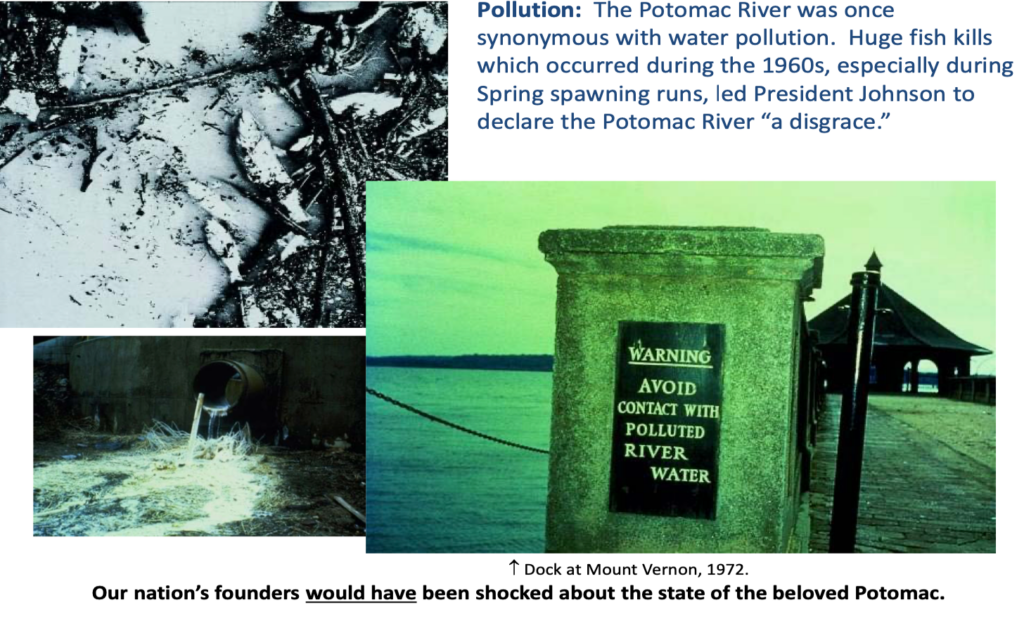
While the shad population in the Potomac watershed is not back to its former glory, some major steps have been taken to give the species a fighting chance, and some rebound has occurred. Factors contributing to the rebound include:
- The Potomac has high potential for shad based on location, bottom topography, and temperature.
- Water quality improvements in the last decade.
- Shad harvest moratoriums.
- An important milestone for the fish passage restoration project was accomplished in January of 2000 with the completion of the fishway at the Little Falls (Brookmont) Dam by the US Army Corps of Engineers (North of Chain Bridge).
- Shad stocking programs: In 1995 an effort began by a coalition of federal, state, regional, and local agencies and nonprofit groups, organized as a Task Force22, to open historic spawning and nursery habitat for native and anadromous fishes in the Potomac River. An eight-year American shad stocking project began that same year which was designed to imprint shad to the historic spawning and nursery waters and to help rebuild Potomac River shad stocks. The stocking of one million shad fry was the annual goal.
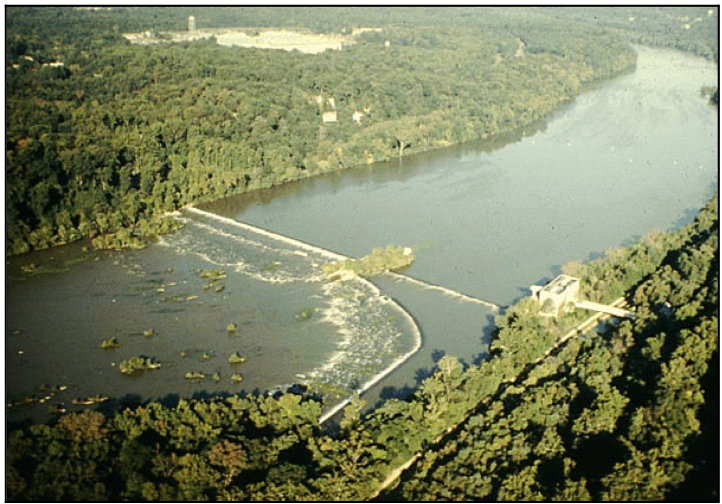
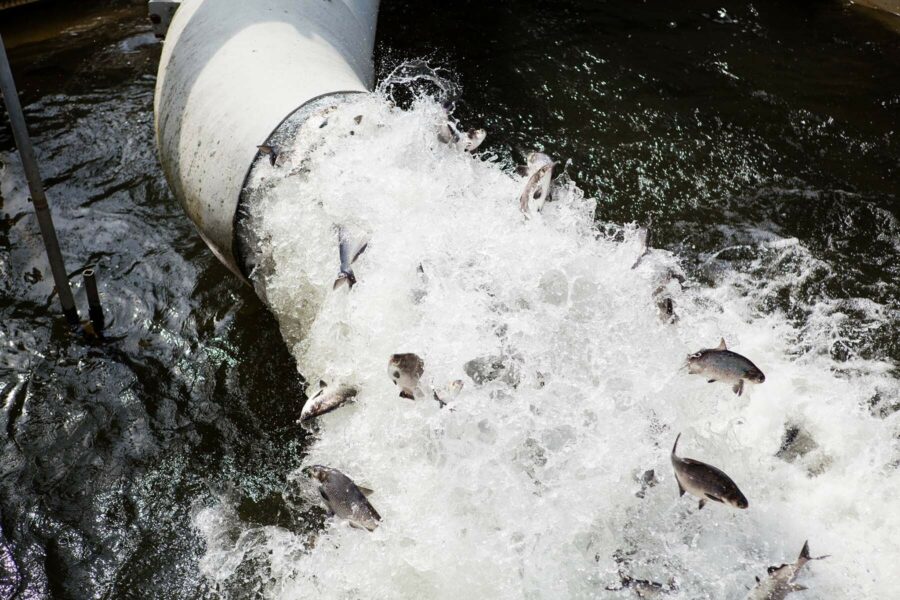
I realize that was more history than you expected from the regional events blog, but I collected this information for a Zoom meeting the DC Program had during the 2020 days of virtual meetings. Fast forwarding to 2023, the DC program finally organized an event to actually go shad fishing! Timing the event is a bit tough because the shad run is dependent on a lot of environmental factors. Last year, the run was still going relatively strong into May. This year, the run had slowed down significantly by May but that did not stop us from giving it a shot!
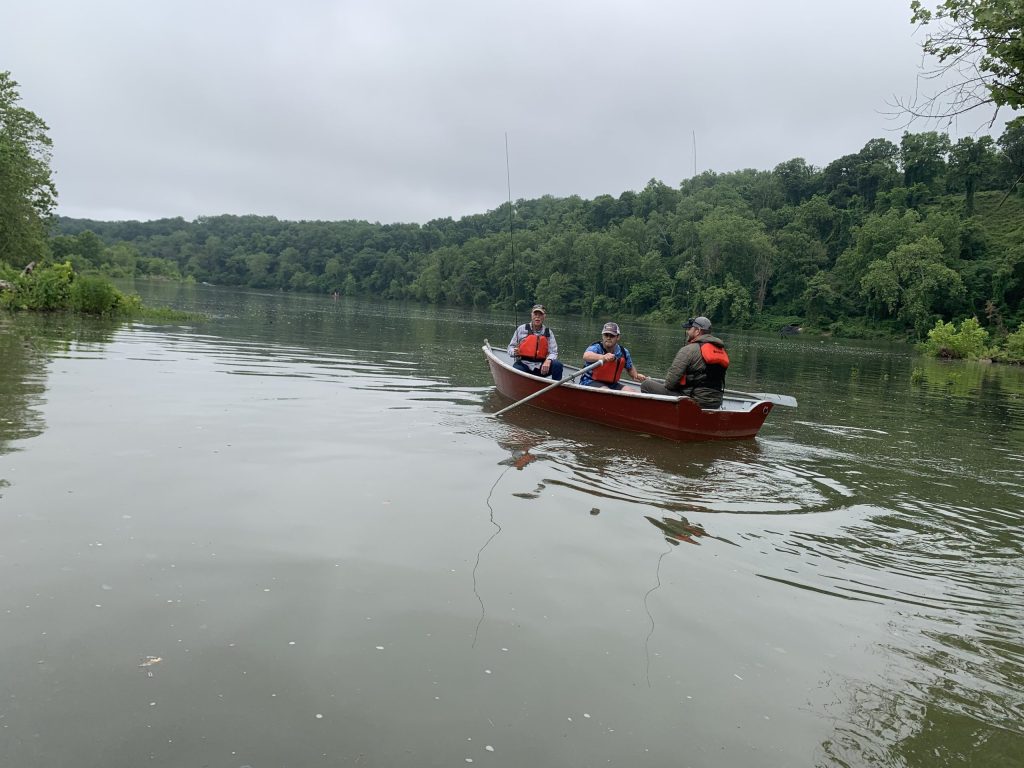
Similar to our recent successful trip to the Savage River, this event was made possible by a generous donation from the National Park Trust. I want to once again thank Ivan Levin (Director of Strategic Partnerships and Communications) and Nick Weig (Programs Coordinator) for supporting our Program. Due to the generosity of their partnership, we were able to cater the event with BBQ, and send each participant home with their own fly rod, floating and sinking line, and a box of flies with the help of our local fly shop, District Angling.
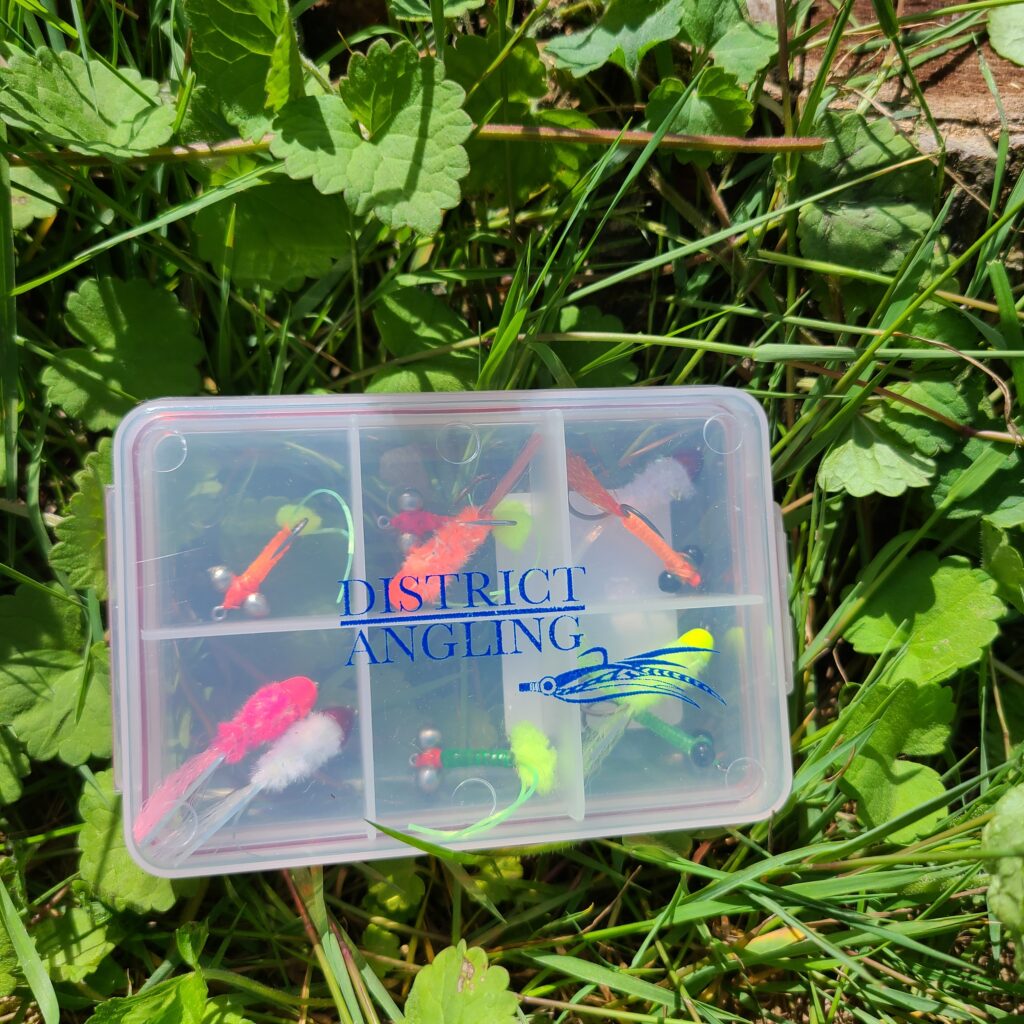
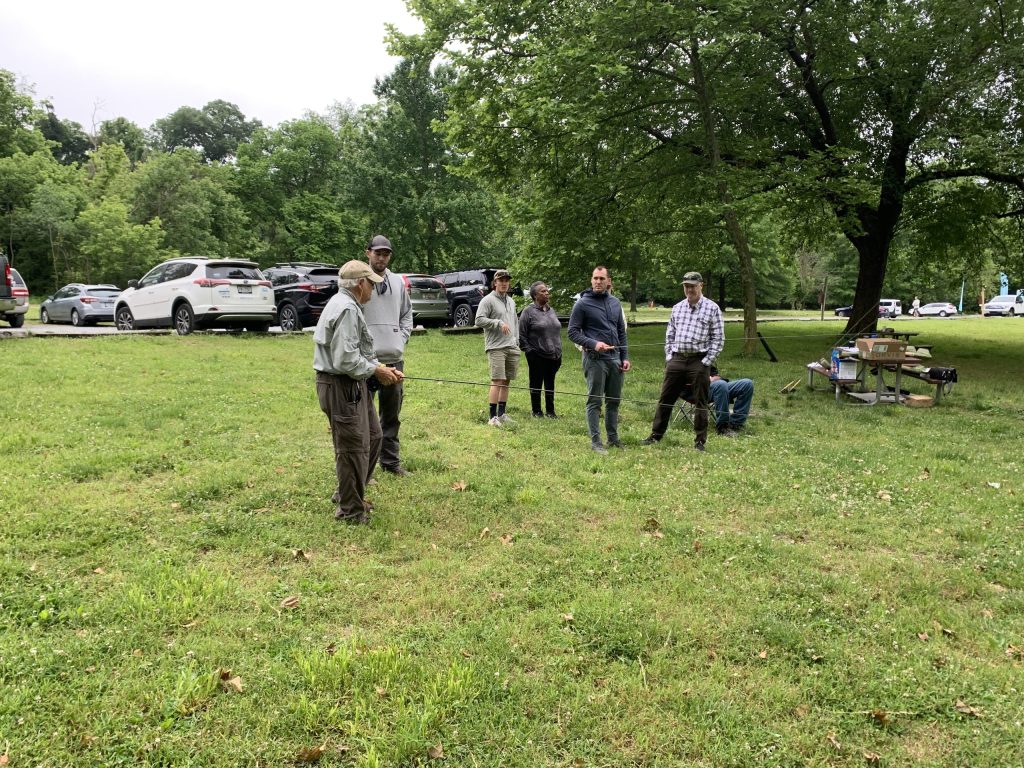

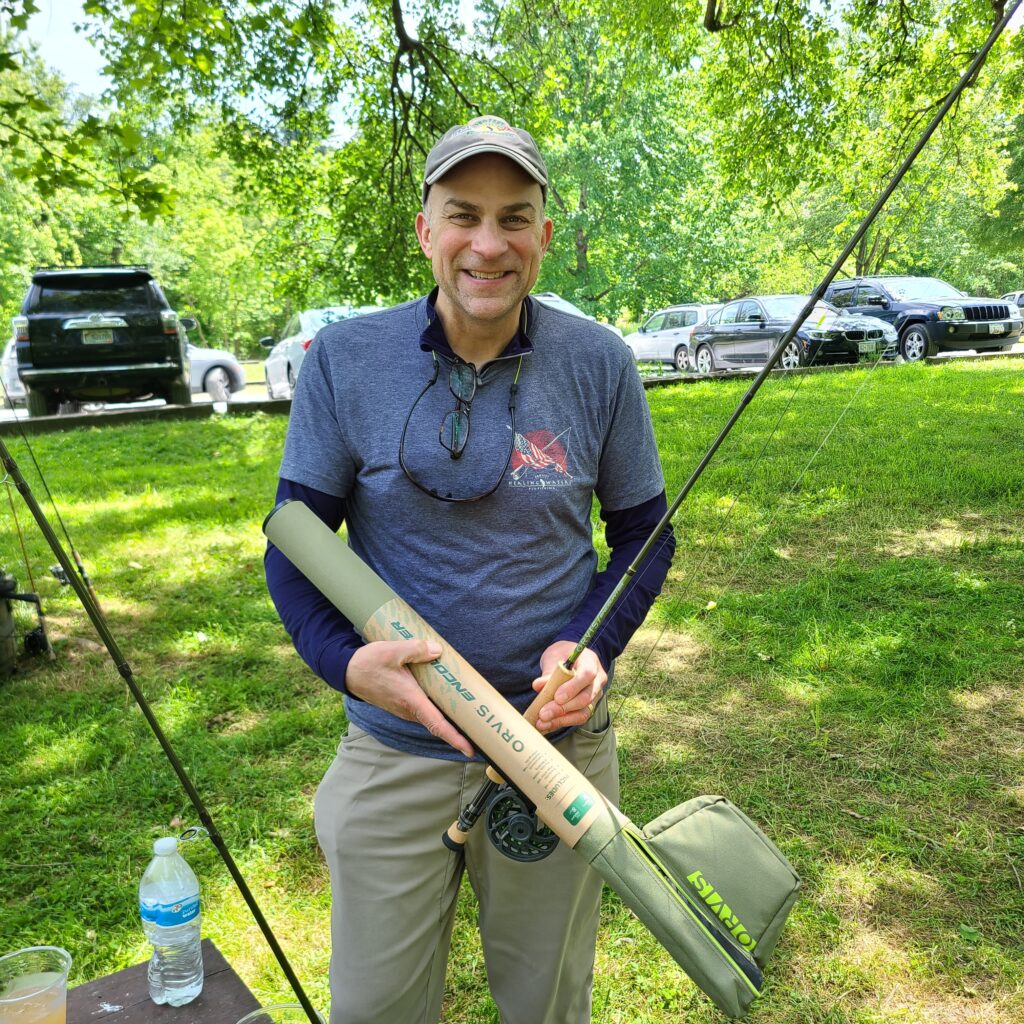
As I mentioned above we were late for the Shad run this year. We did end up catching a few blue gill in the C&O canal but that was it!
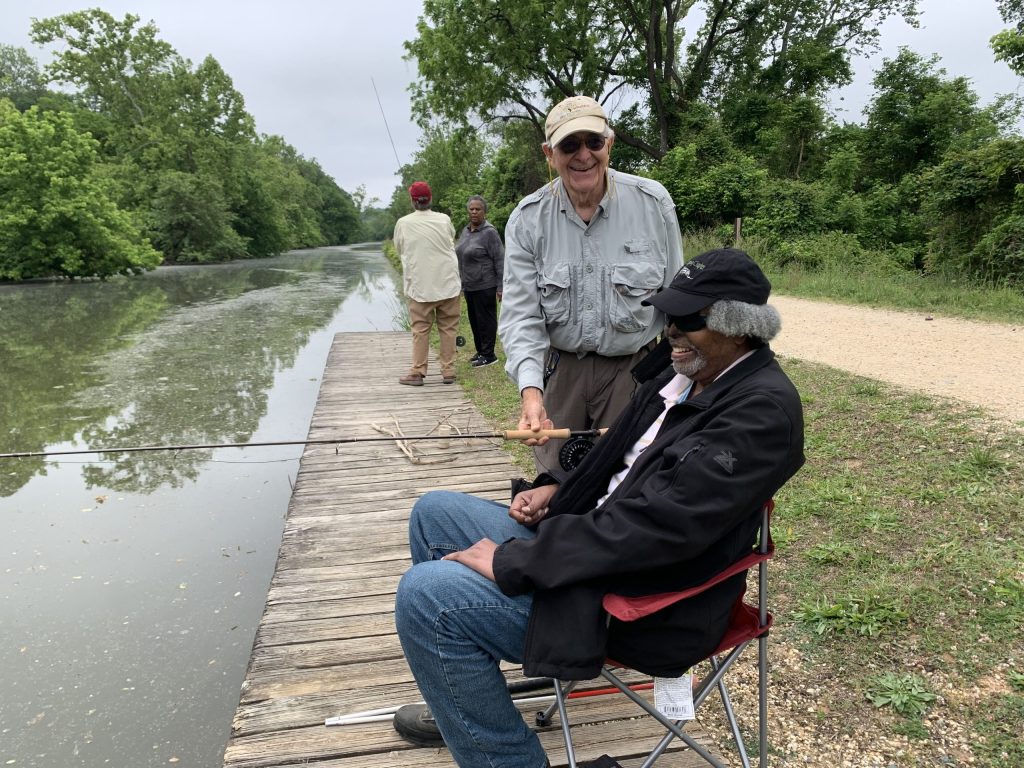
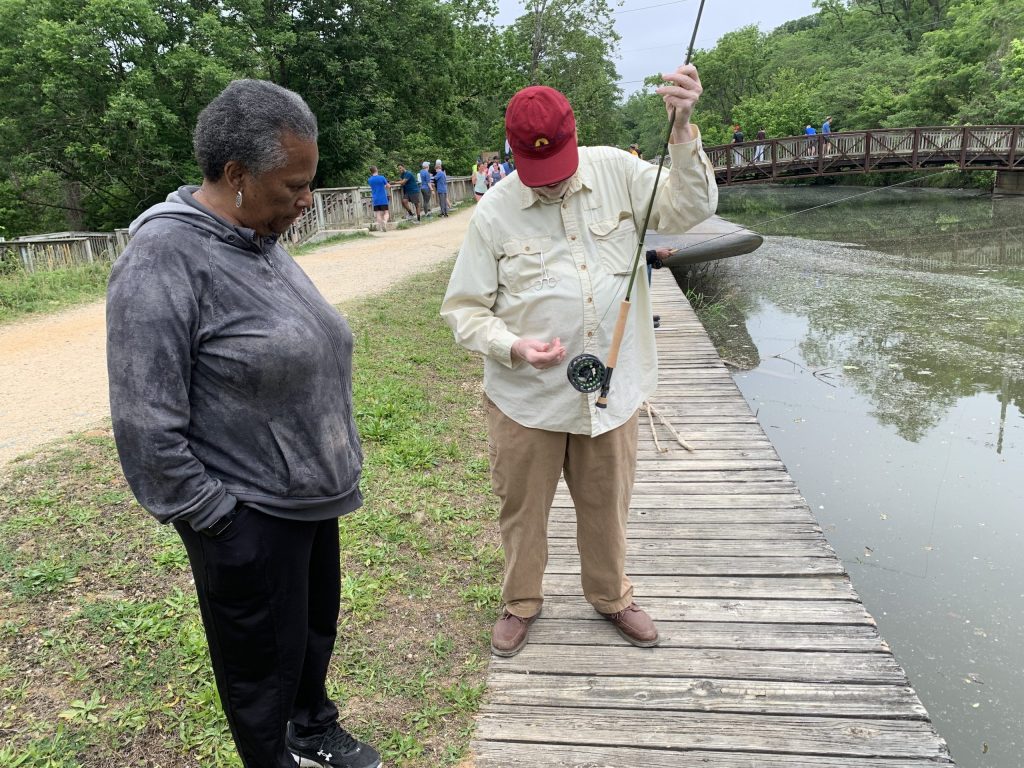
This event was also another opportunity to highlight the collaboration in the National Capital Region. DC welcomed numerous participants from Ft Belvoir and La Plata. We intentionally paired up boat teams with volunteers and participants from different programs, and everyone came away from the day making a few new friends that probably live pretty close by.
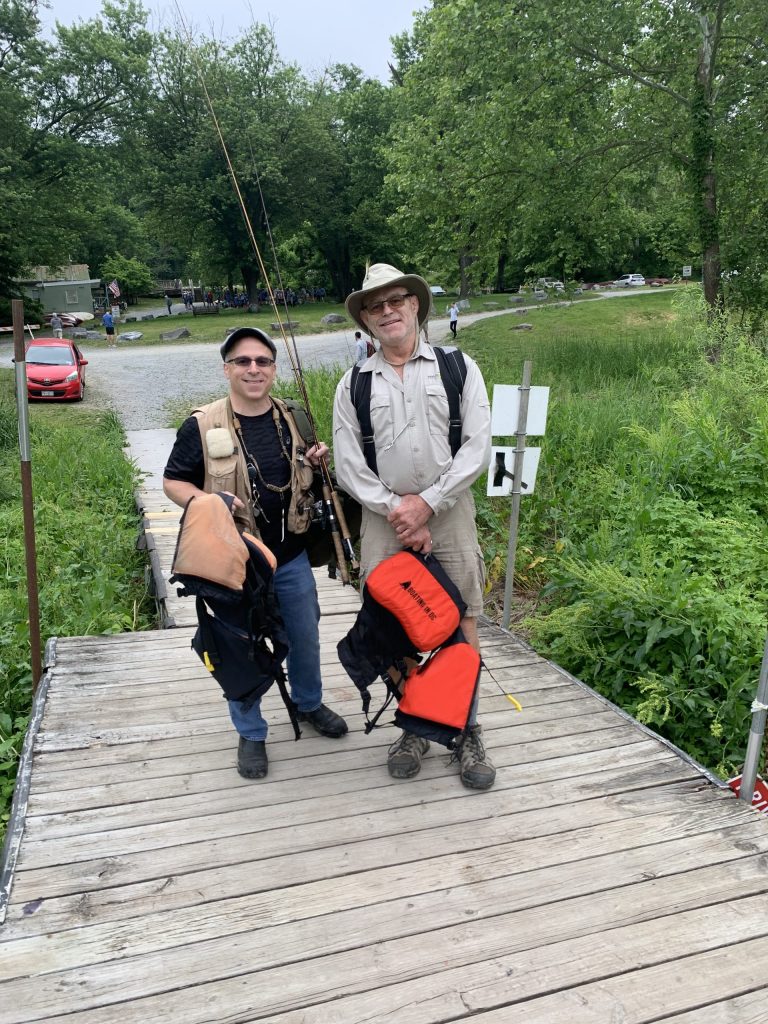
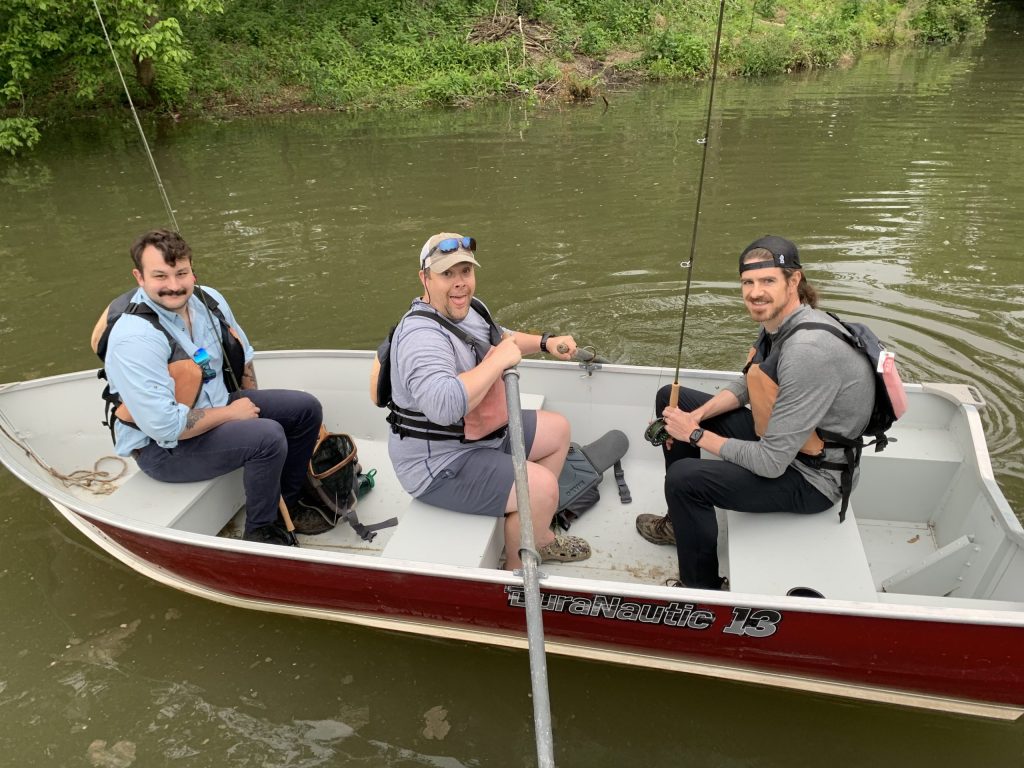
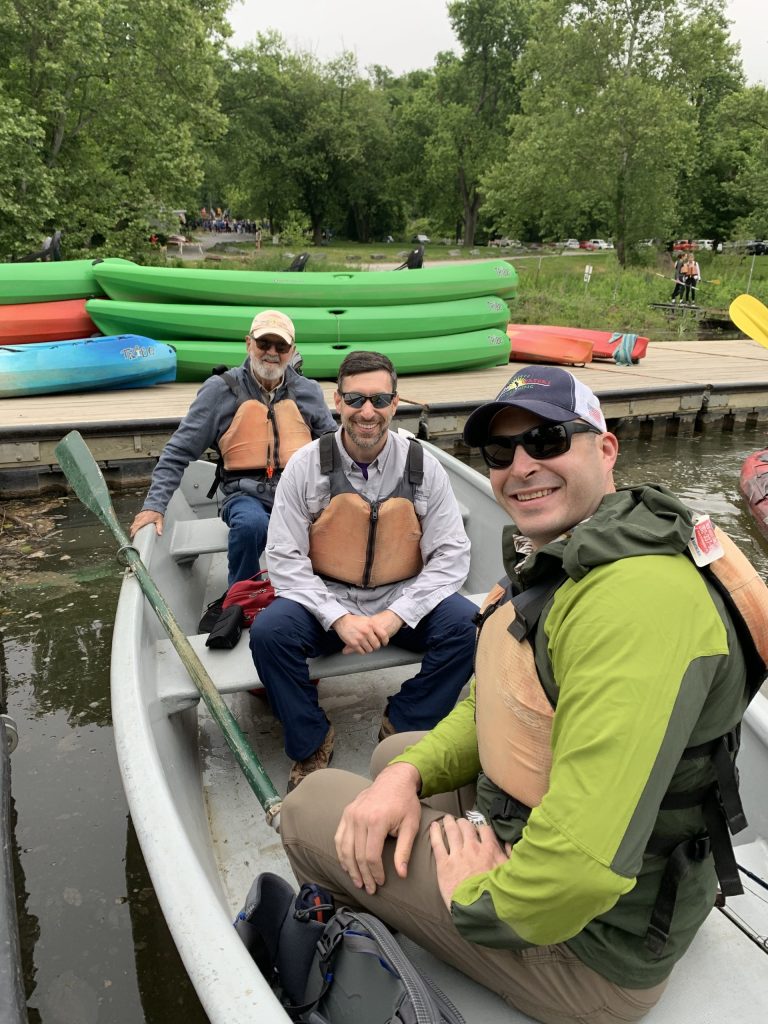
Keep an eye out for the next Capital Region collaborative events!
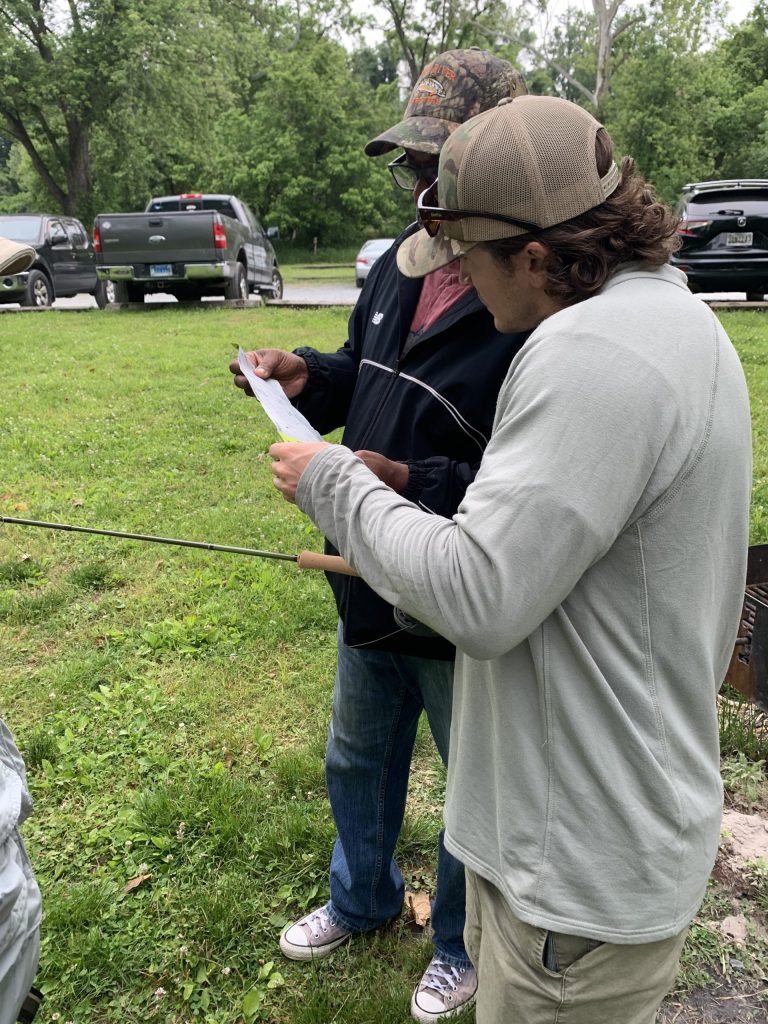
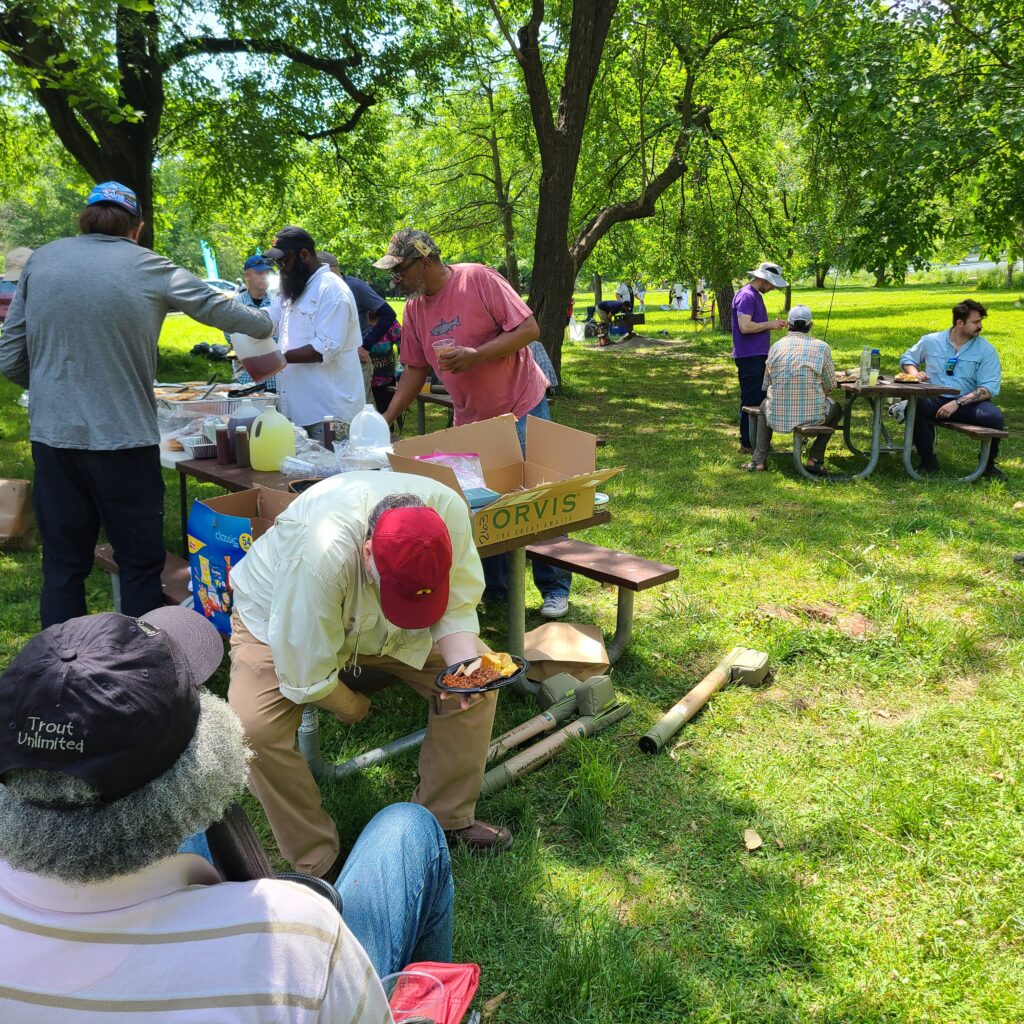
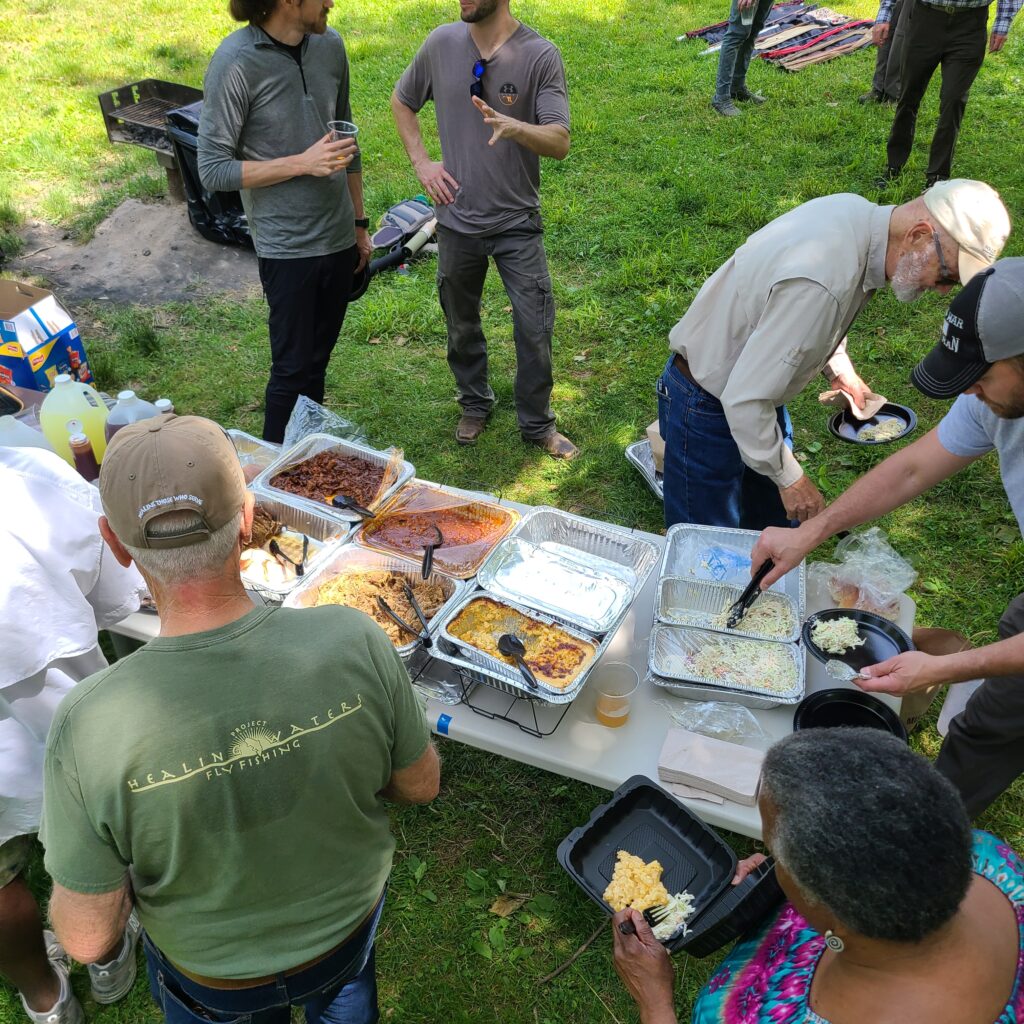
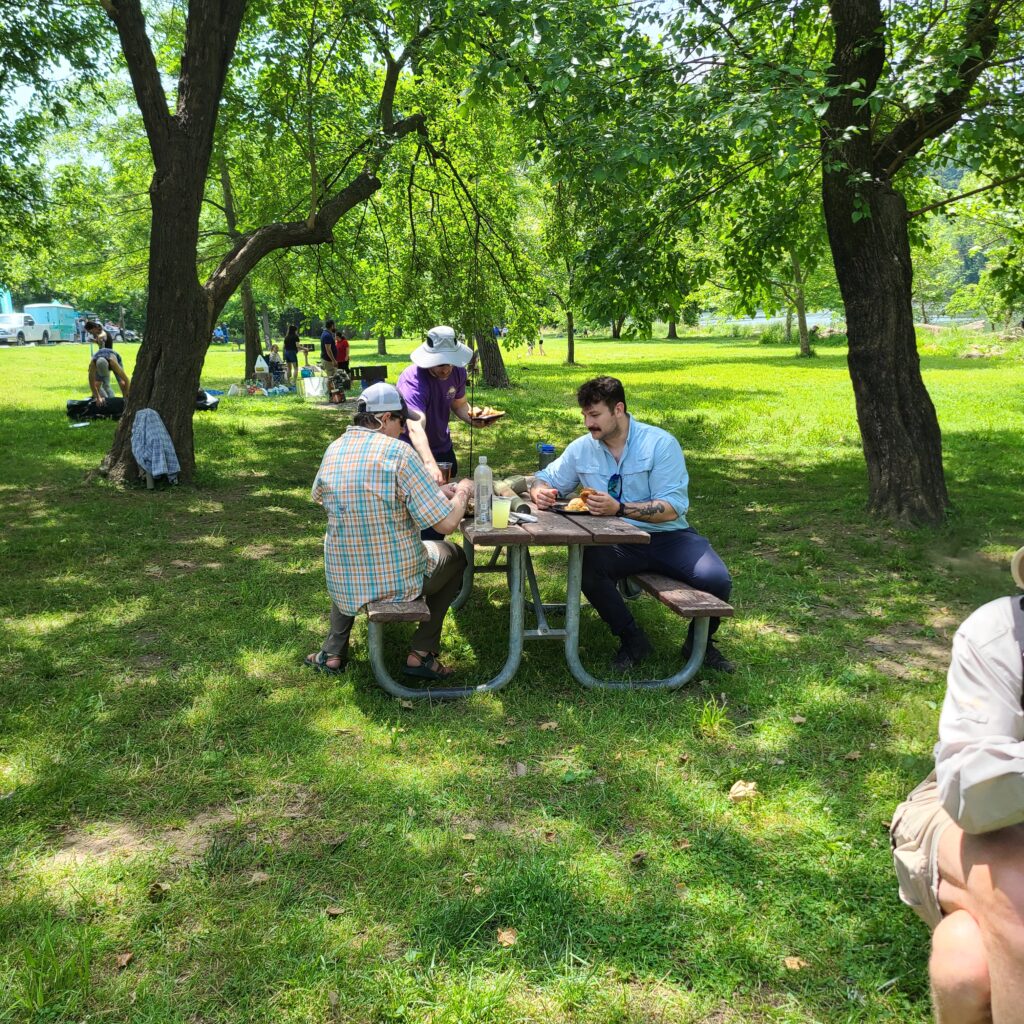
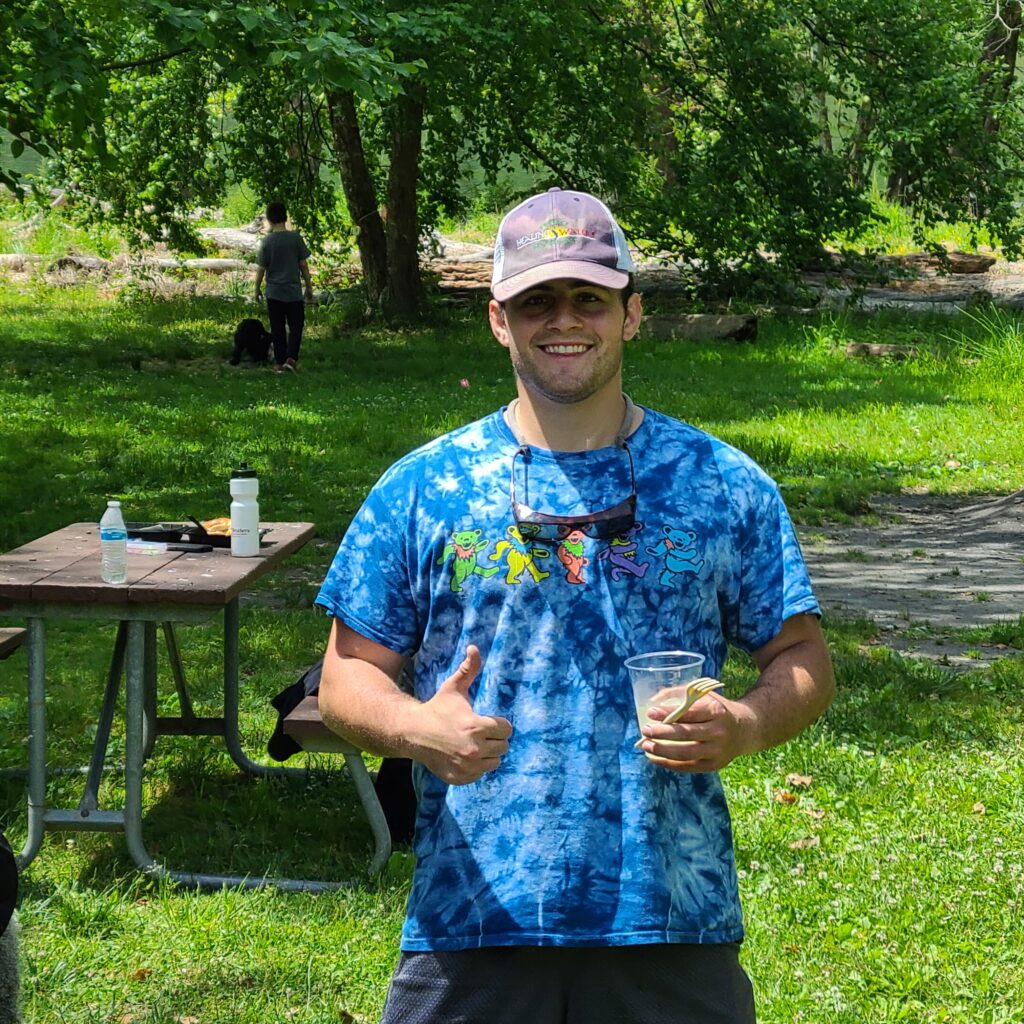
Sources: https://www.potomacriver.org | https://www.chesapeakebay.net
Latest News
Spring Browns on the Savage River
May 25, 2023
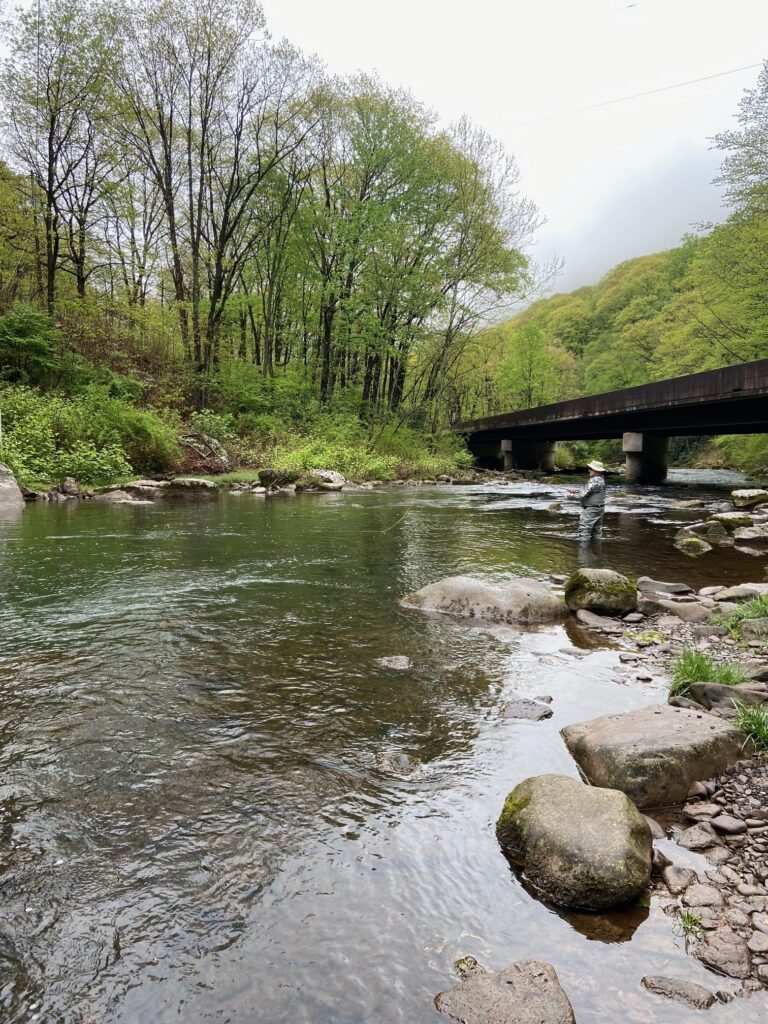
April 28th – 30th, 2023
By: Tim Metzger
Last October, the DC Program booked a weekend trip to the Savage River in Swanton, Maryland, our closest “Top 100” trout stream. This was to be our first overnight trip since before the pandemic, but due to inclement weather, the trip was postponed until April 2023. Of course, early in the week of the event, the forecast looked bleak with a 99% chance of rain on Friday and Sunday, with Saturday being hit or miss. No matter what, we knew the scenery would be beautiful and the time spent away from traffic, work, and the stressors of day-to-day life would be as therapeutic as ever.

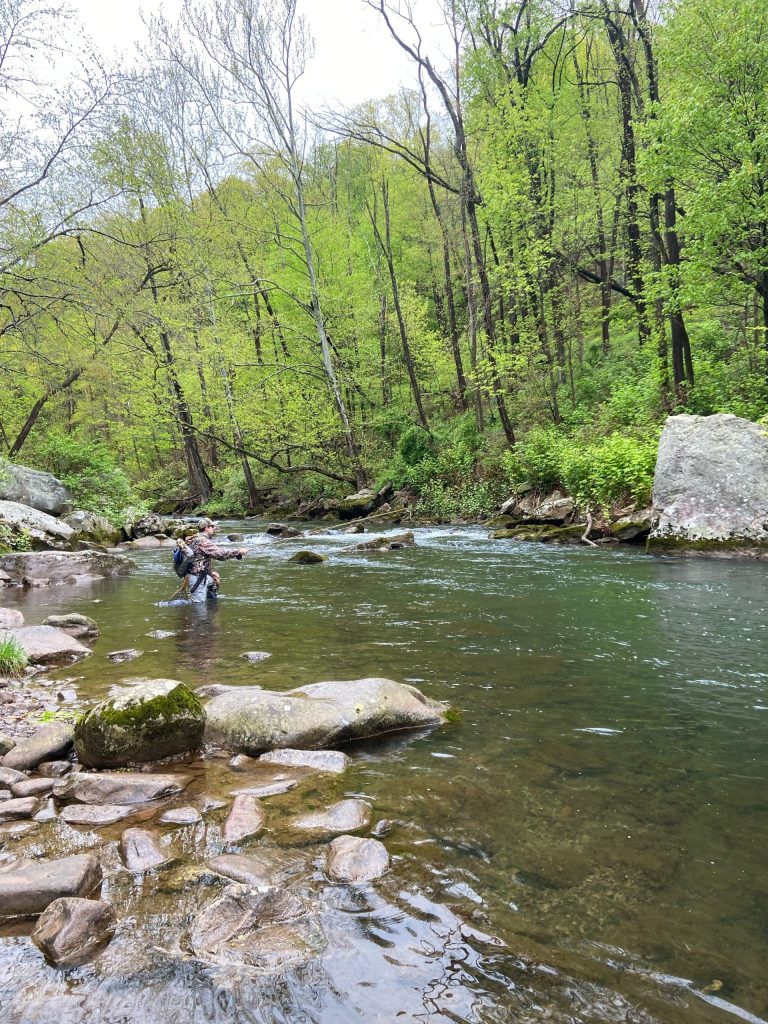
As the week went on the forecast improved slightly, and the owner of Savage River Outfitters assured me we needed to come, and that the Blue Quill hatch was ON! The Blue Quills hatch normally begins in early April in Appalachia, and these small mayflies hatch in significant numbers at a time when hungry spring trout are just beginning to take dry flies again after winter.
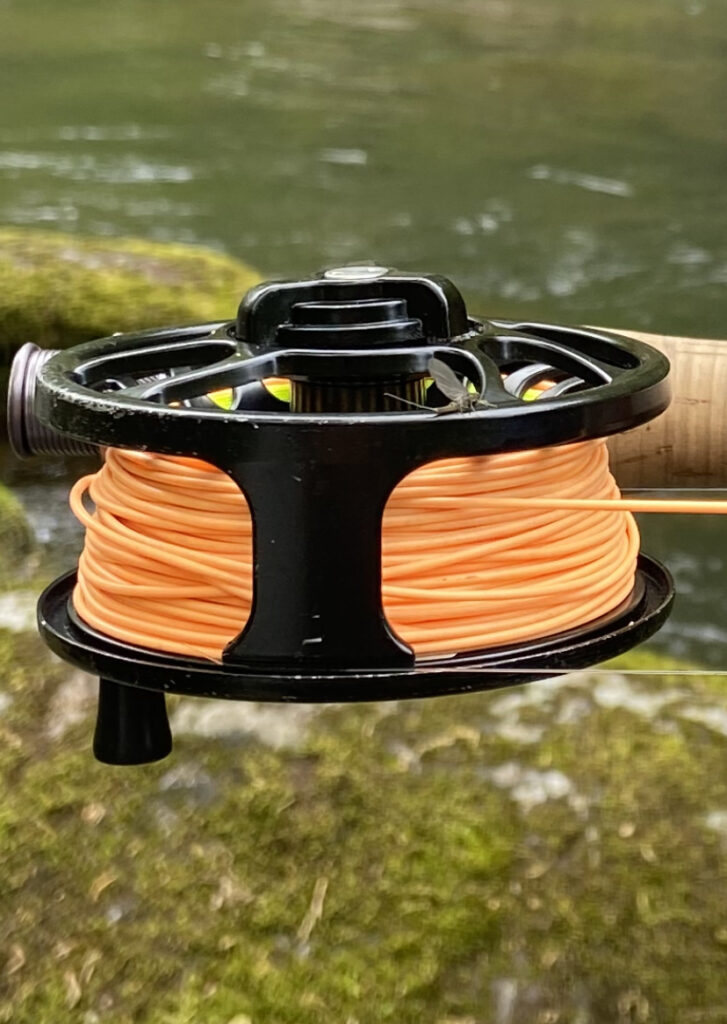
One aspect that made this trip special is that Mike Evans, the owner of Savage River Outfitters, is himself a Navy Veteran! Anyone who has visited Savage River Outfitters has probably seen Mike sporting a Navy hat. This Veteran connection made the trip just a little more impactful. Another special part of this trip is that it demonstrates the continued commitment from the National Capital Region Programs to share events across Programs. DC was honored to share this trip with a participant from Fort Belvoir, and not only was he the life of the party, but he was a ringer with the brown trout too, as you will see below!
The group arrived Friday afternoon to rainy conditions, as the forecast predicted. The water temperature was pretty cold and we were nervous things may not pick up. Nobody caught fish Friday afternoon, but everyone was well-fed and well-rested for the following day. Saturday morning the forecast was spotty, but we finally caught a break. Not too cold, sun poking through the clouds, water temps rising slightly, and some Blue Quills hatching! After getting rods put together, and some quick casting lessons on the lawn, participants were paired up with guides and hit the water.
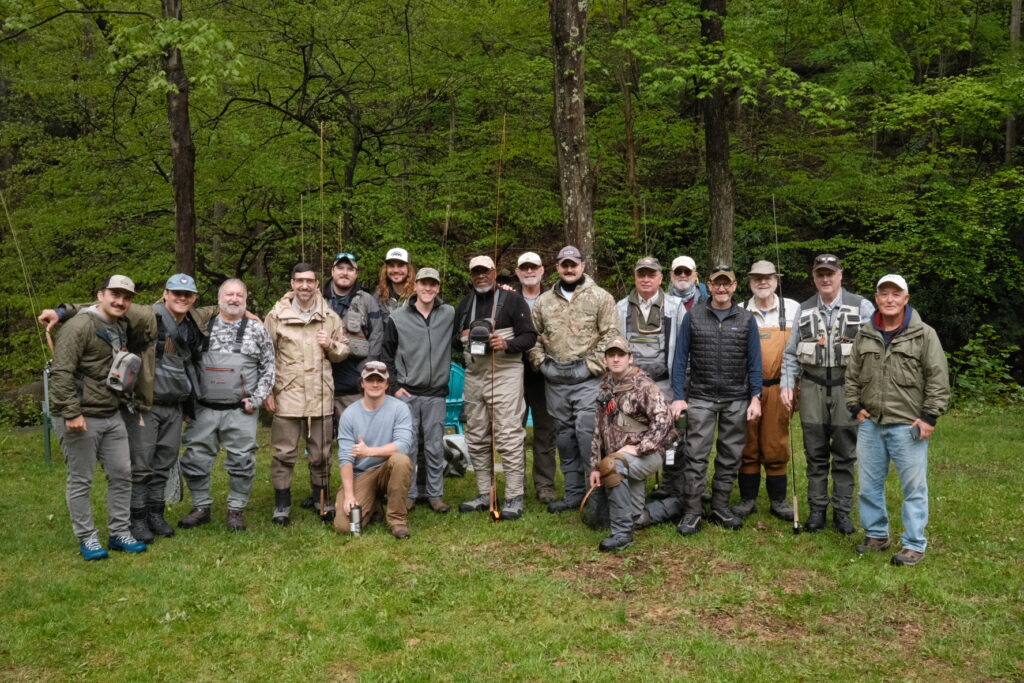

Right away it was pretty obvious it was going to be a good day – the brown trout were eating on the surface and taking nymphs.
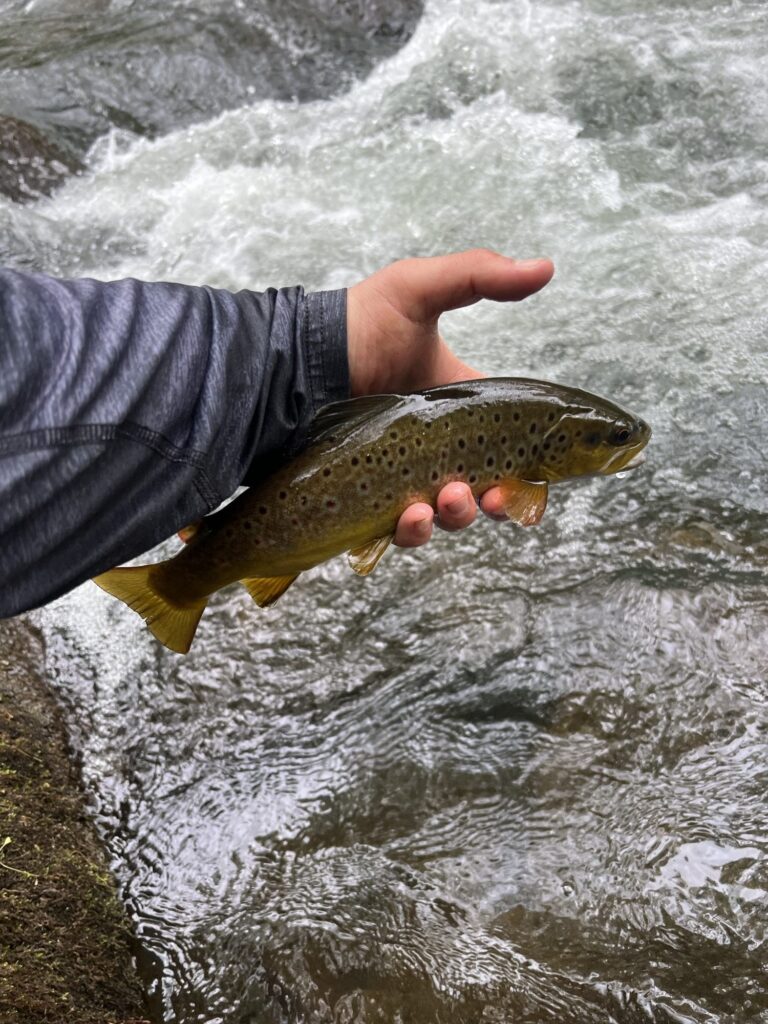
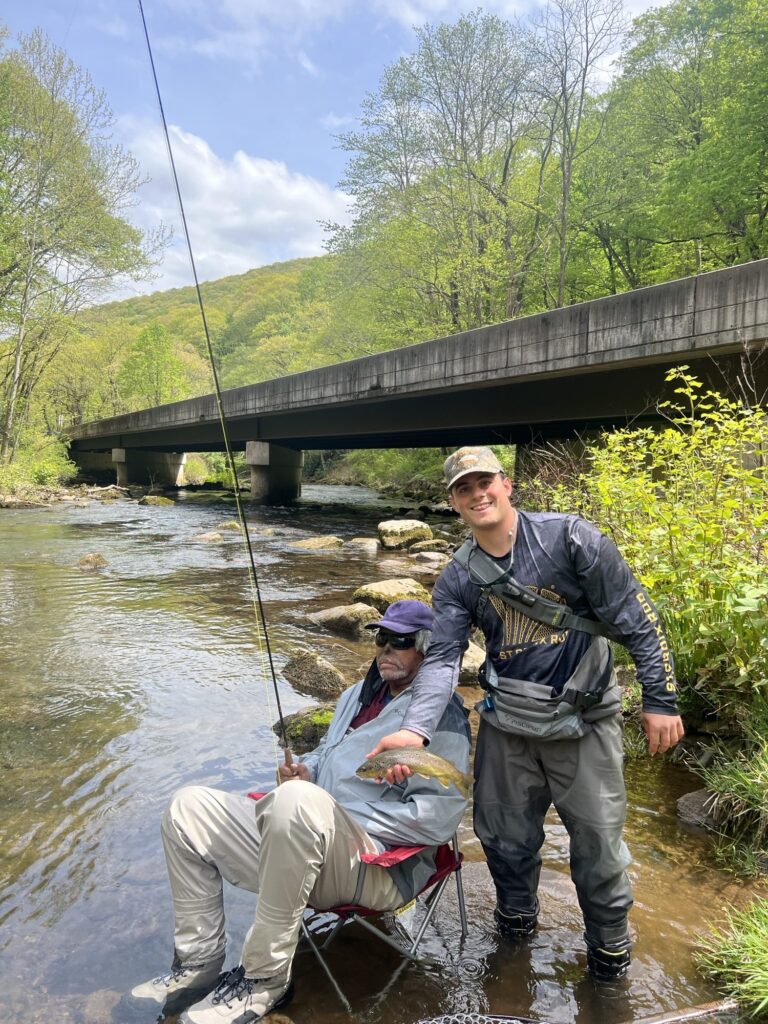

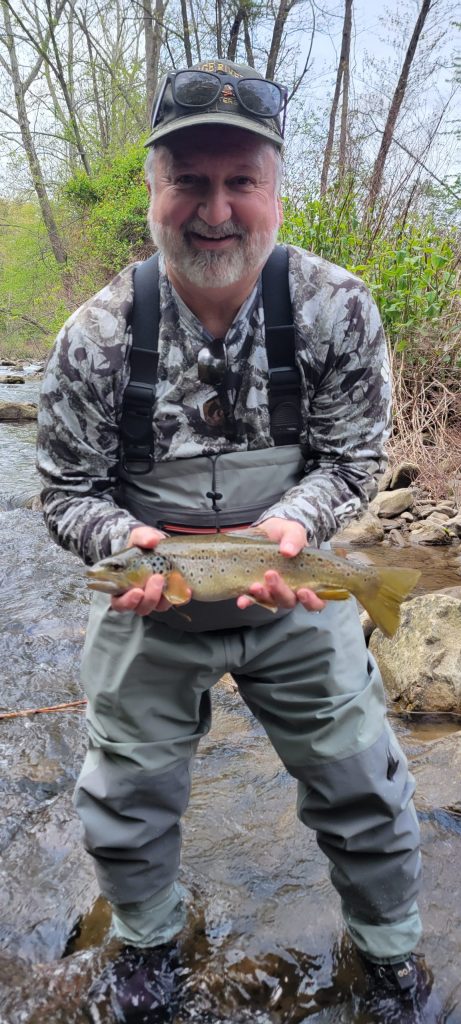
It’s tempting to get poetic with these write ups – but all that needs to be said is that EVERYONE was catching fish, with several brown trout over 16 inches. It really was an incredible day.
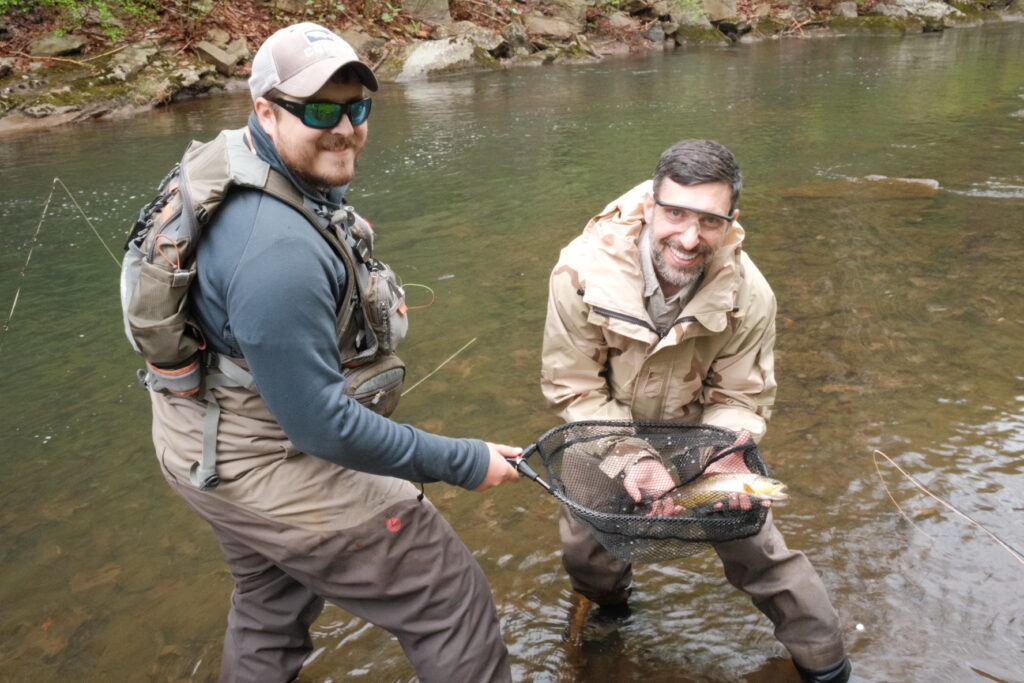
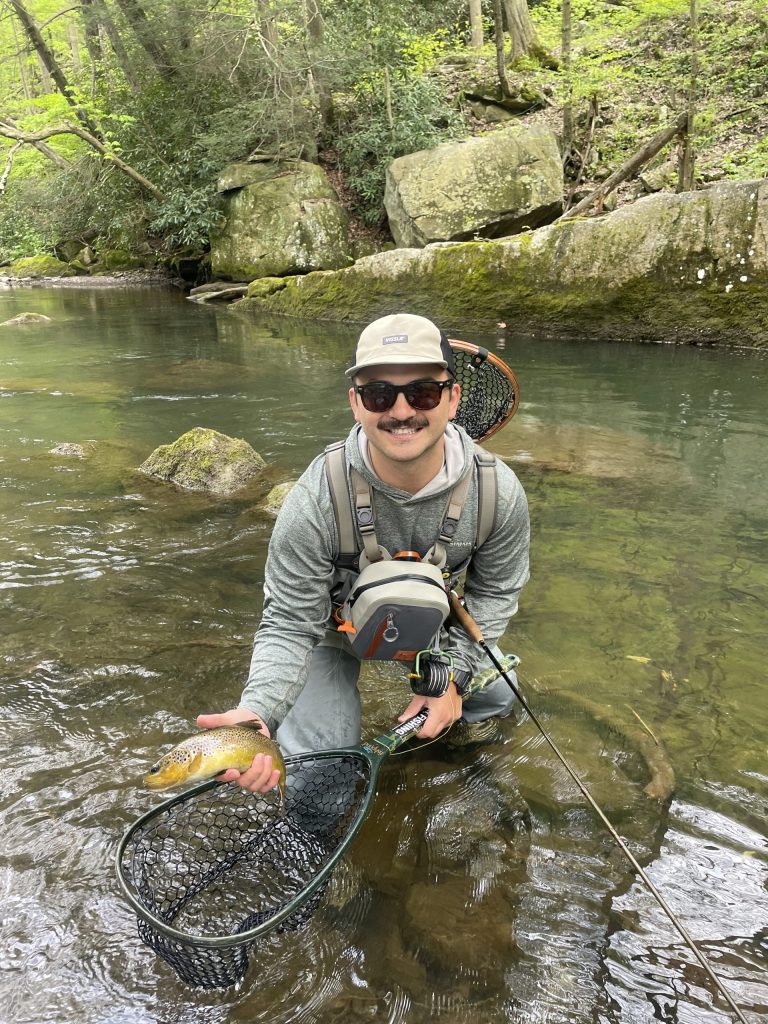
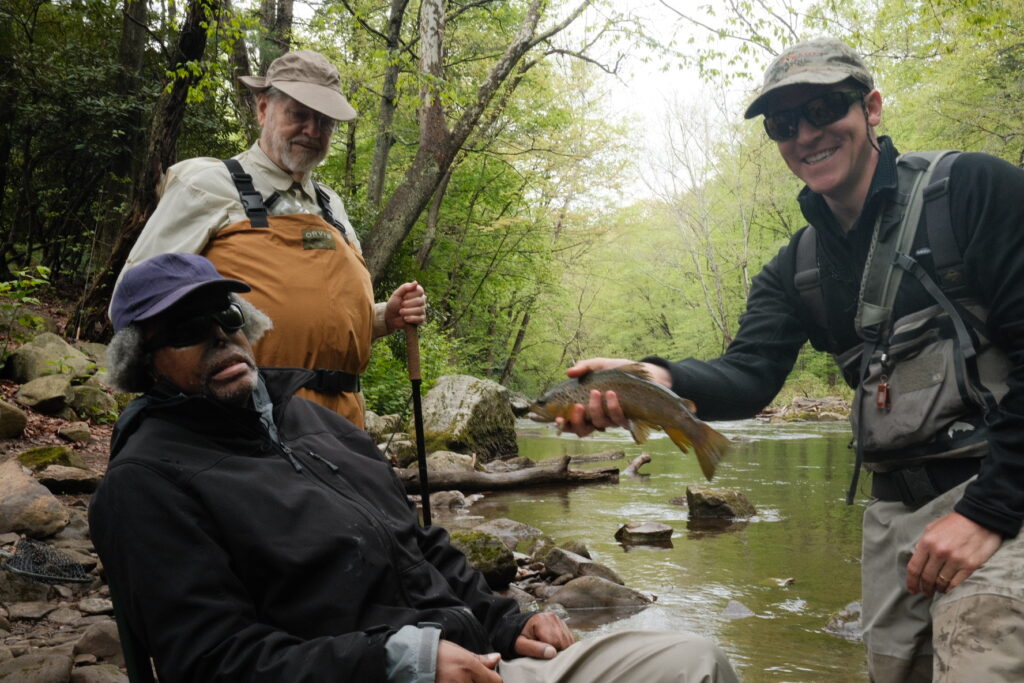
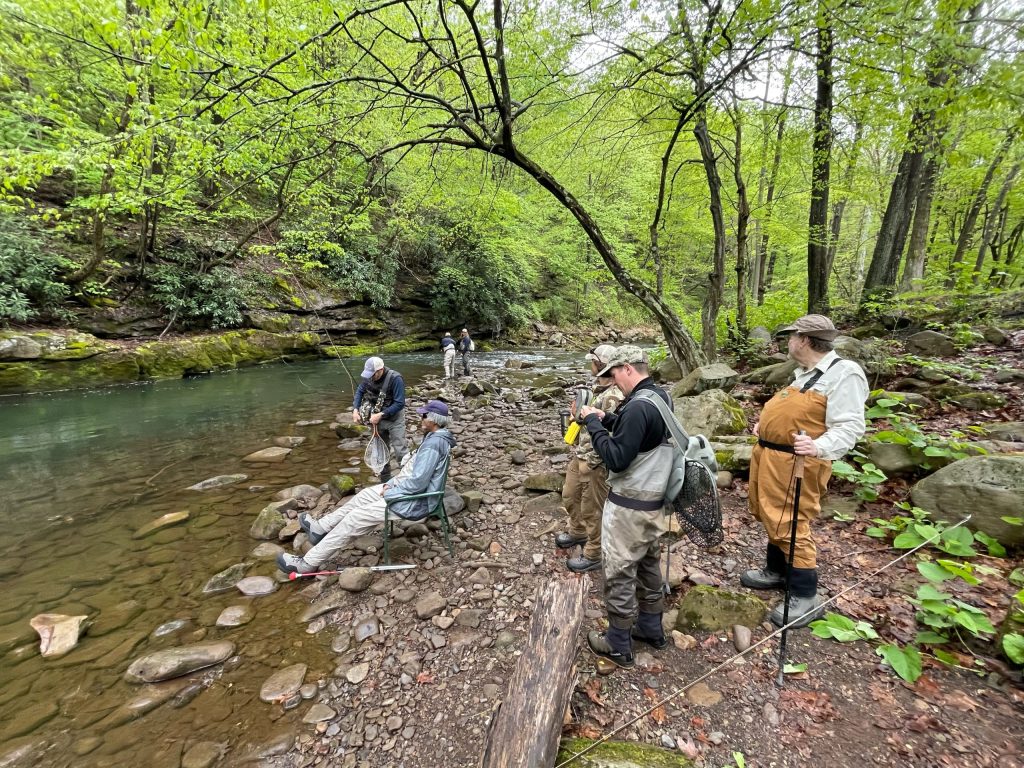
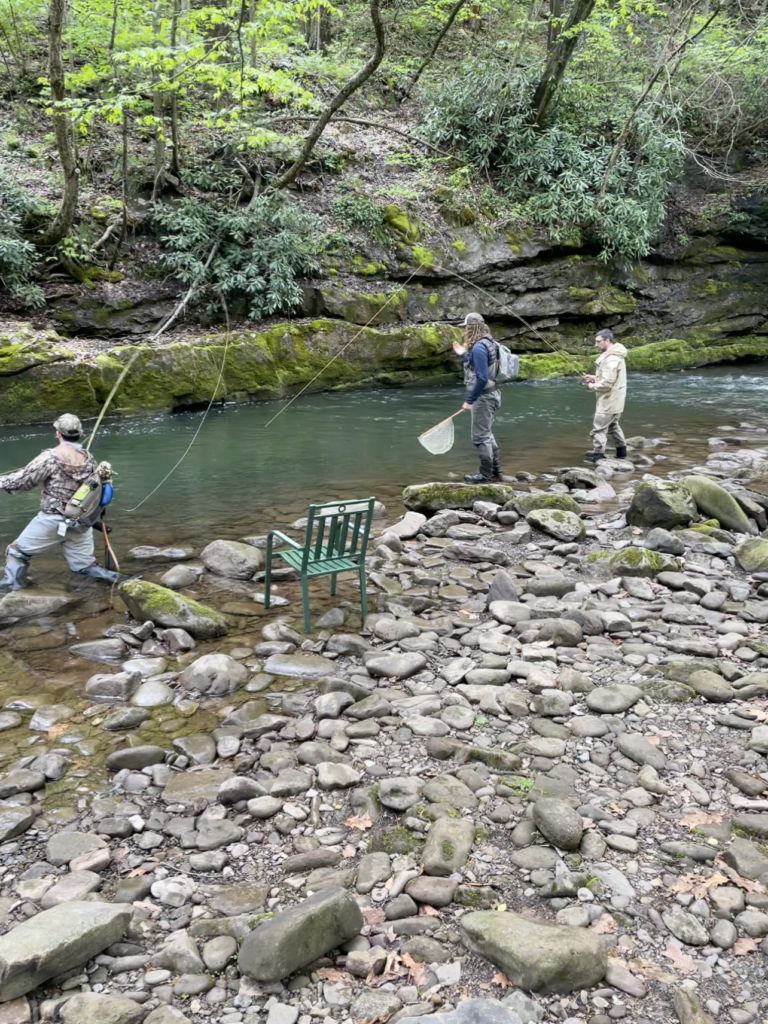
As hard as it was to get people off the water, barbecue chicken seemed to do the trick for almost everyone. Everyone had a nice evening and the camaraderie was at an all-time high. We had a bonfire at the river bank as the sun went down and watched the last few participants coming off the water for dinner. Up until last light, people were still catching fish.
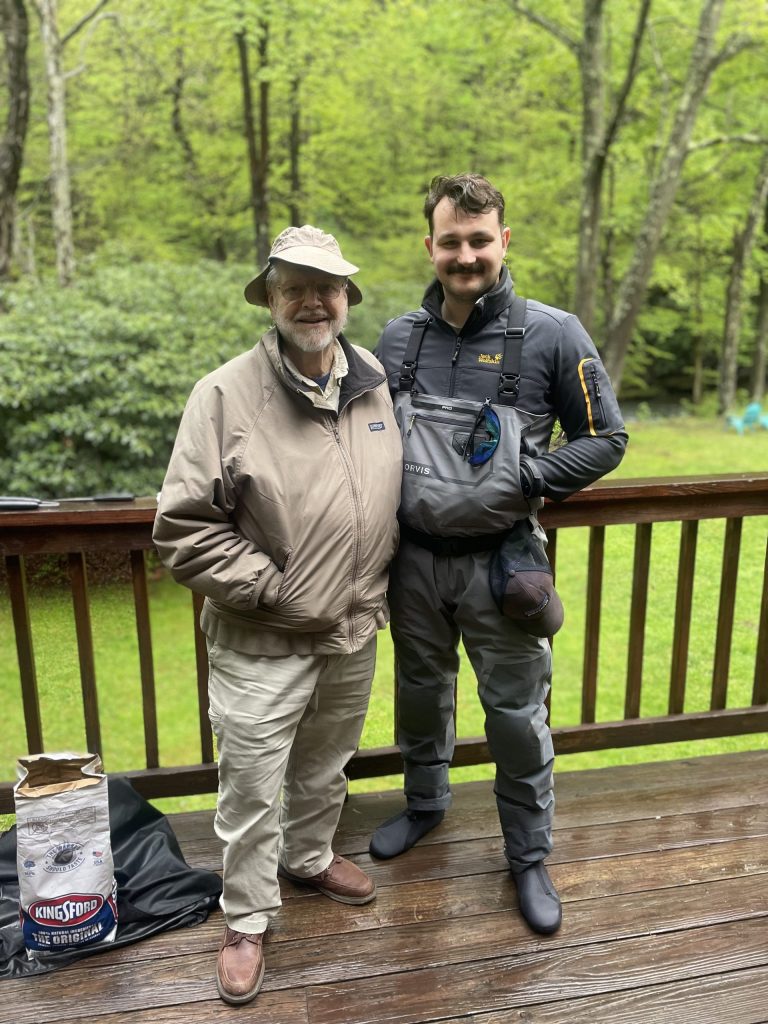
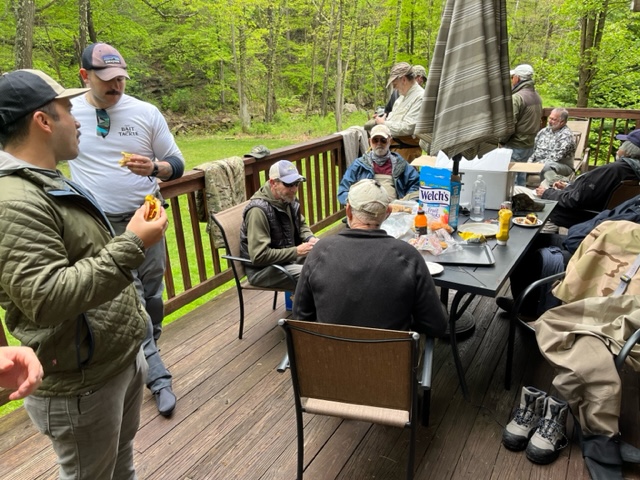
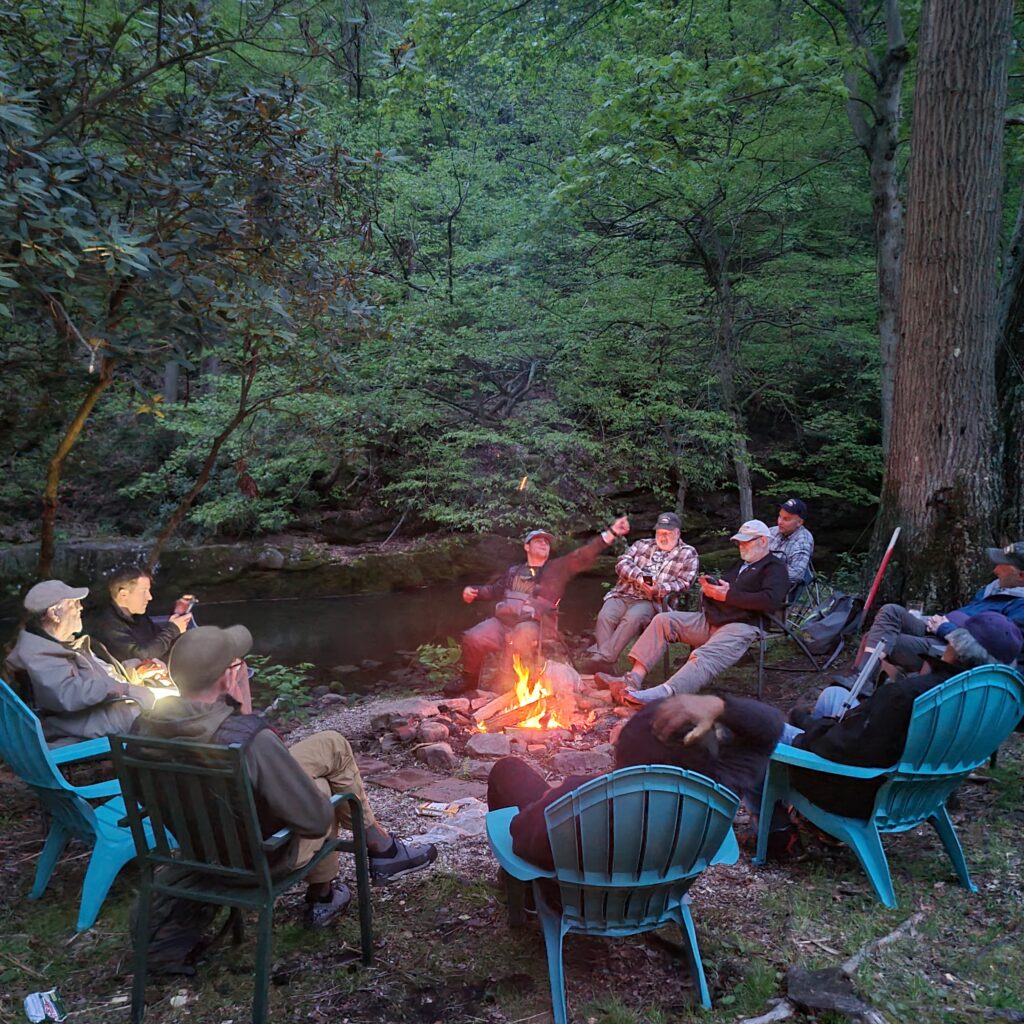
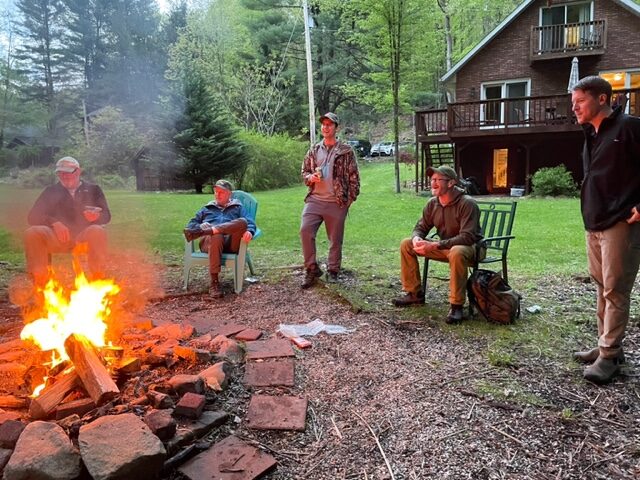
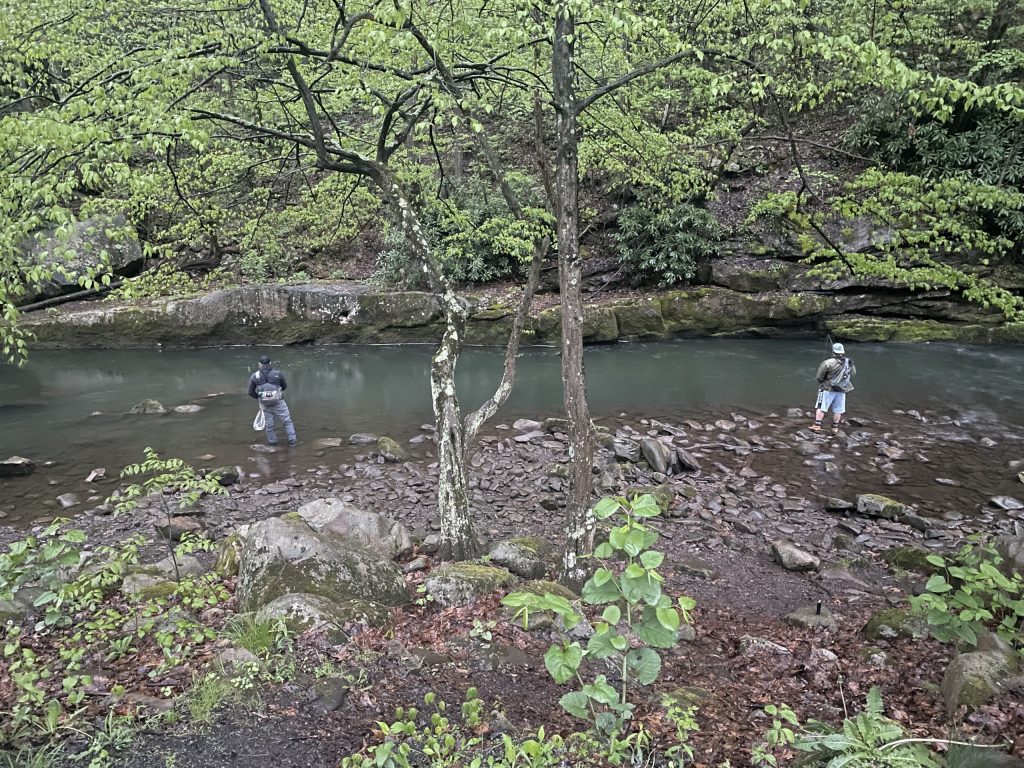
Sunday morning the weather was pretty rough as predicted, and the event formally concluded. However, this did not stop a few of our participants from hitting the water on their way home, and a few more fish were caught, but not quite as good as the day before.
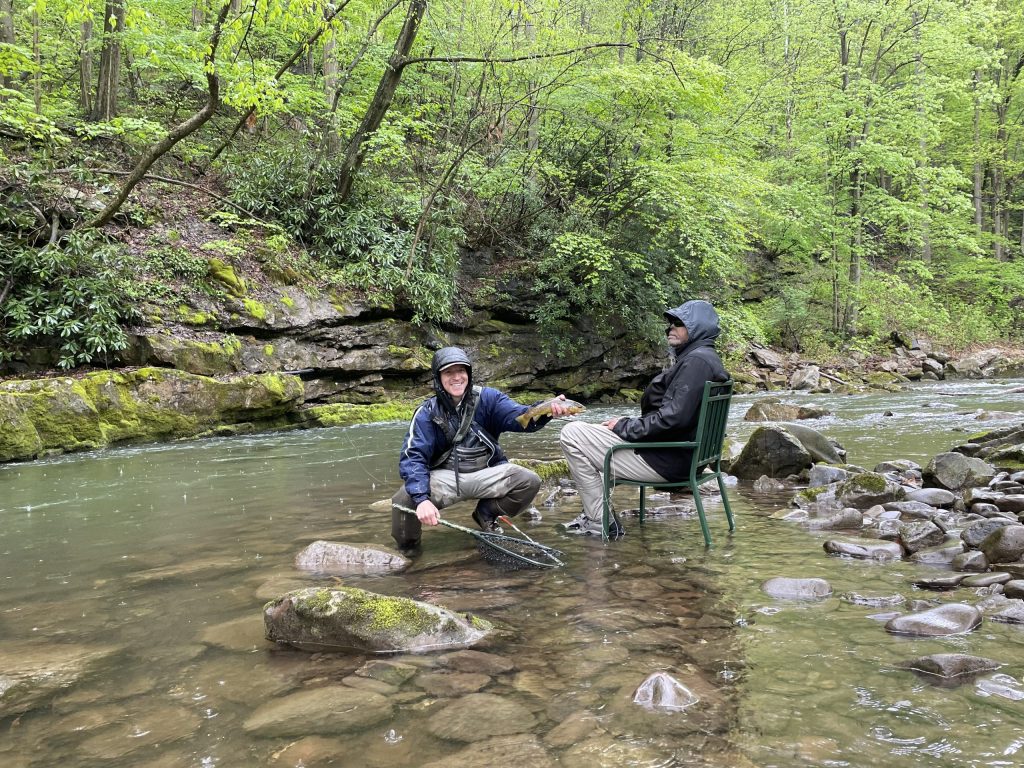
This trip was made possible by a generous donation from the National Park Trust. Project Healing Waters DC originally connected with the National Park Trust at a collaborative event with TAPS in November 2022. The shared commitment to fishing, public land, and the therapeutic properties of time spent outside were the foundation for this great relationship. I want to personally thank Ivan Levin (Director of Strategic Partnerships and Communications) and Nick Weig (Programs Coordinator) for supporting our Program and this relationship. I look forward to continued collaboration between our organizations at the National level.
I also want to thank Mike Evans, Owner of Savage River Outfitters, for supporting this trip. It is really hard to beat the lodging right on the river! The Savage River Outfitters Guides put our participants on fish, and were very helpful in teaching our participants new fishing skills and how to read the water. Charlie Laffey, Brad Urbas, and Ryan Cooper provided wonderful guide services.
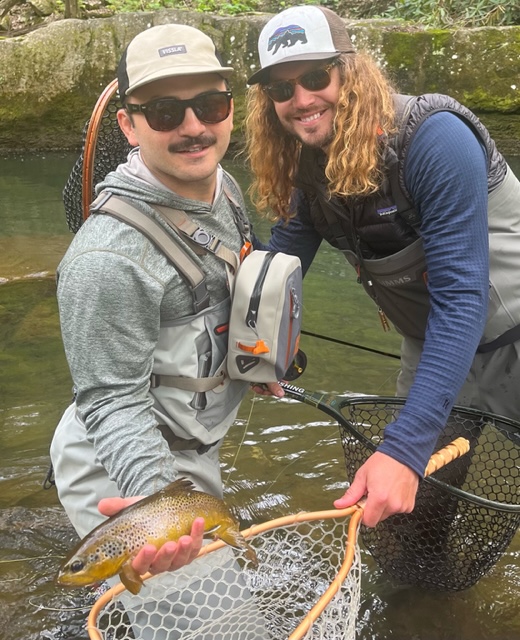
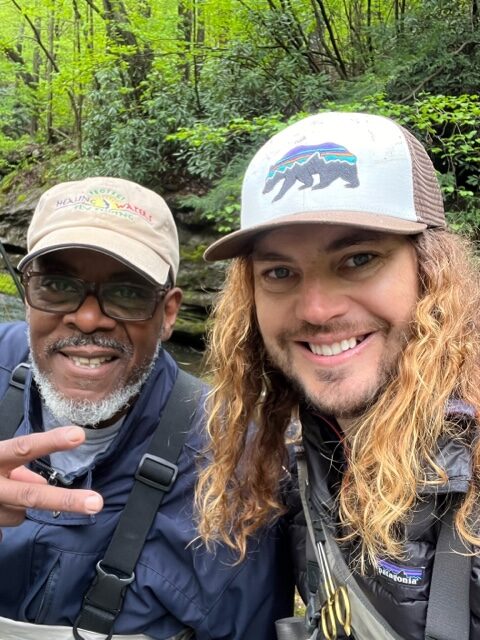
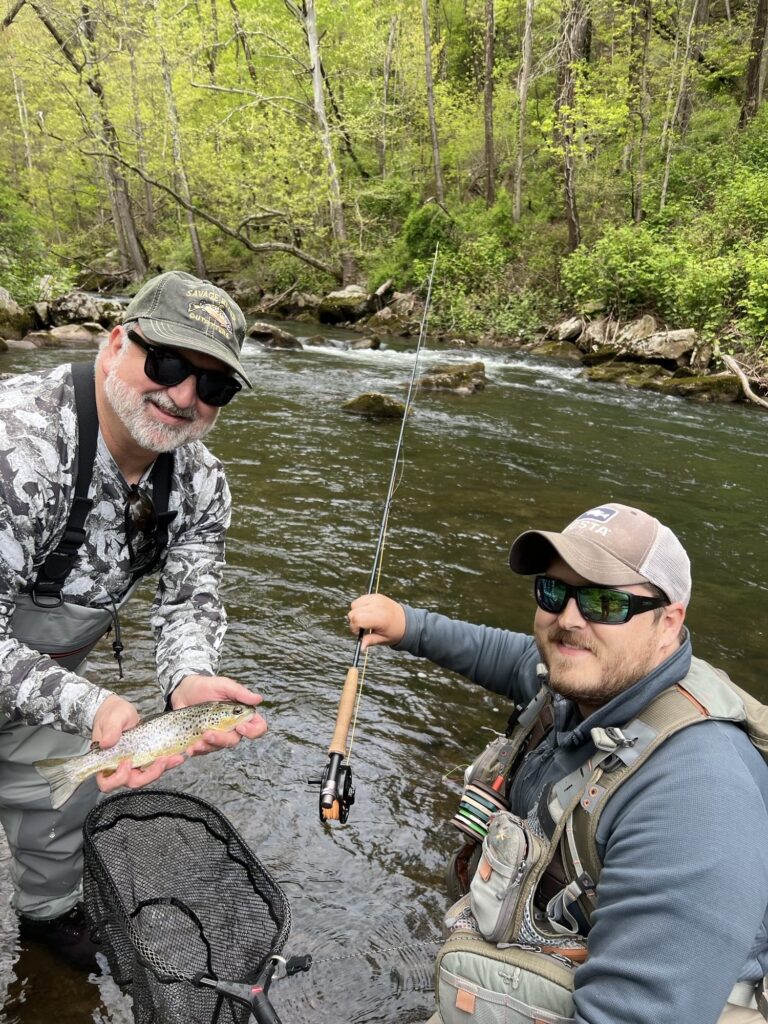
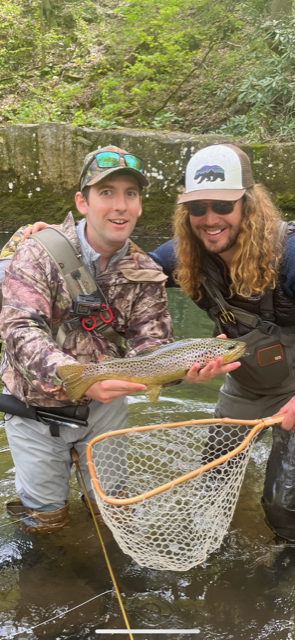
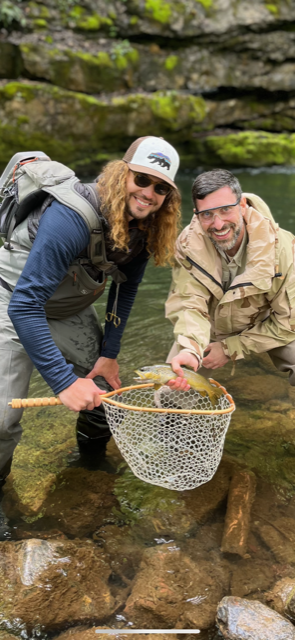

Latest News
Wrapping Up The 8th Annual Fly Tying Marathon
March 16, 2023
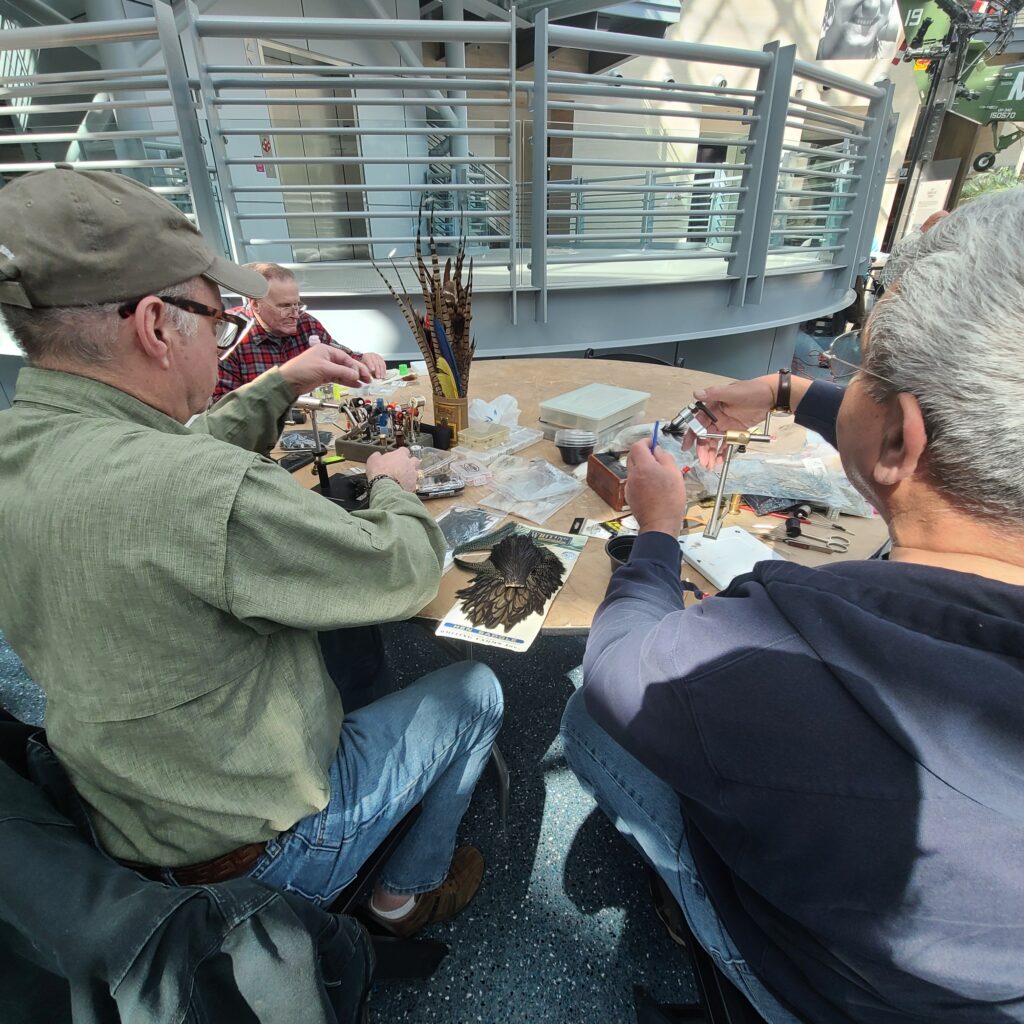
On March 25th, numerous organizations came together at the National Museum of the Marine Corps in Quantico for a fly tying marathon. The purpose of this event is to tie as many flies as possible in 8 hours, so that they can be distributed to Project Healing Waters participants all over the country. 43 individuals tied in the morning session, 17 individuals in the afternoon (some stayed all day!), and support came in the form of 5 set-up volunteers. Organizations represented included but were not limited to:
PHW Ft. Belvoir, PHW Quantico , PHW Fort Meade, PHW DC, PHW Walter Reed, PHW La Plata, PHW Fredericksburg, PHW Richmond, Trout Unlimited – National Capital Chapter, Trout Unlimited – Fredericksburg, Trout Unlimited – Rapidan, Local United States Marines, and Local volunteers and Veterans

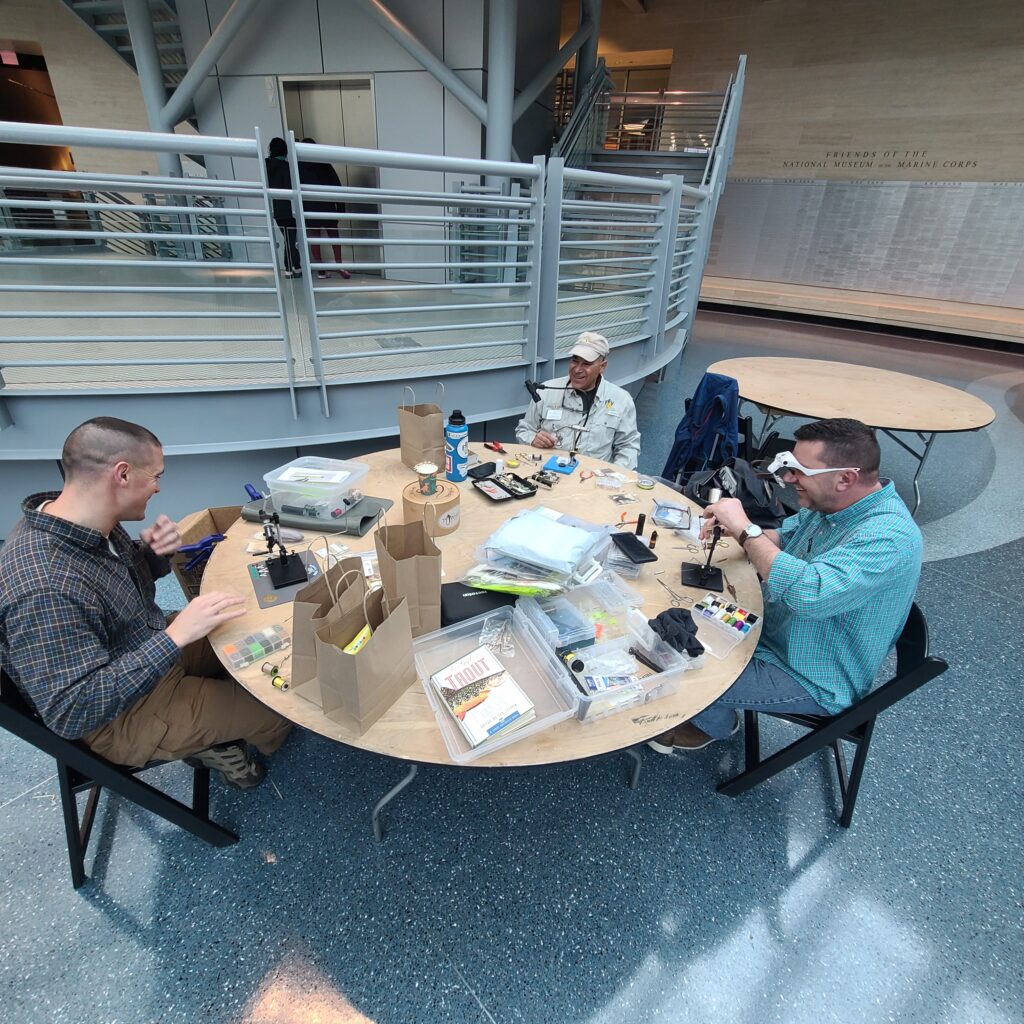
The scenery in the museum makes for a great backdrop for any activity, especially one that benefits PHW participants and programs around the country. However, it also serves as a sobering reminder of the conflicts that the United States Marines have participated in, and sacrificed in.
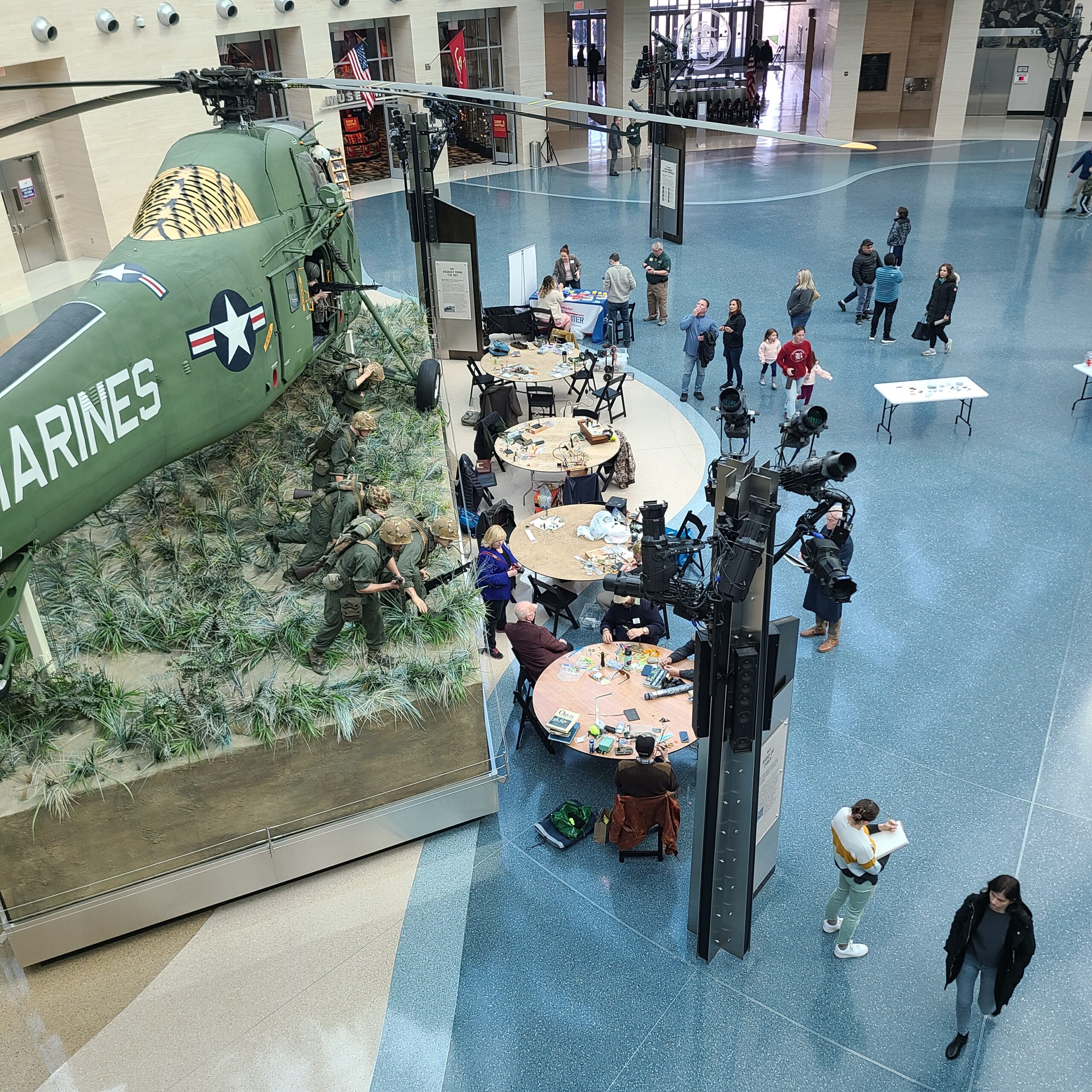
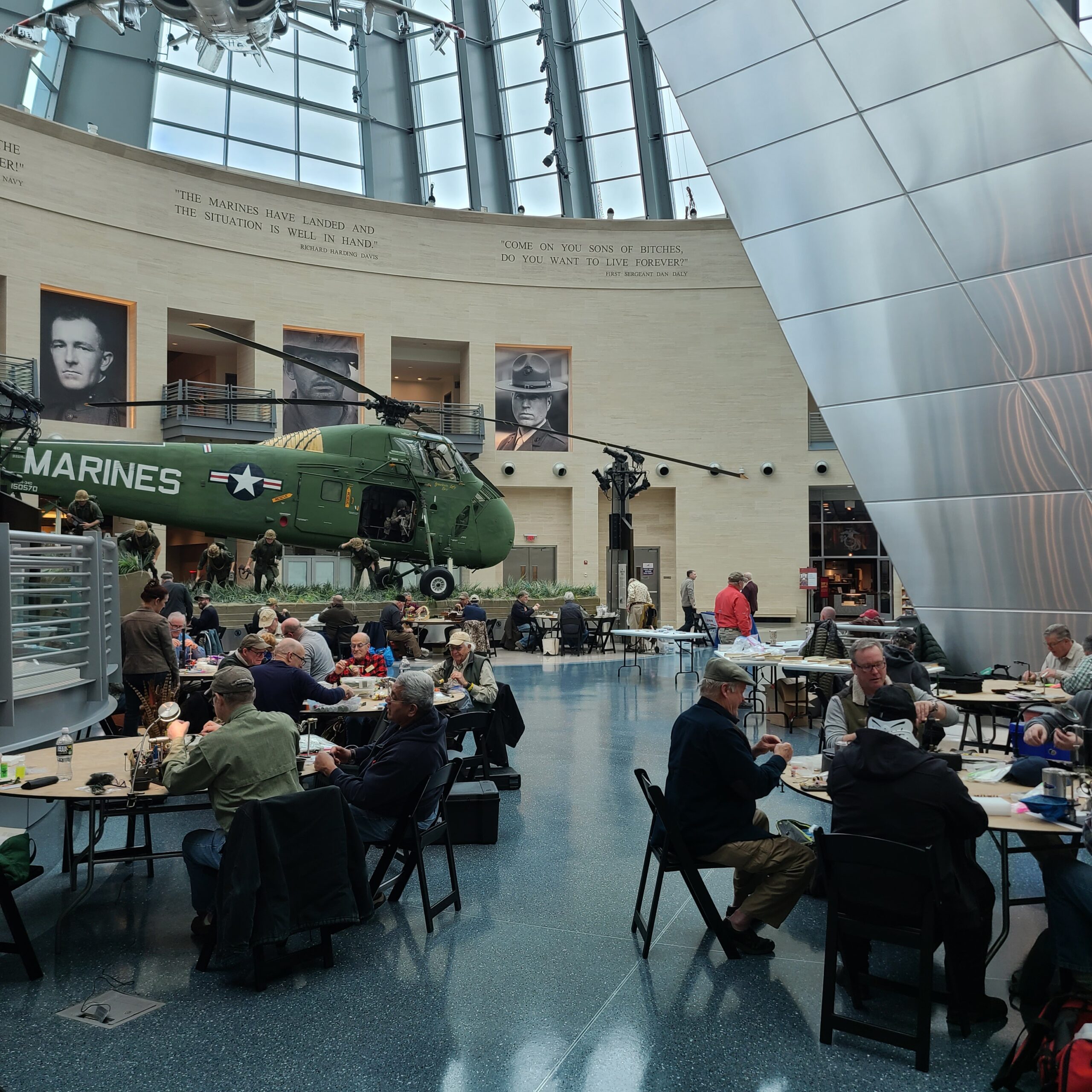
A centerpiece of the Leatherneck Gallery, this diorama depicts a Sikorsky UH-34D helicopter with Marines heading for cover as they exit the helicopter during Operation Starlite in 1965, the first major offensive of the Vietnam War.
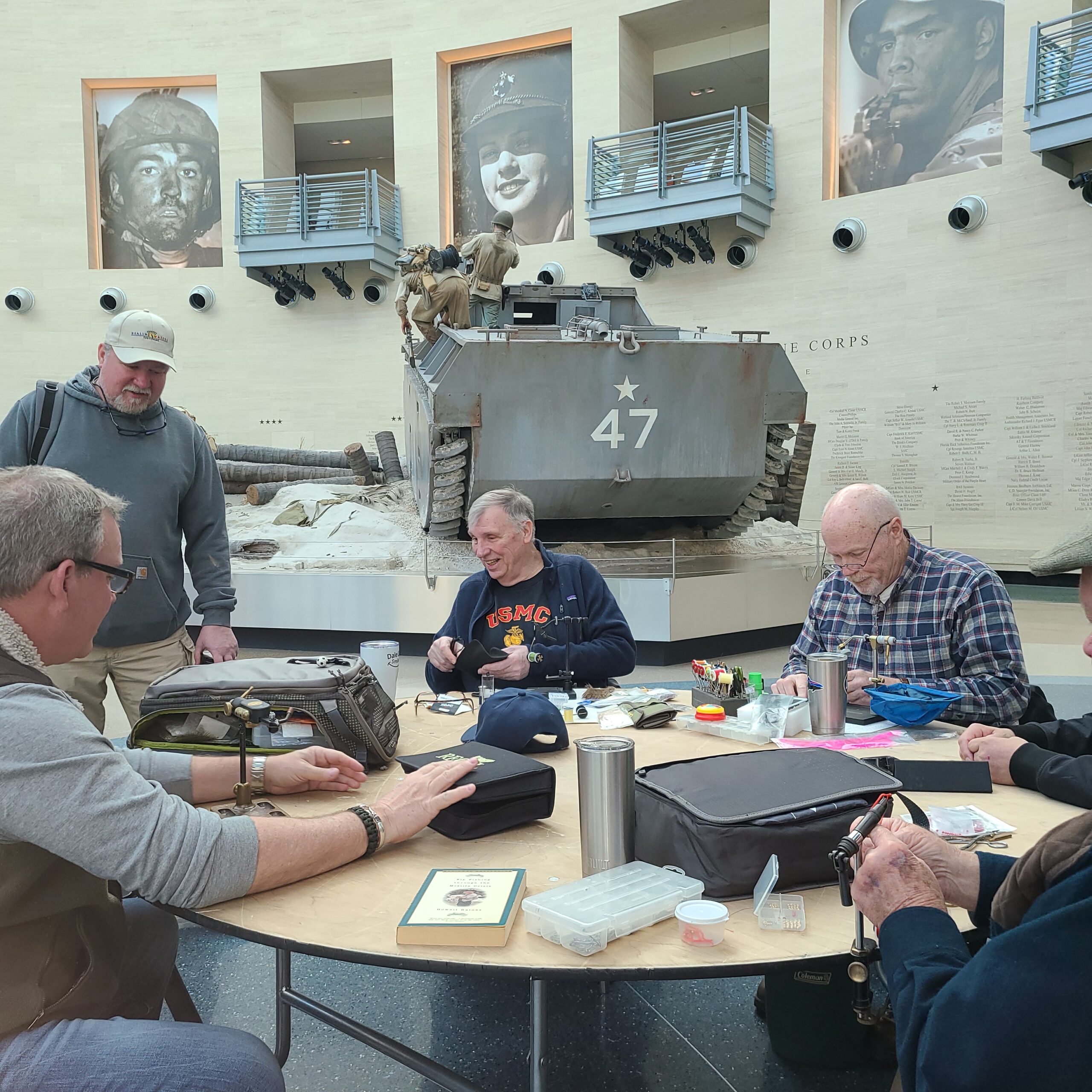
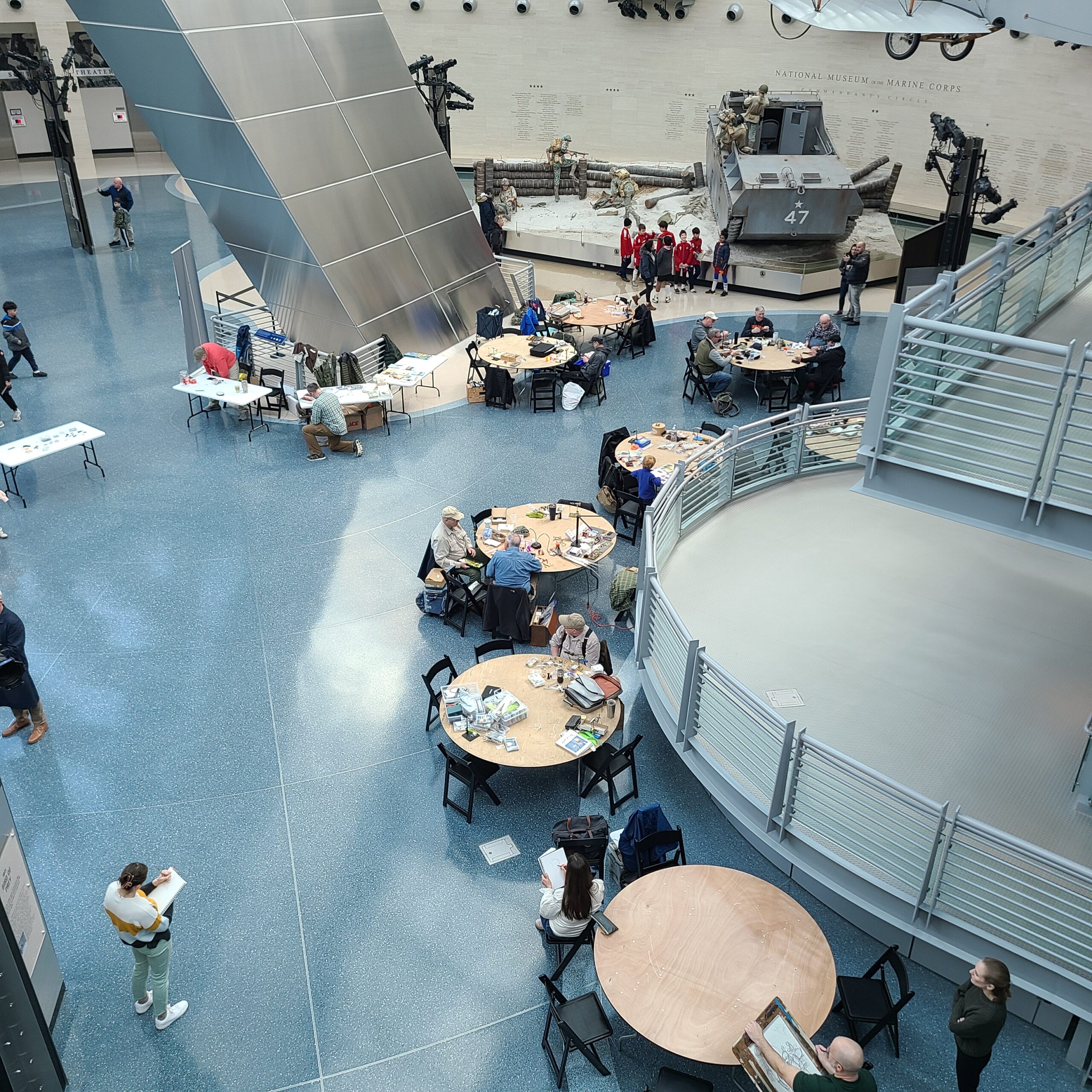
At the corner of the space is a diorama from World War II, as an LVT-1 amphibious tractor breaches the defensive log wall on the Pacific island of Tarawa. Marines landed on Tarawa as part of Operation Galvanic, the U.S. invasion of the Gilberts.
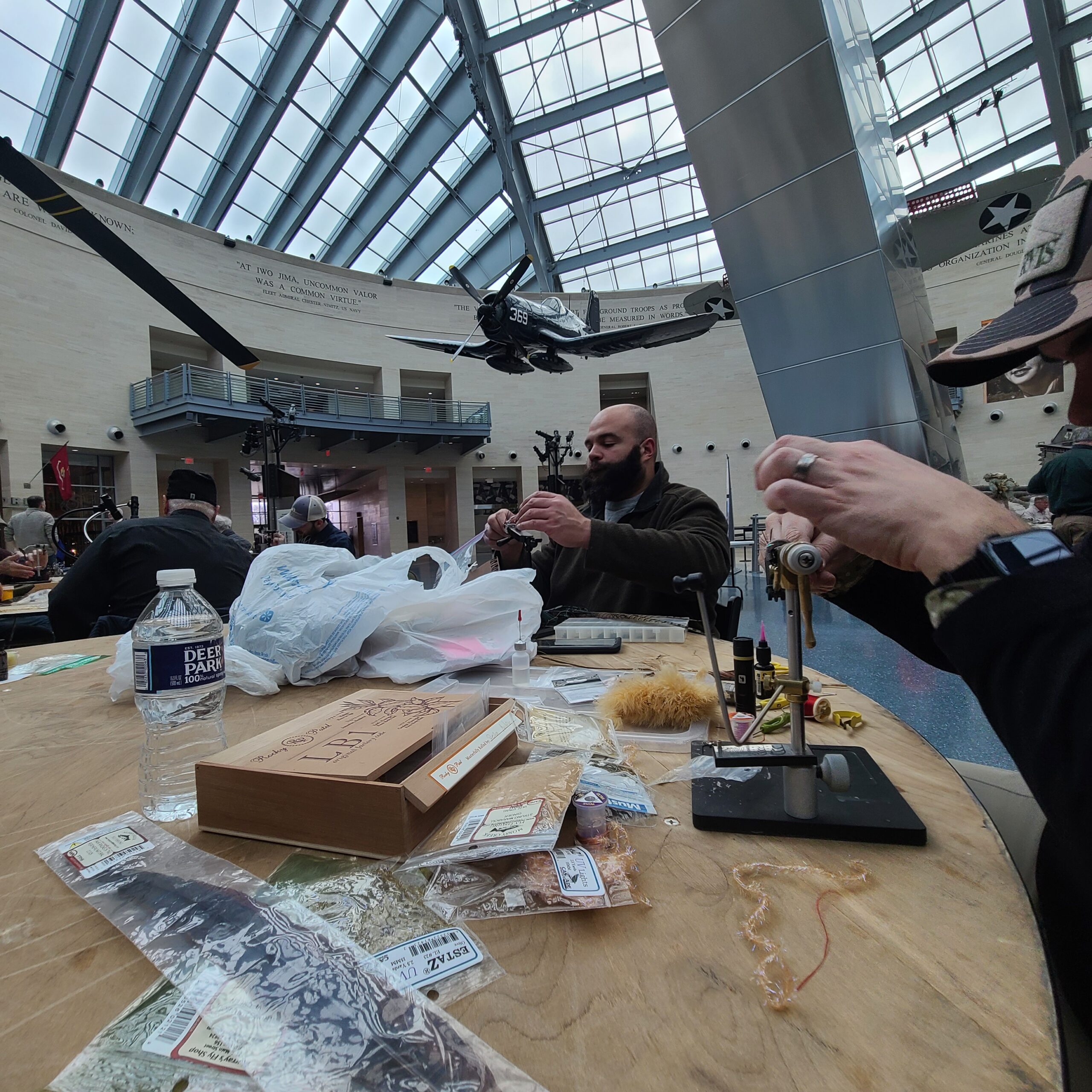
The variety of flies tied was outstanding: from mice to midges to mop flies, caddis to Copper Johns to chironomids, and just about everything in between.
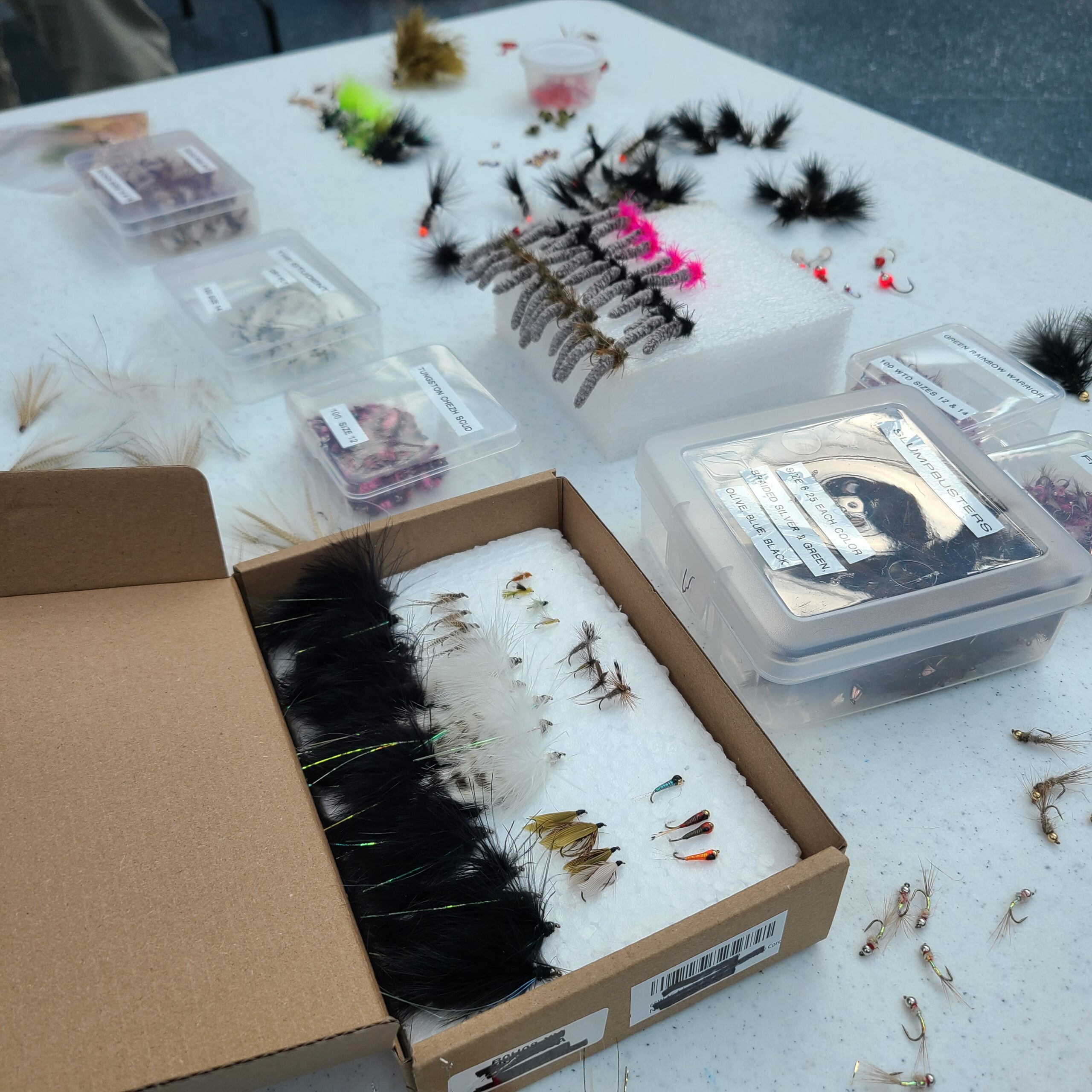
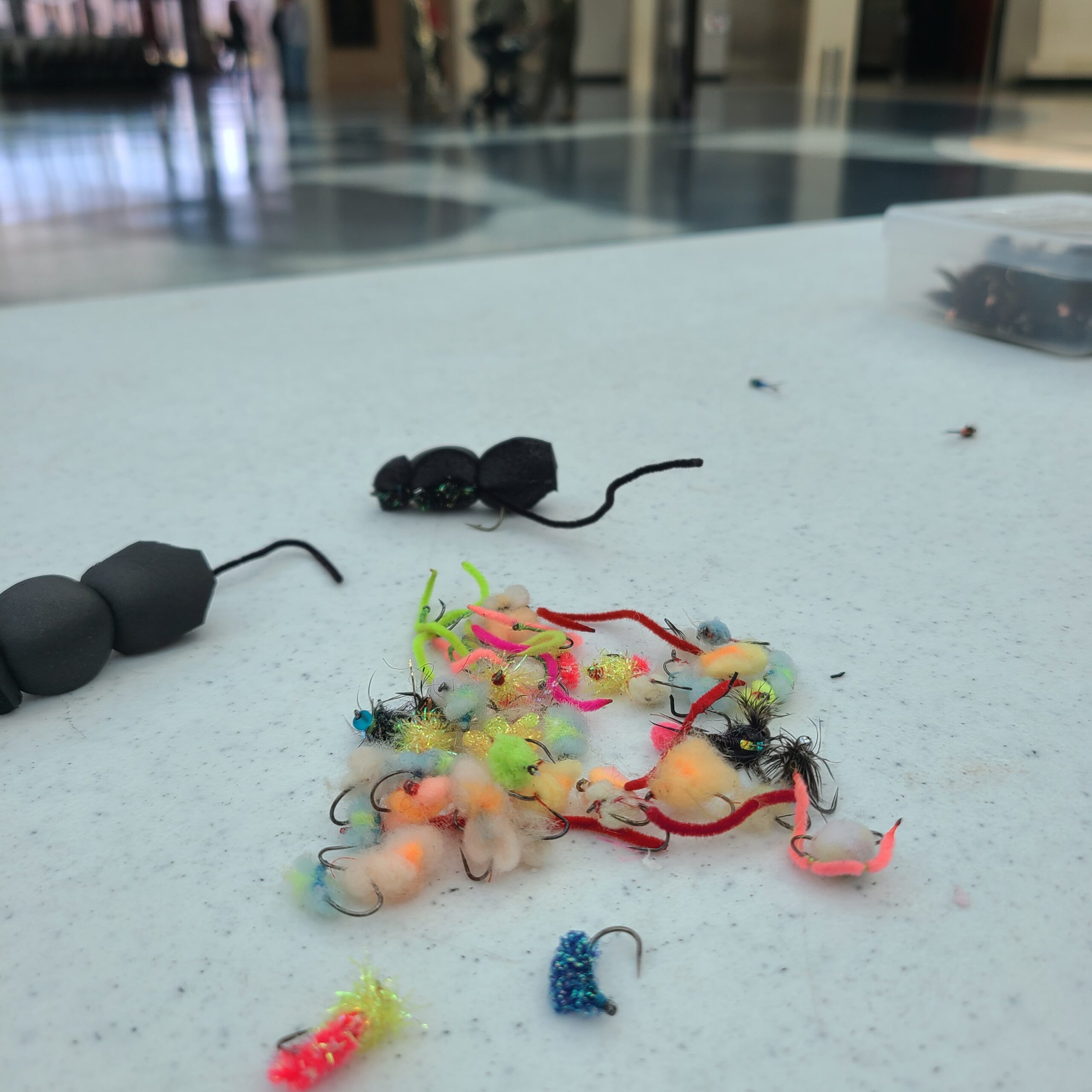
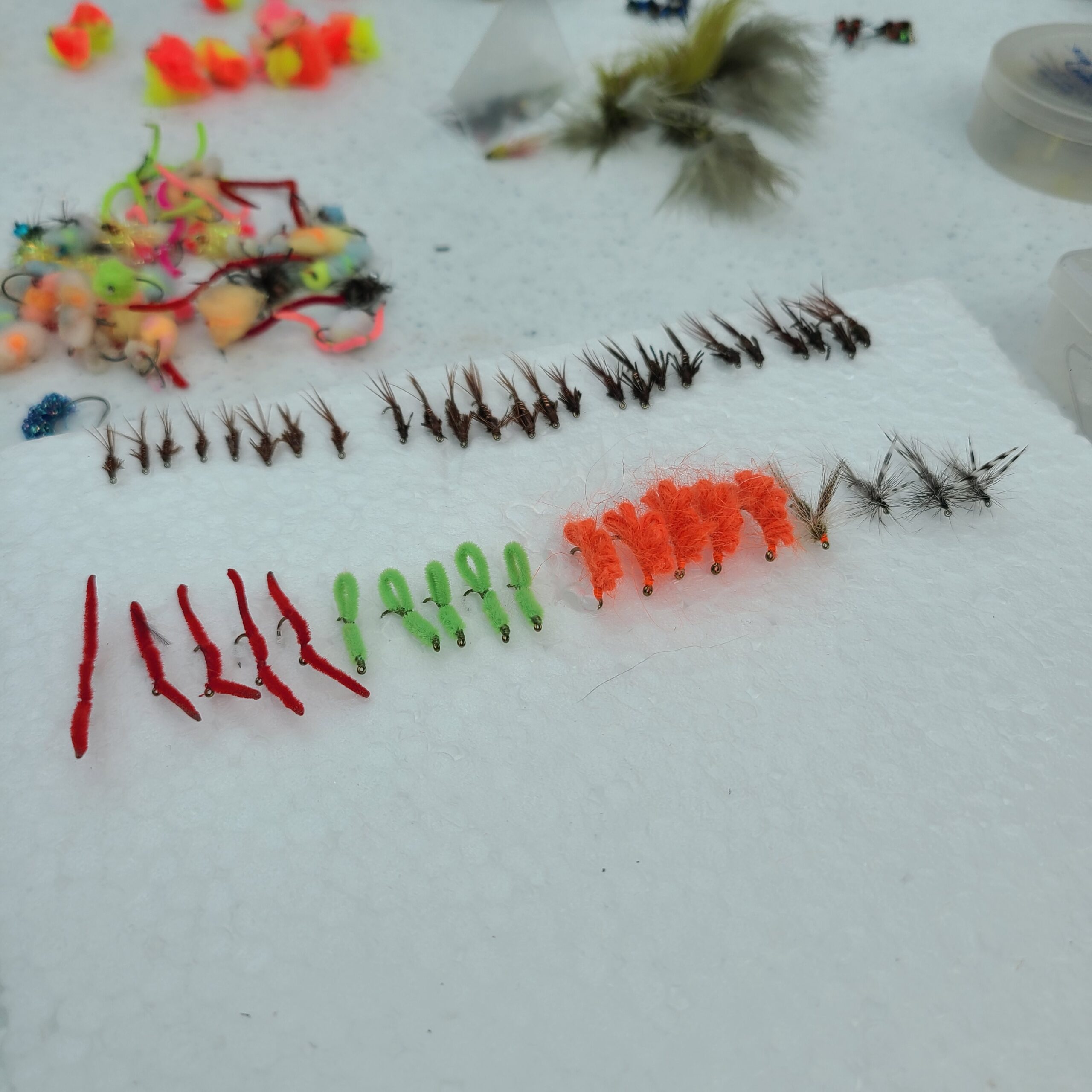

Participants and volunteers were provided lunch, and a handful of extra meals were donated to museum staff and the Marine Corps Military Police on duty that day. Around 5pm, the volunteers began cleaning up and counting flies to determine the day’s haul.
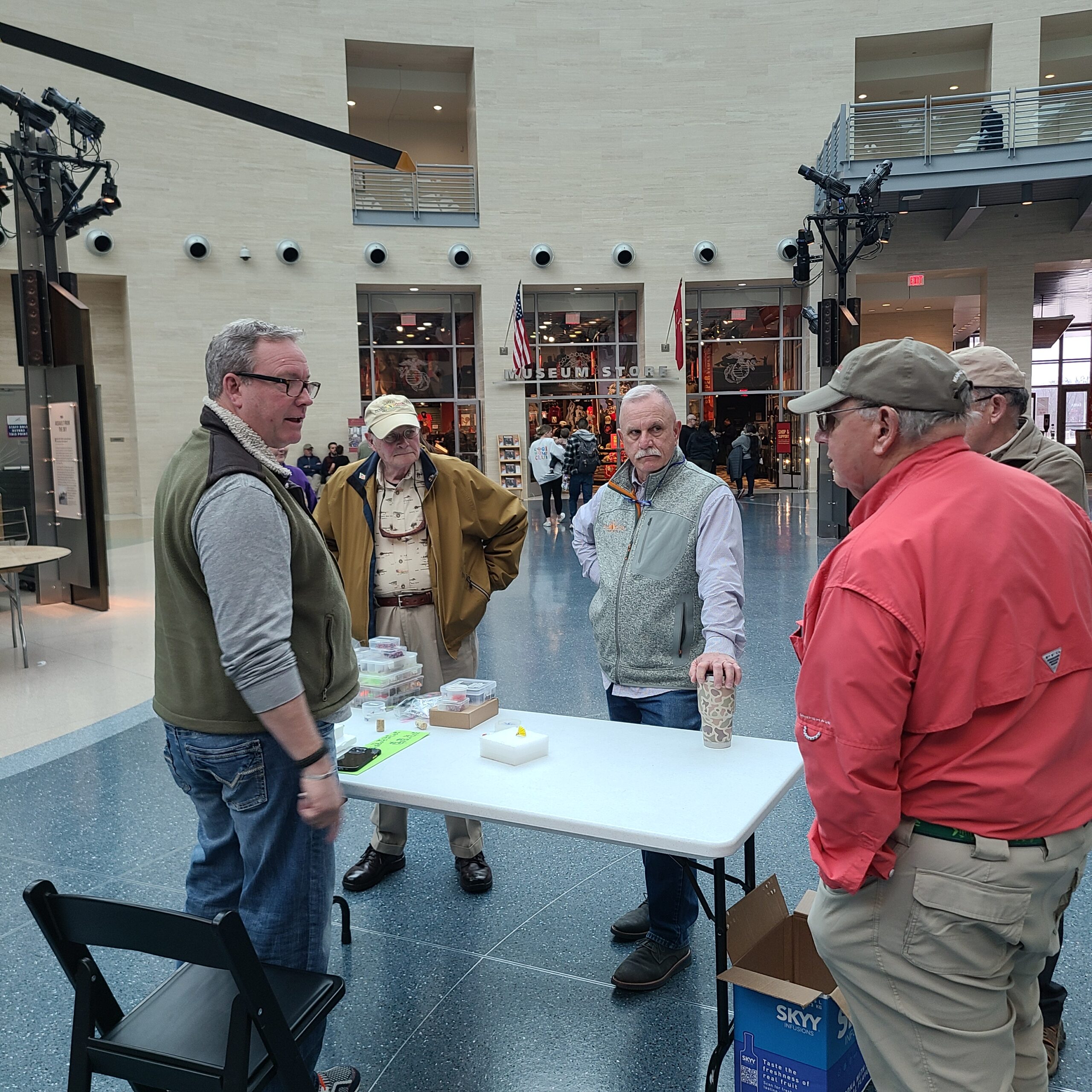
In total, the event resulted in 2,643 flies to be sent to PHW participants around the country. The event was coordinated by Chris Thompson, North Carolina Regional Coordinator and Camp Lejeune Program Lead. Local volunteers from the National Capital Region were essential in running the event including Larry Braswell, Paul Blayney, Todd Wendt, Dave Borostyan, Tim Metzger, Curt Boatman, William Heresniak, Steve Powell, and Marty Laksbergs.
PHW is grateful to the staff of the National Museum of the Marine Corps for supporting the event in so many ways, as well as providing the continued opportunity to hold the Fly Tying Marathon in such a meaningful location.
Latest News
Harman’s Luxury Cabins Hosts 10th Annual PHW Fly Fest
December 13, 2022
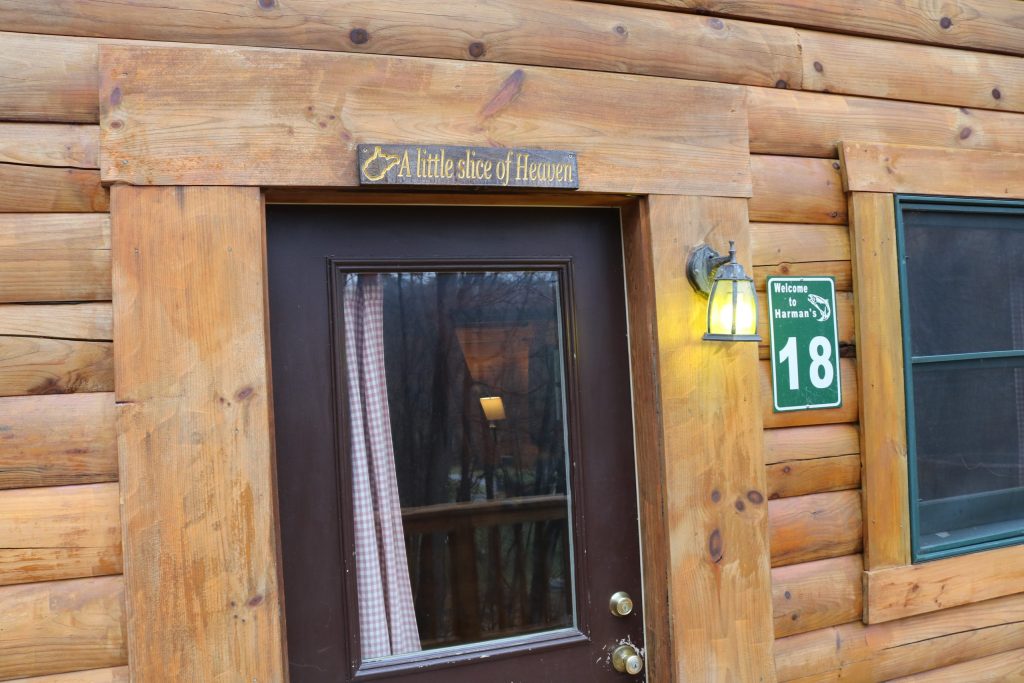
By: Tim Metzger, Program Lead, Washington DC
December 2nd – 4th, 2022
Harman’s Fly Fest gathered for its 10th year the first weekend of December in Cabins, West Virginia. Doctor Mike Cherwek started Harman’s Fly Fest as an event for the Ft. Belvoir and Quantico Programs. However, the event has grown to include Programs throughout the National Capital Region, including Washington DC, La Plata, and Fort Meade.
Harman’s Luxury Cabins boasts two miles of private access to trophy trout water within the Monongahela National Forest in Grant County, West Virginia, about 2 hours from the DC area. Todd Harman, the current property owner, is the third generation to operate the property, which has been in service for 80 years. The 21 cabins are luxurious, including fireplaces, hot tubs, pool tables, and more amenities that make the event special for our participants. The National Capital Region is very grateful to the Harman family and their staff for their generosity to our programs in sharing their beautiful property for the weekend.

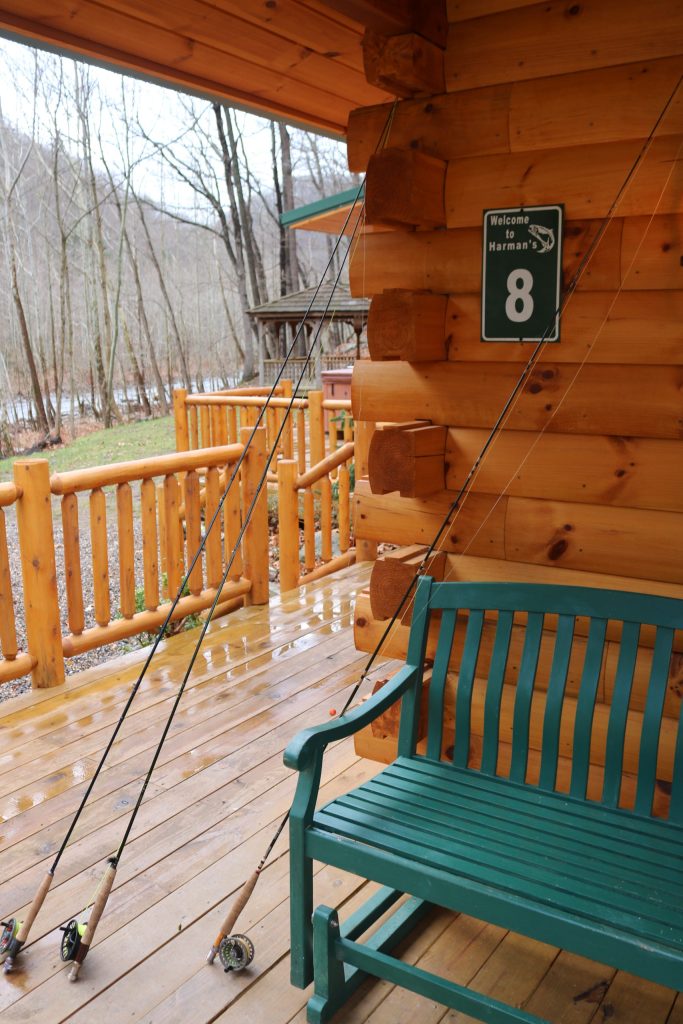
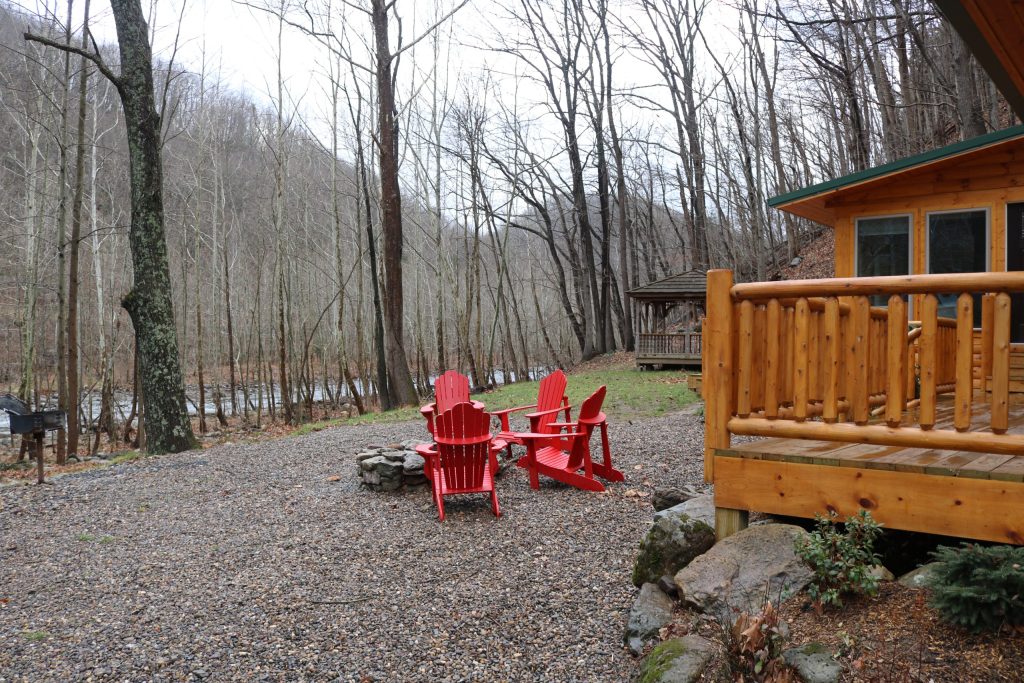
Of course, the luxury is nice, but the scenery really sets the stage for this historic event and enables everyone to come together. Steep cliffs, cold riffling water, and dense forest give the property intense natural beauty and a sense of seclusion from the business of the National Capital area.
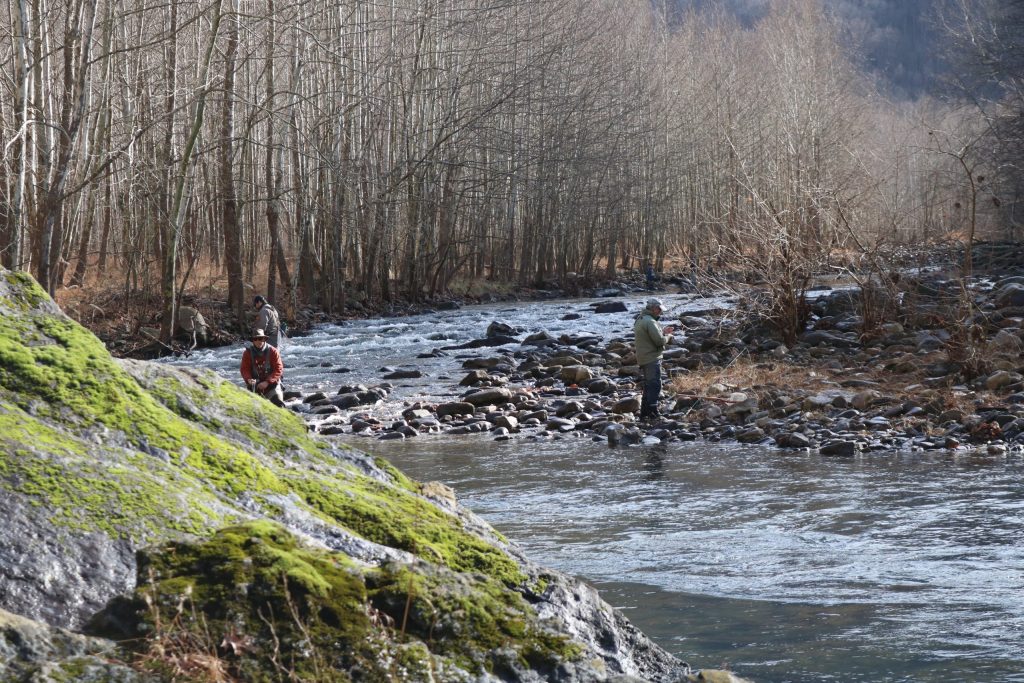
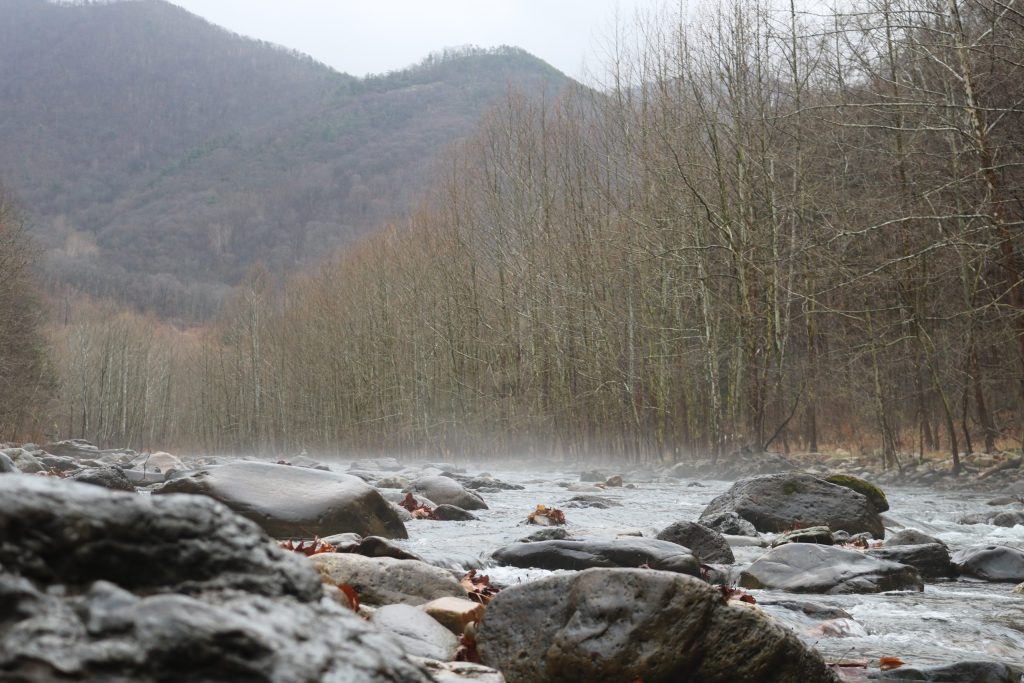
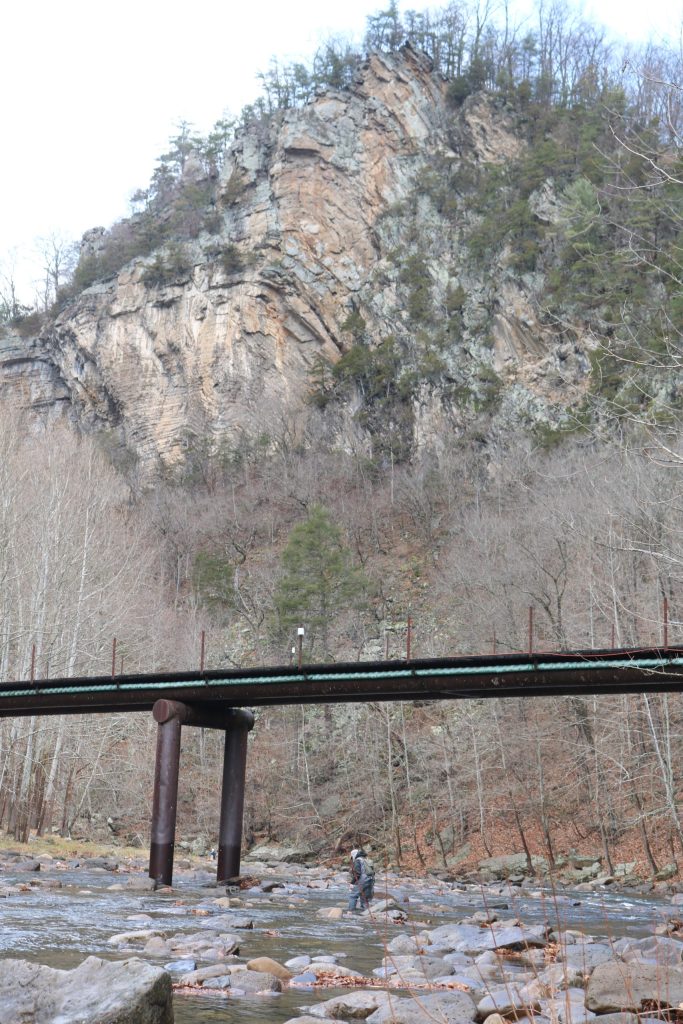
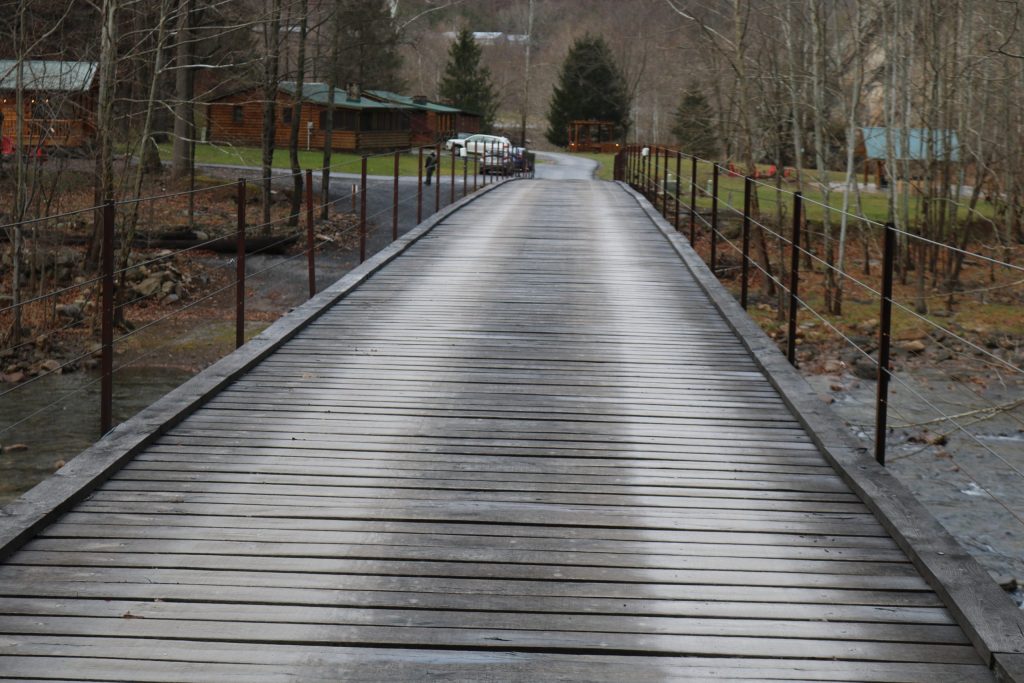
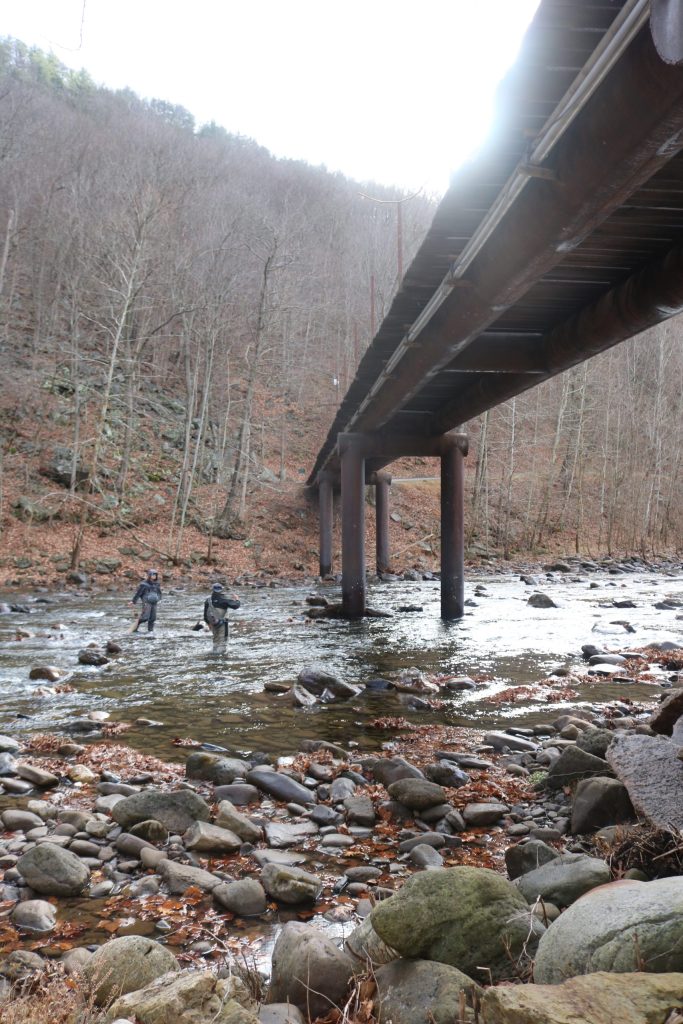

Most arrived Friday afternoon and evening, and some were able to wet their lines before the event kicked off that night at the North Fork Ruritan Club meeting hall. Alex Colonna led the “Iron Fly” tying competition, where participants tied a fly and provided detailed information on its background, the materials used, and how it might fit on the “menu” for the local trout. Everyone voted for just one fly, and four finalists had to tie a size 12 Yellow Humpy for the next day.

Dinner (along with the rest of the meals for the event) was provided by Blue Roof Caterers from Cass, WV. Jenny and Diane Botkin took good care of the 78 combined participants and volunteers in attendance. In addition to dinner, there was a plethora of gear and books for participants to take home with them. After a night of stories around an impromptu bonfire, everyone was eager to fish the next day.
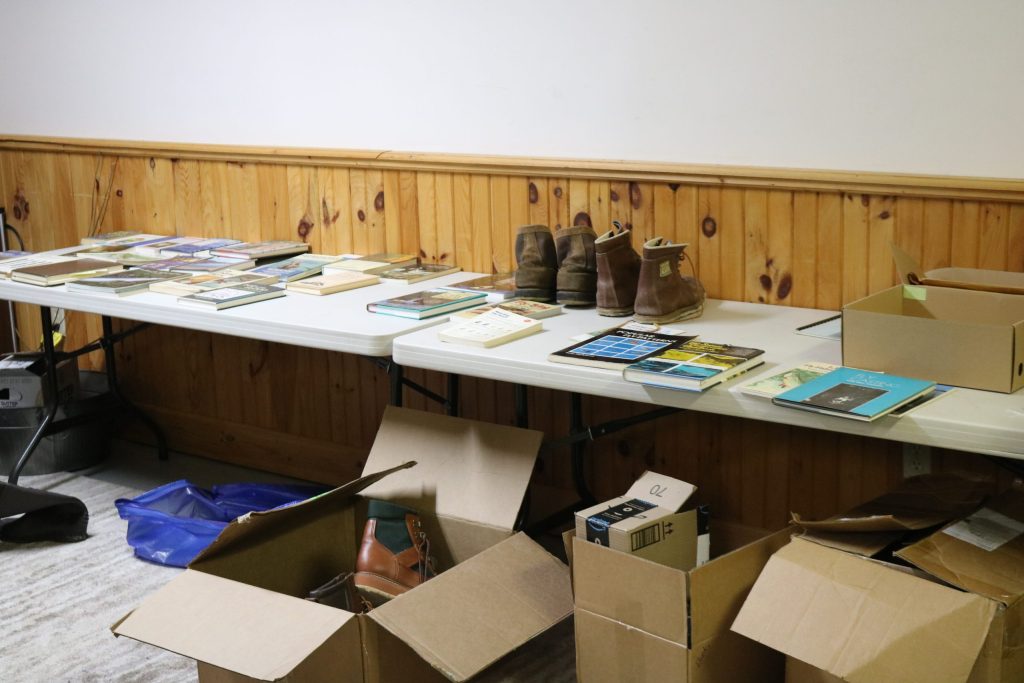
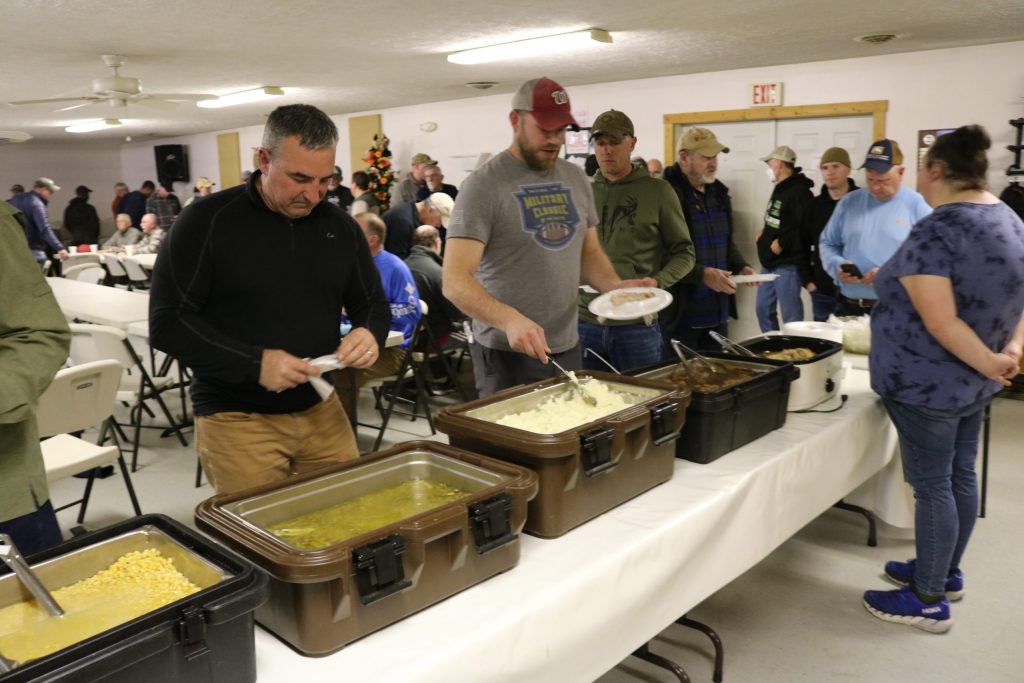
After a quick breakfast, safety brief, intel from the local guide Tim Caudill, and group photos, participants were paired with volunteer guides, and everyone hit the water. Part of the joy of Harman’s is meeting new people, so participants and volunteers were paired from different programs. Healing through fly fishing connects us all, and everyone becomes fast friends.
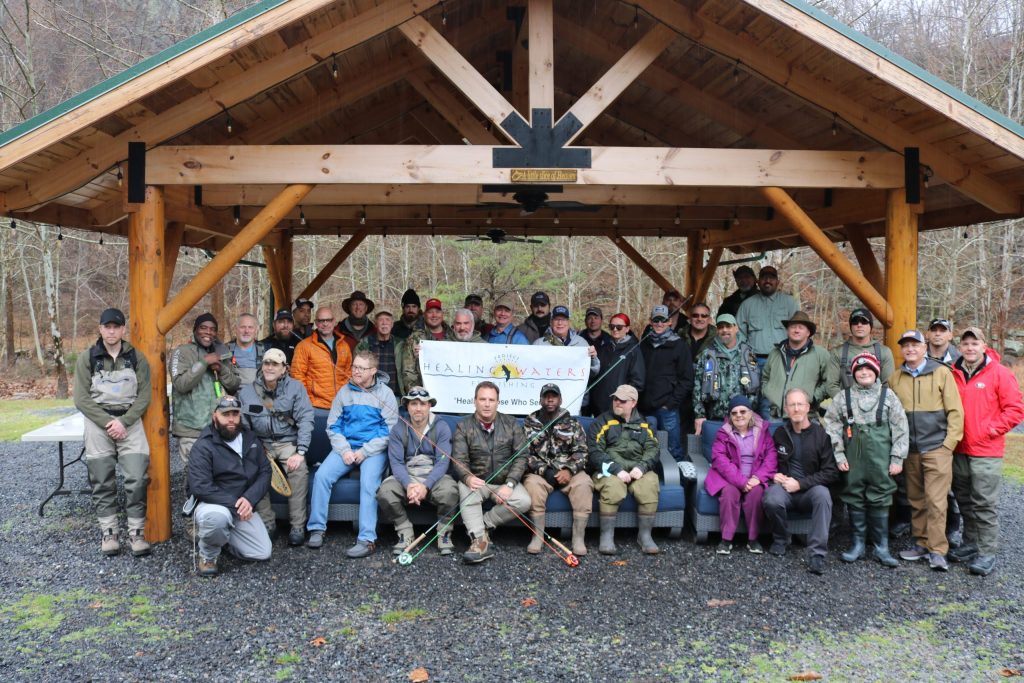
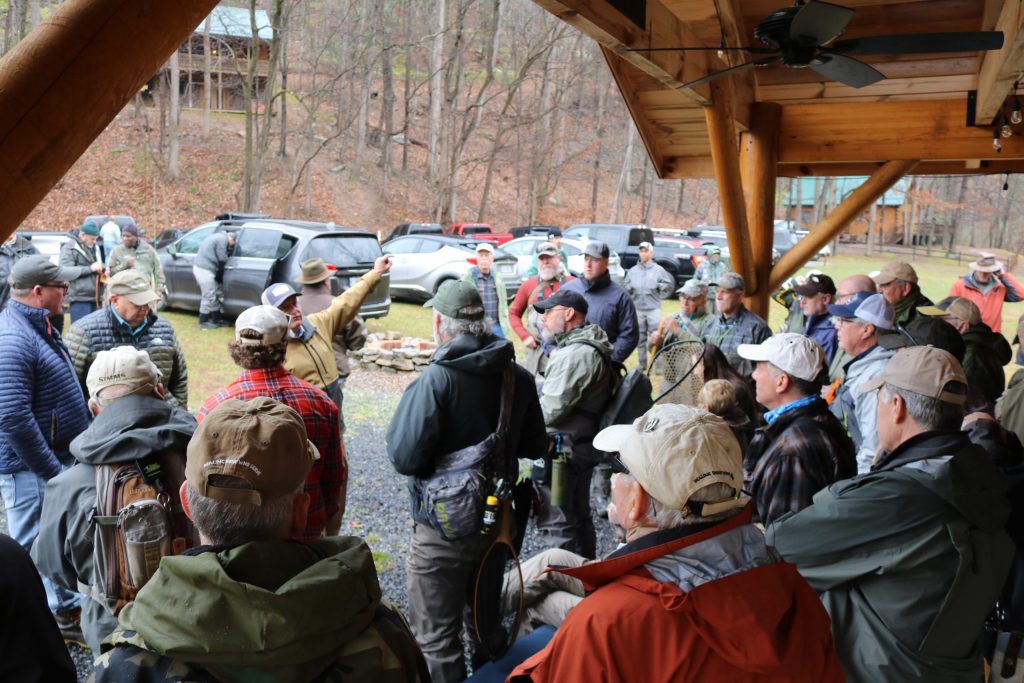
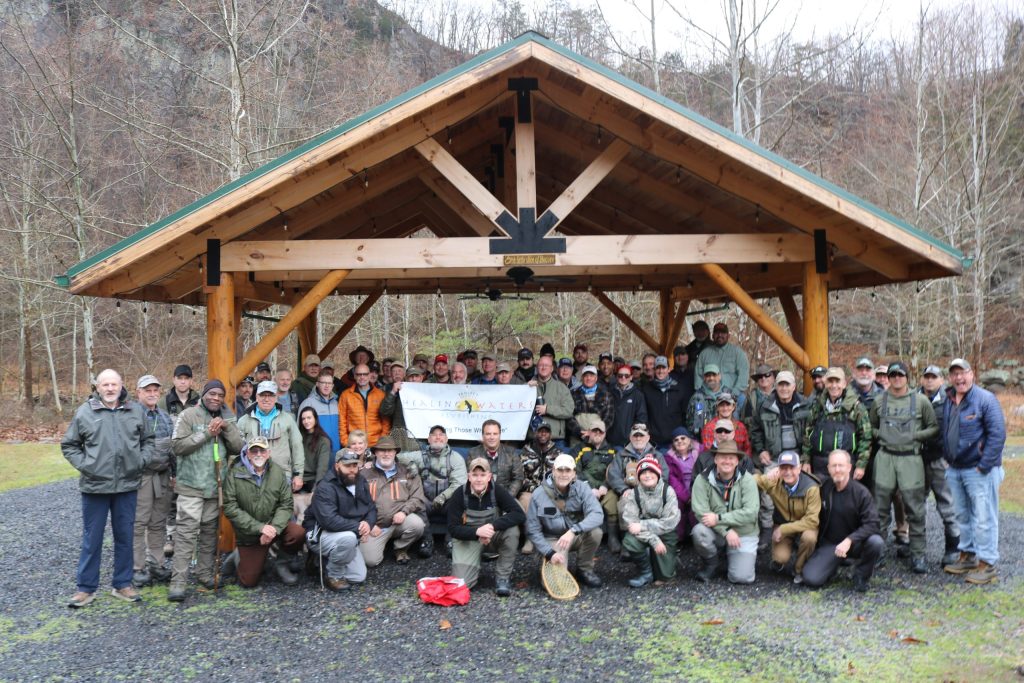
Despite some morning rain and fog, it didn’t take long for folks to land fish, A LOT of fish. Here are some of the highlights! It really was hard to narrow down the pictures to one article!
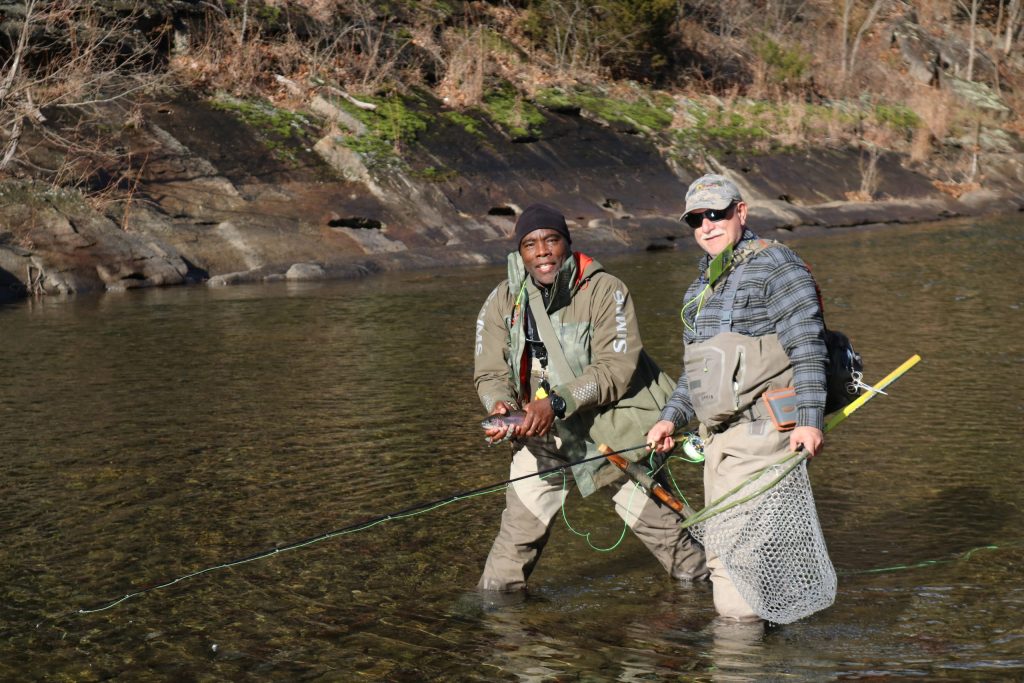
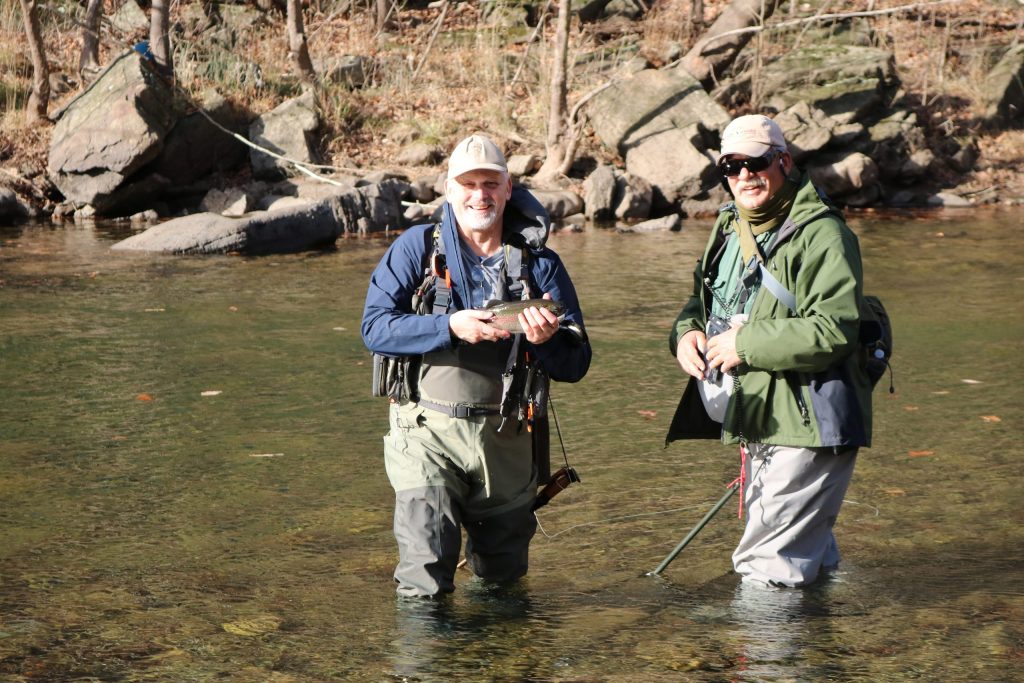
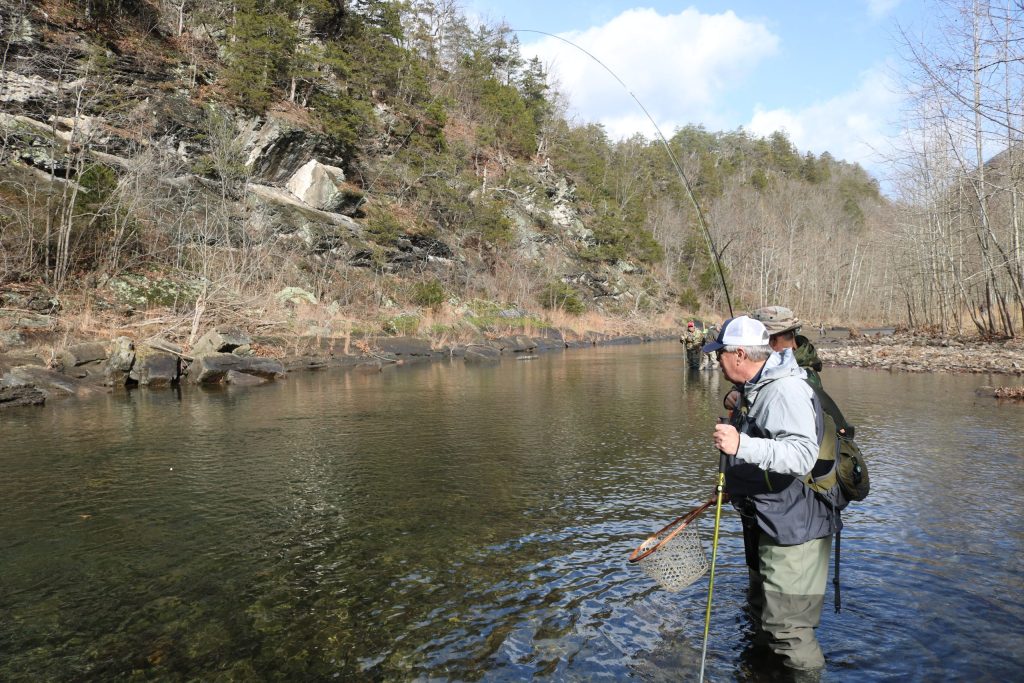
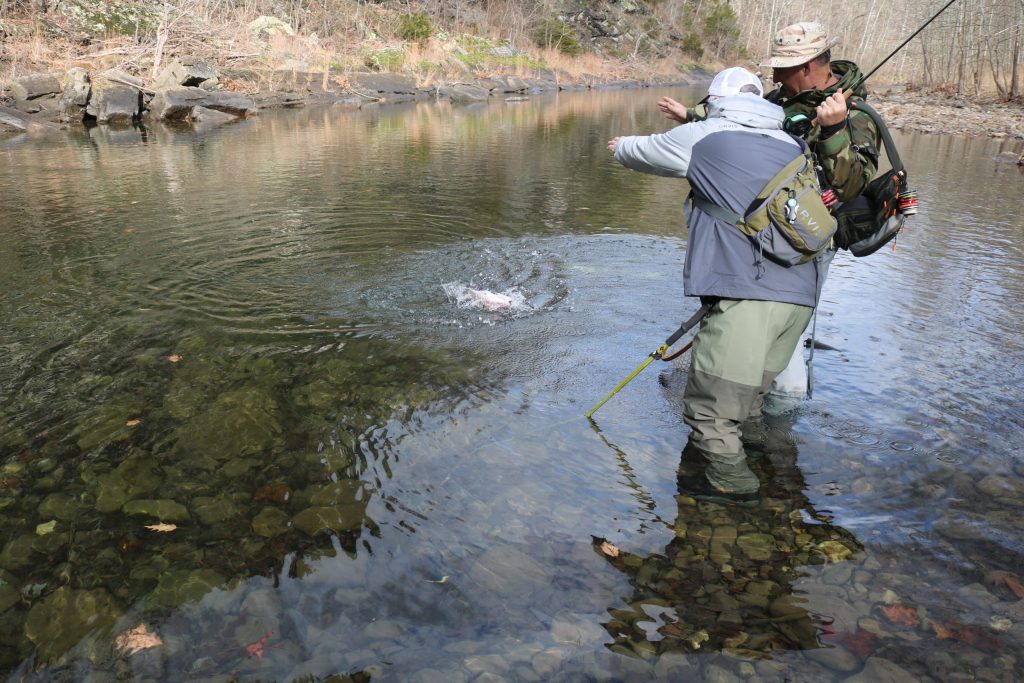
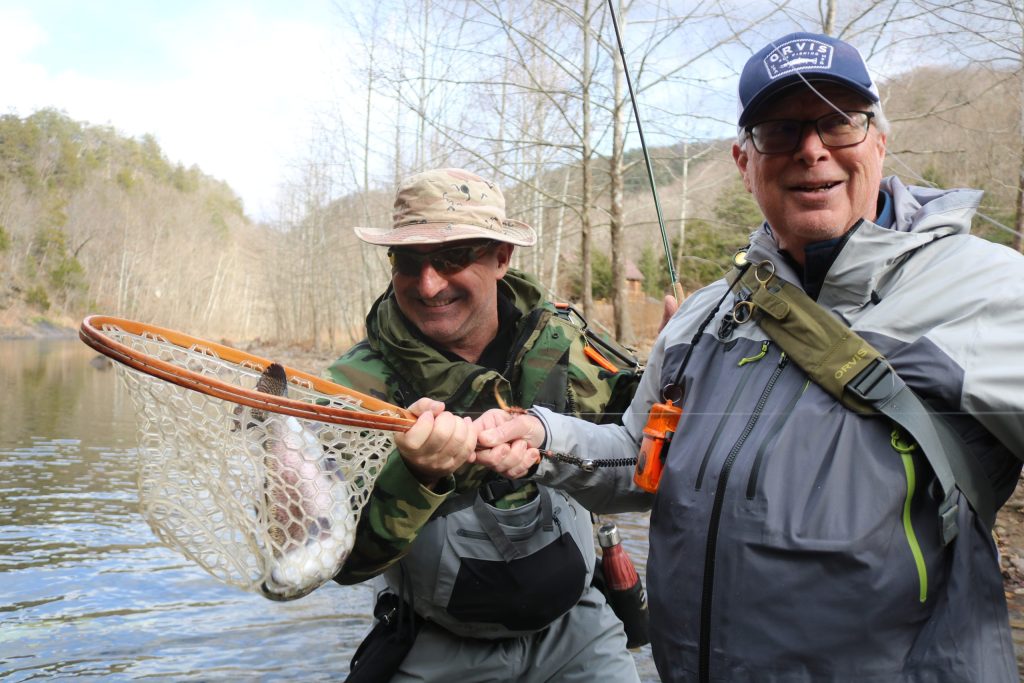
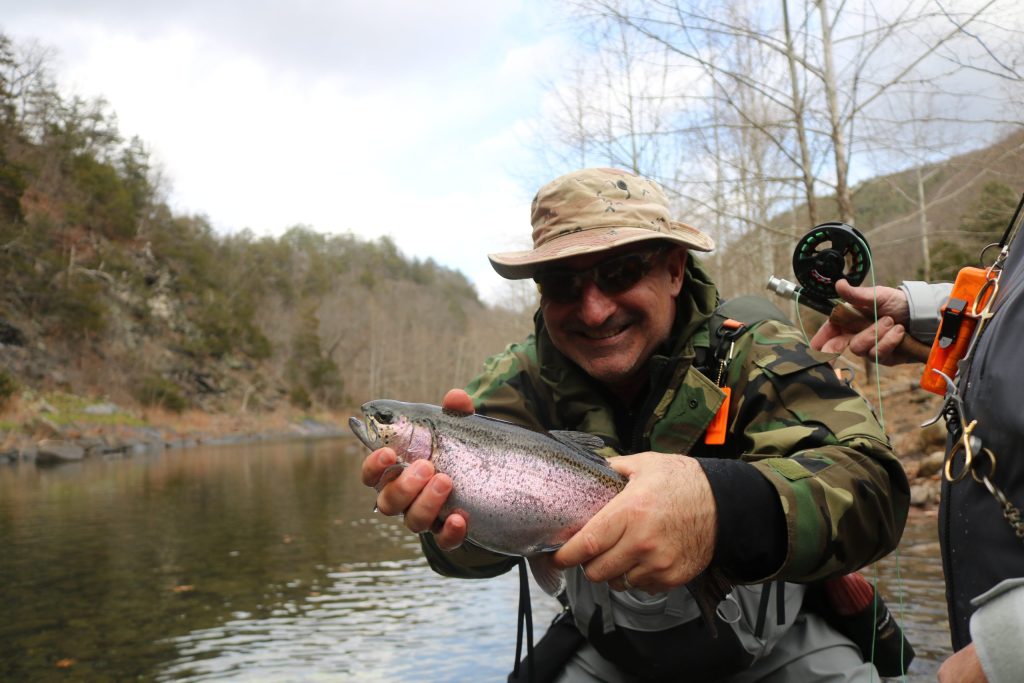
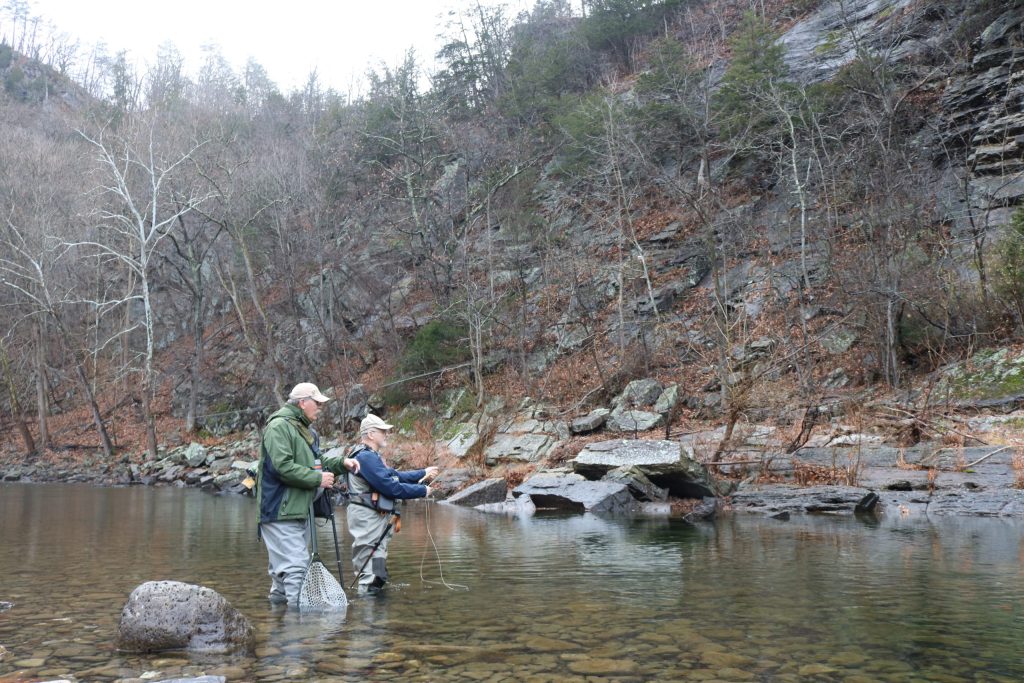
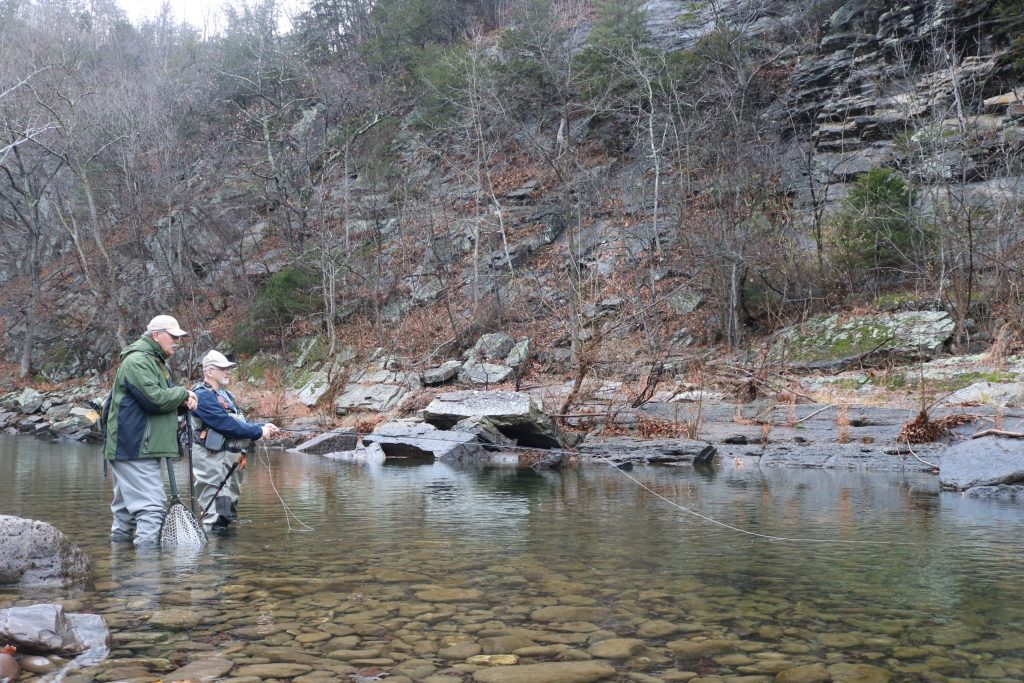
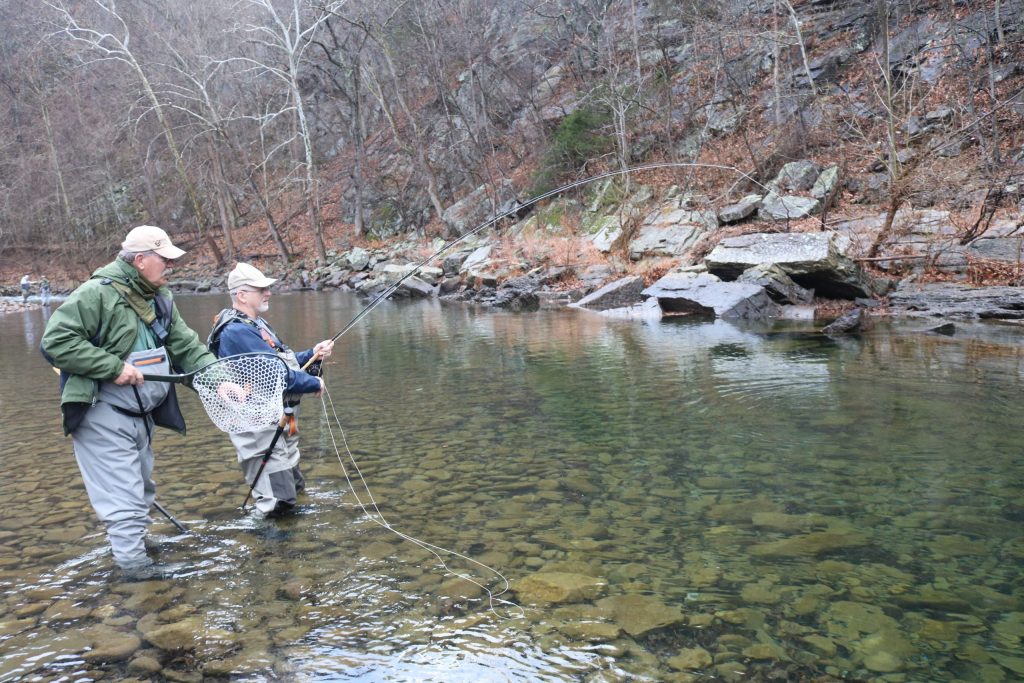
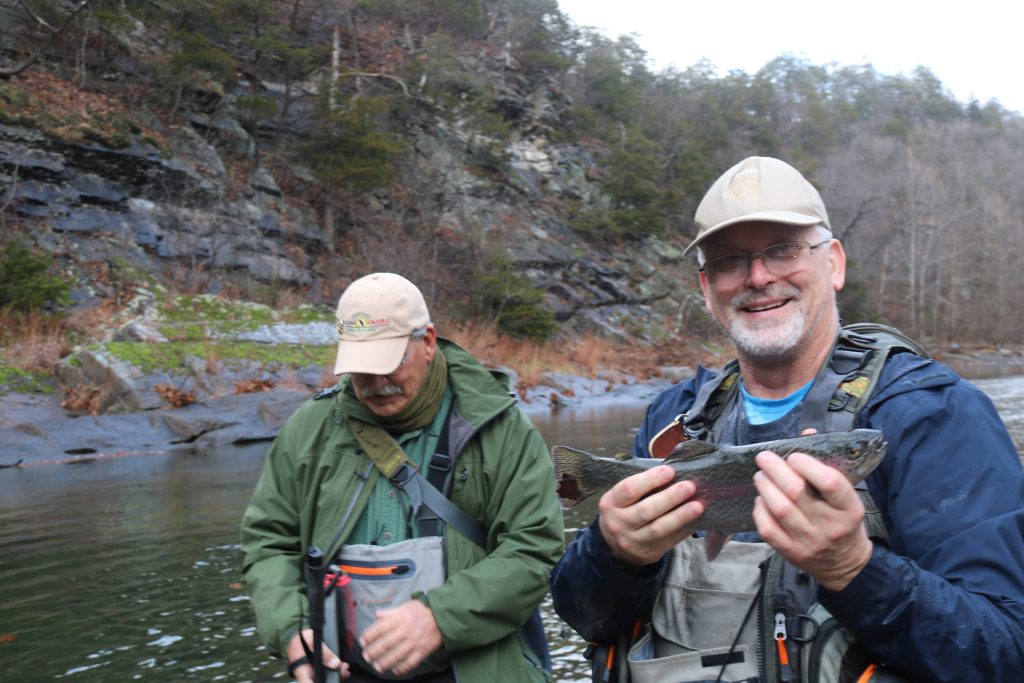
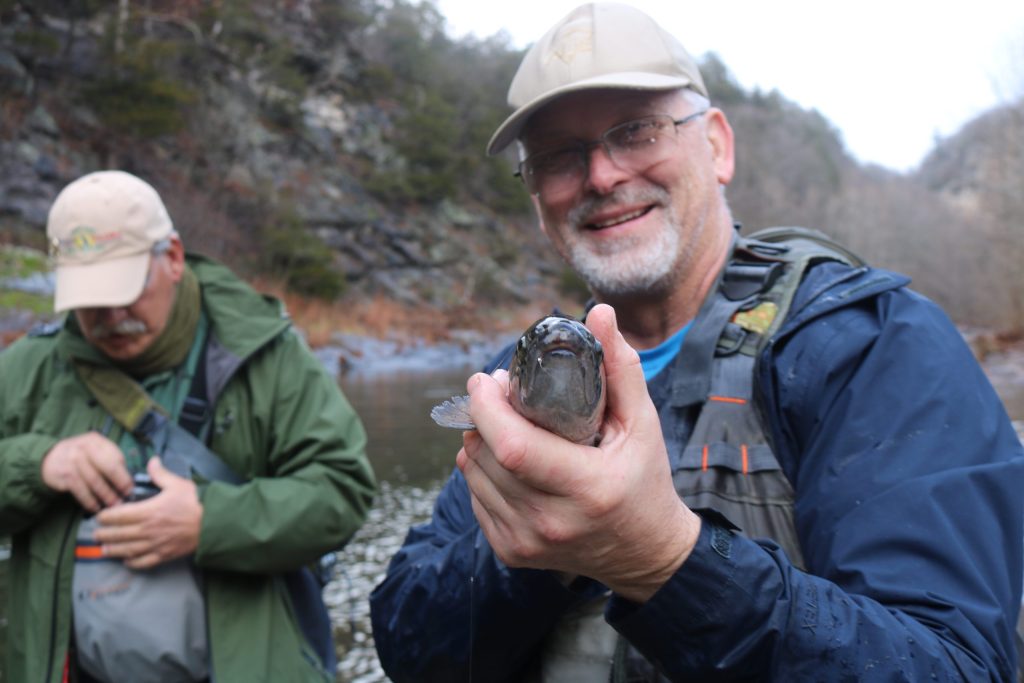
I wanted to also give a shout out to my DC Assistant Program Lead Mitch Fenton. Aside from being probably the youngest volunteer in a leadership position in the country, he is a fish WHISPERER! Here are some of the many photos of Mitch and his father John (long time DC volunteer) putting their participants on dozens of fish.
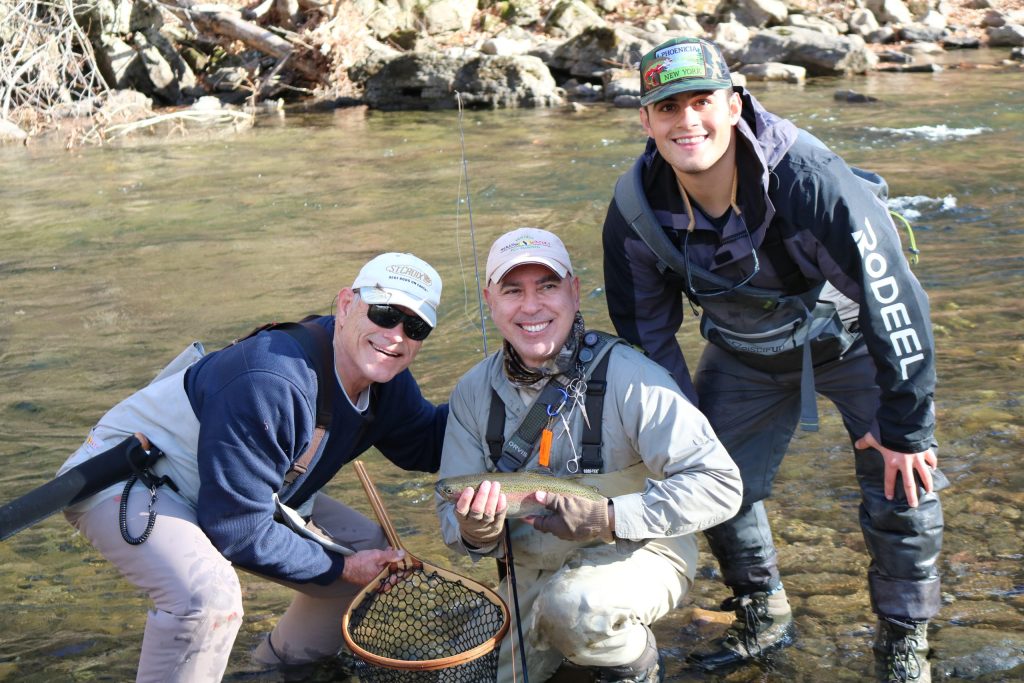
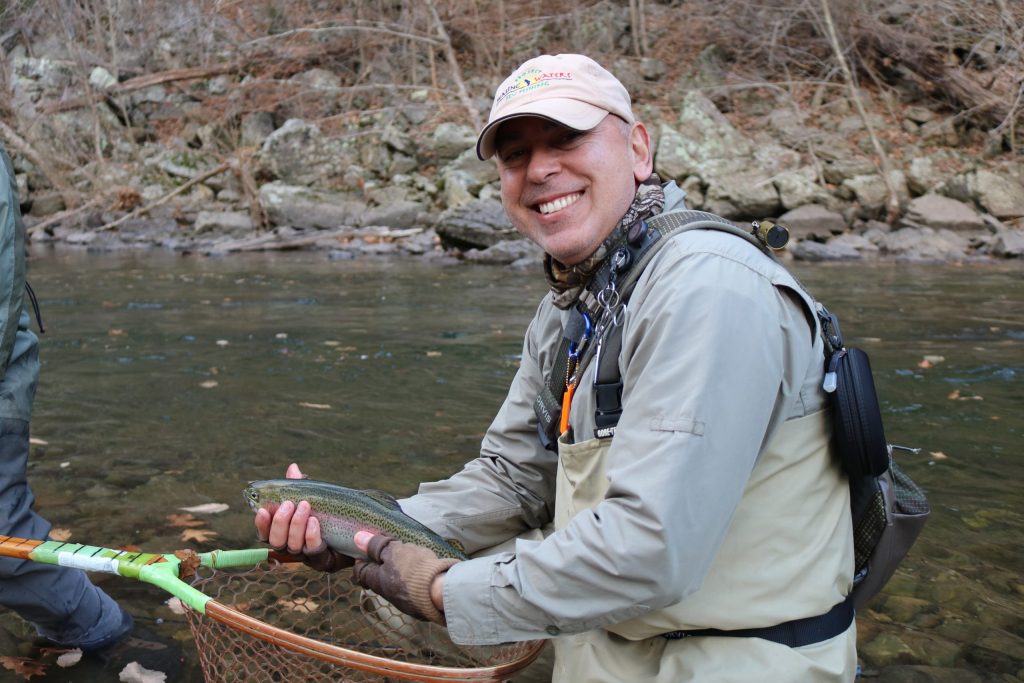
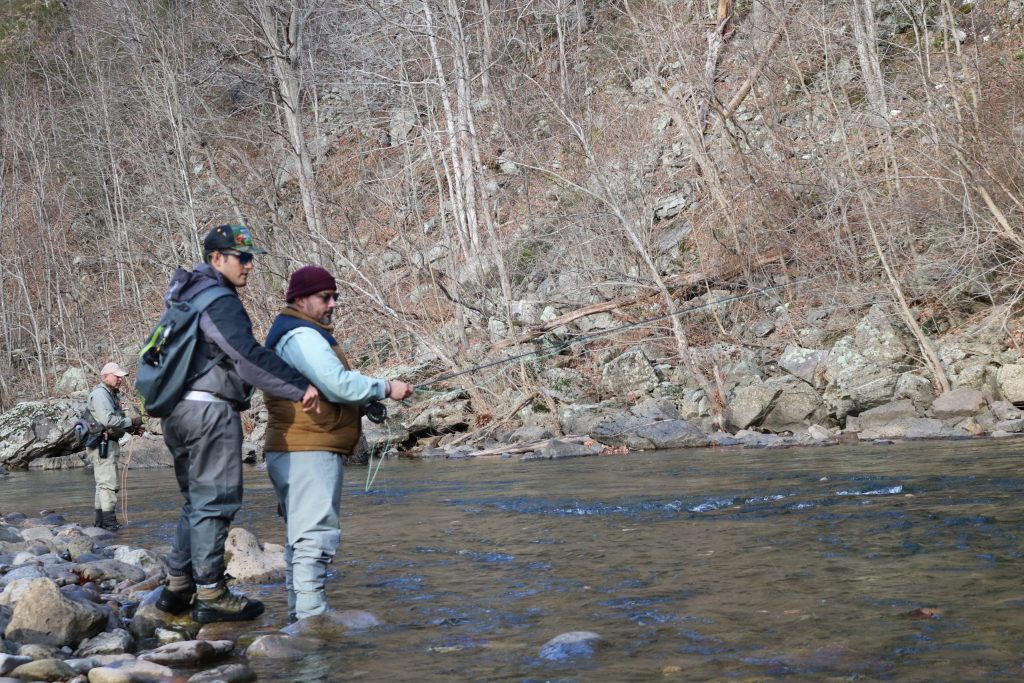
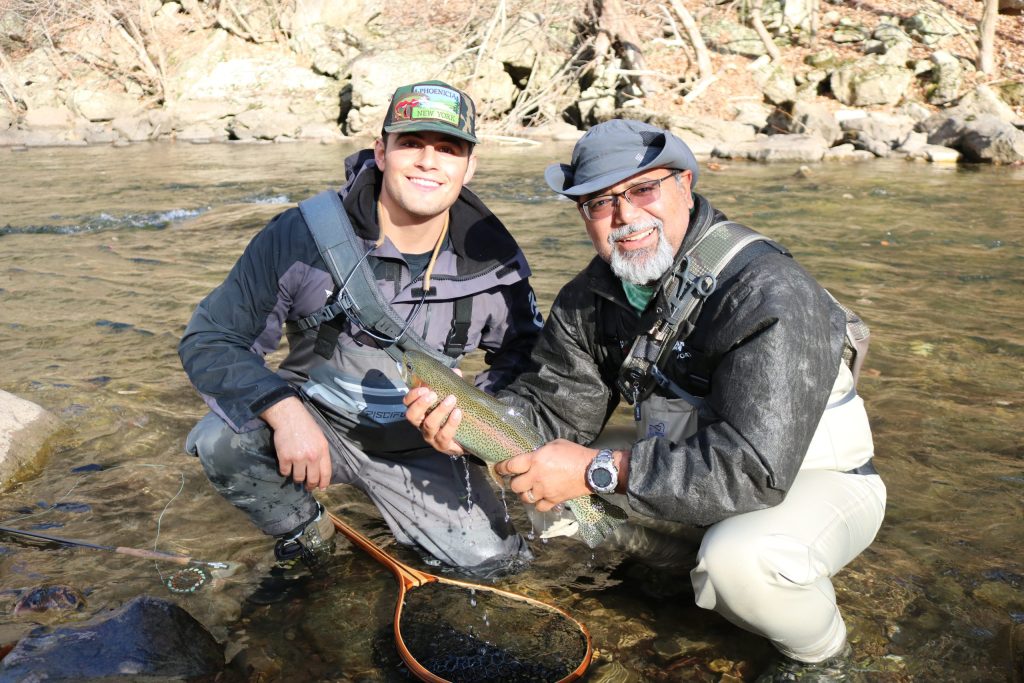
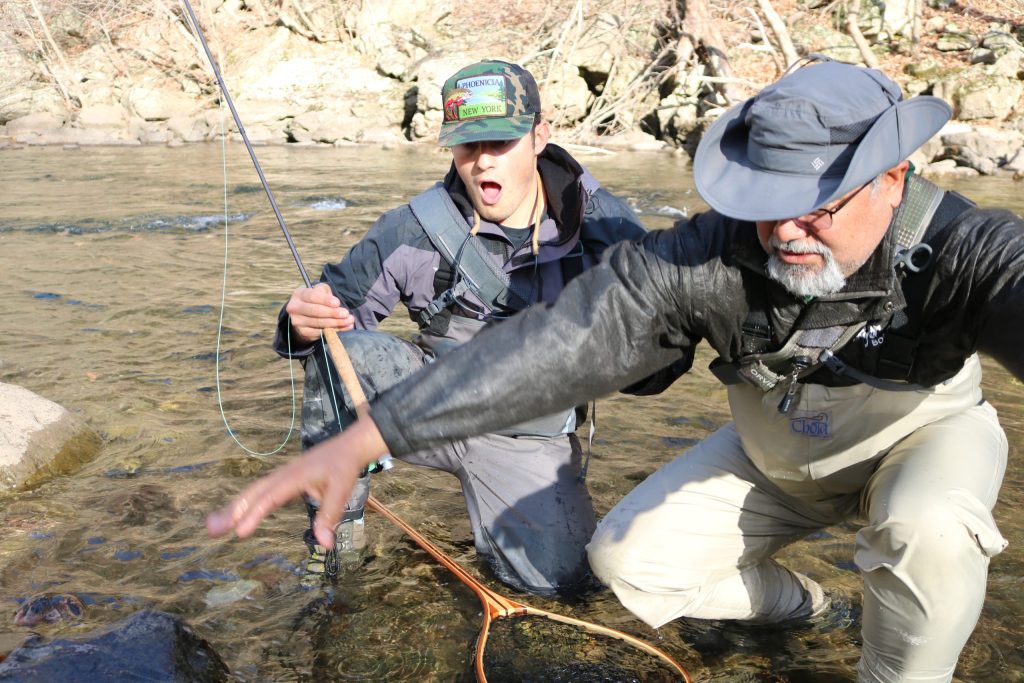
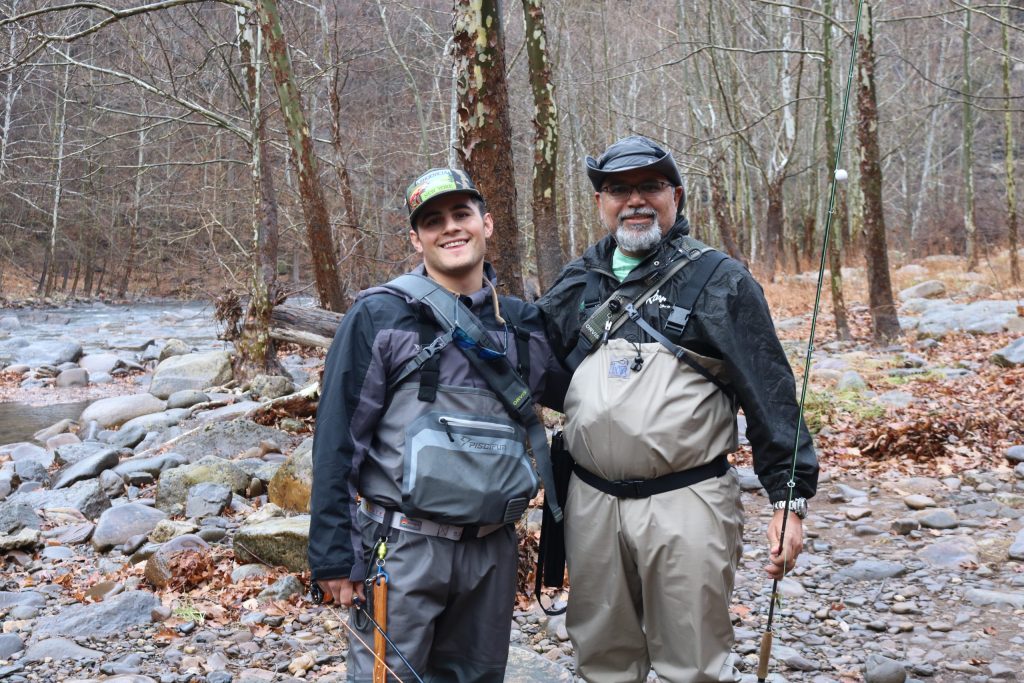
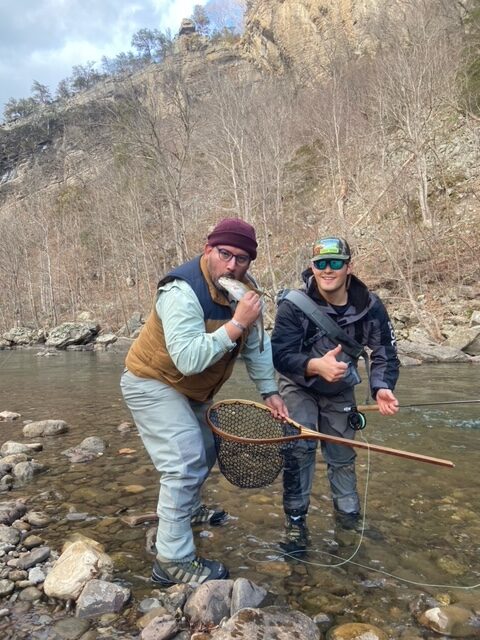
After a full day of fishing, it was back to the Ruritan Club to finalize the results of the fly-tying competition before dinner. After the voting and judging of the Yellow Humpy, the finalists received prizes of loon tying mats, tying materials, and some special tying tools for their efforts.
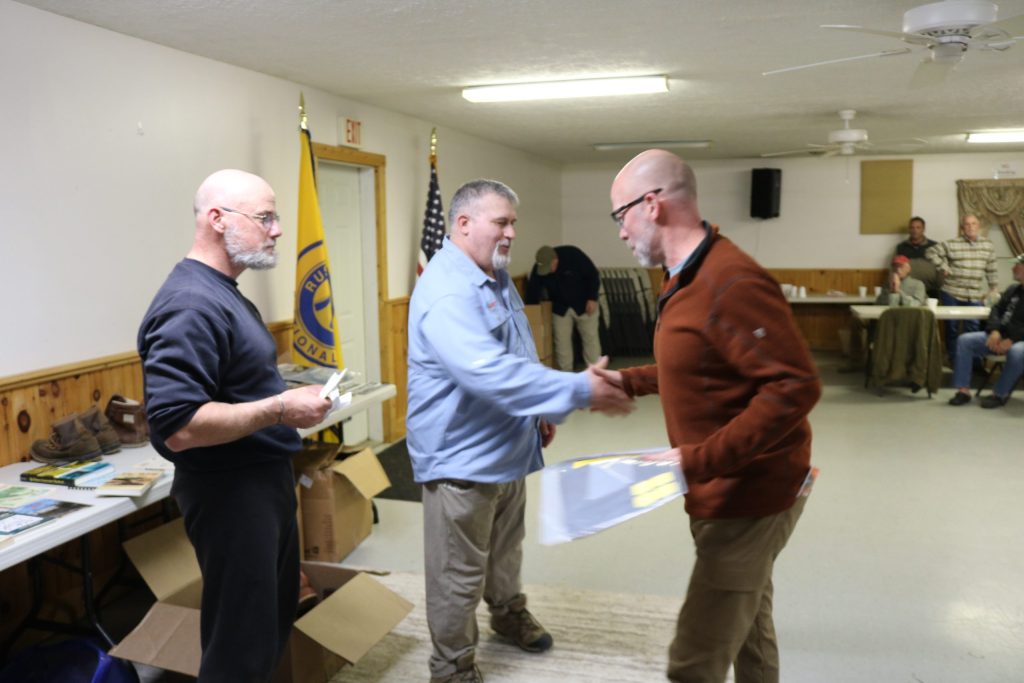
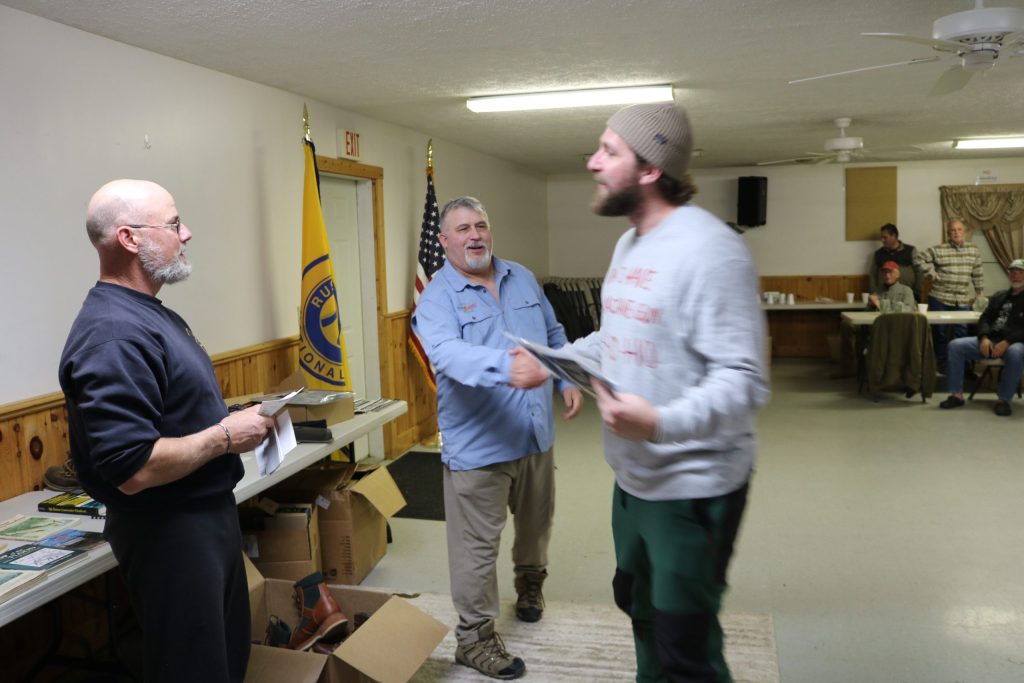
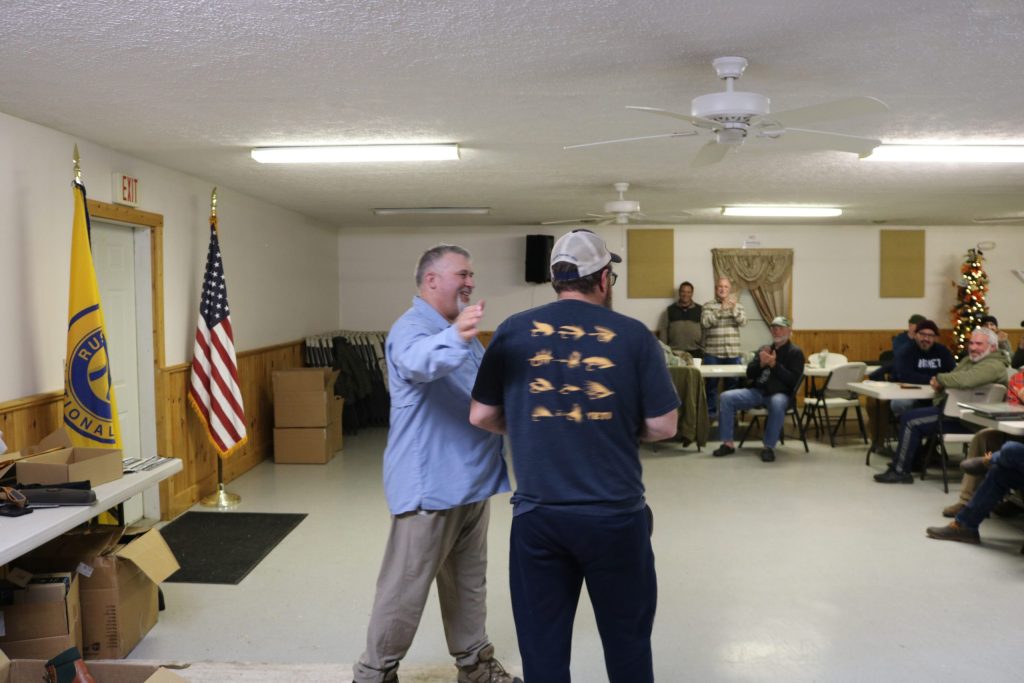
Everyone enjoyed another hearty meal of Salisbury steak and pork from Blue Roof. Special presentations were made for participants who overcame significant adversity to participate, and volunteers were presented Derek DeYoung Pilsner Glasses.
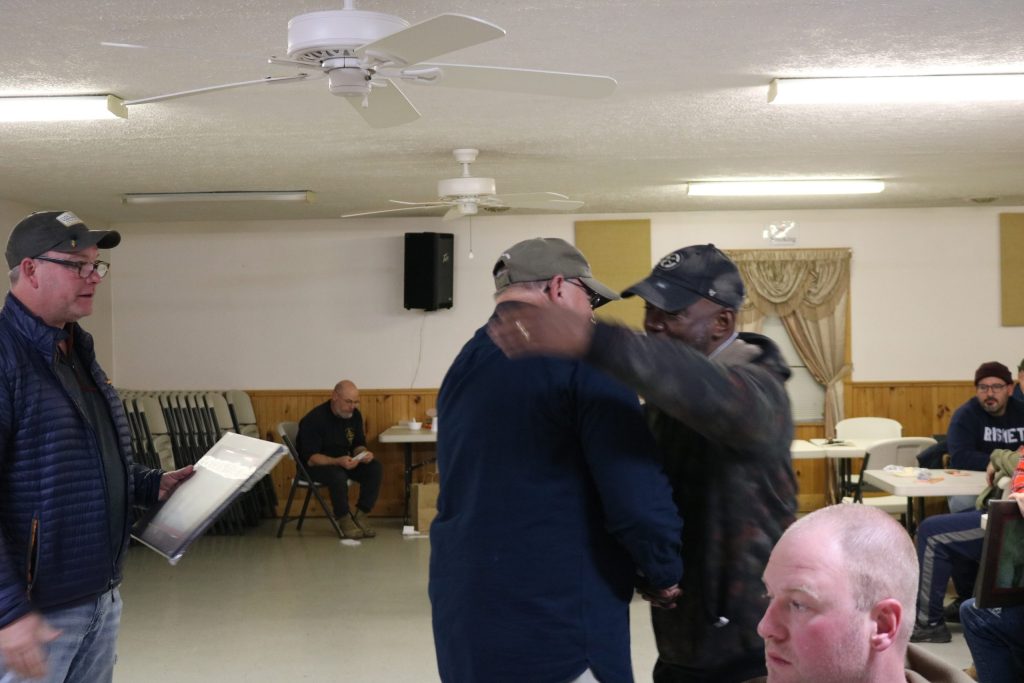
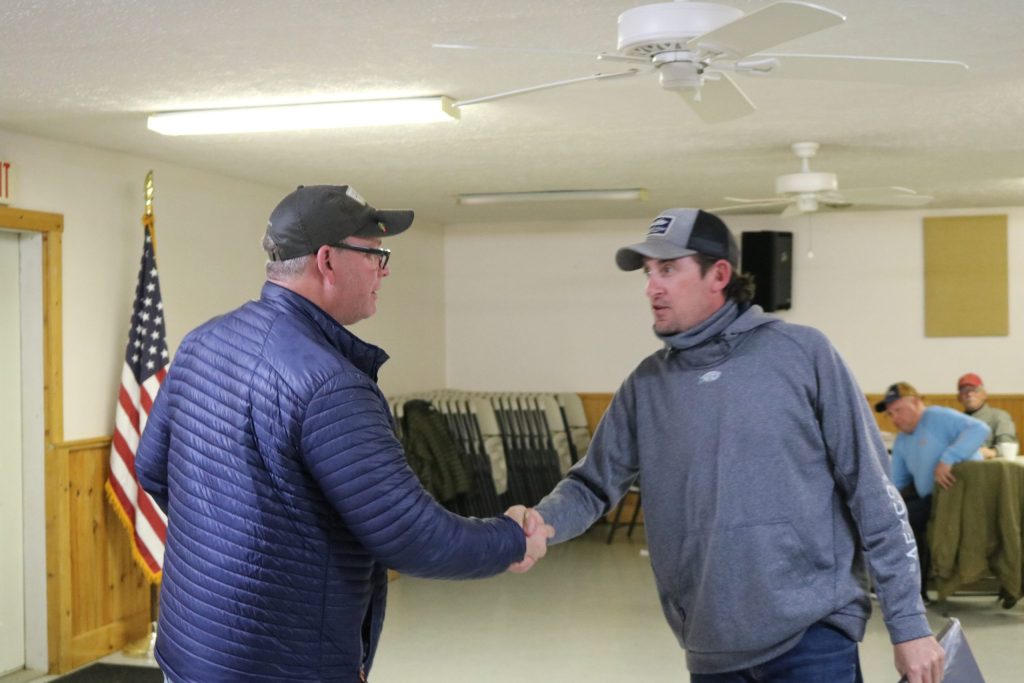
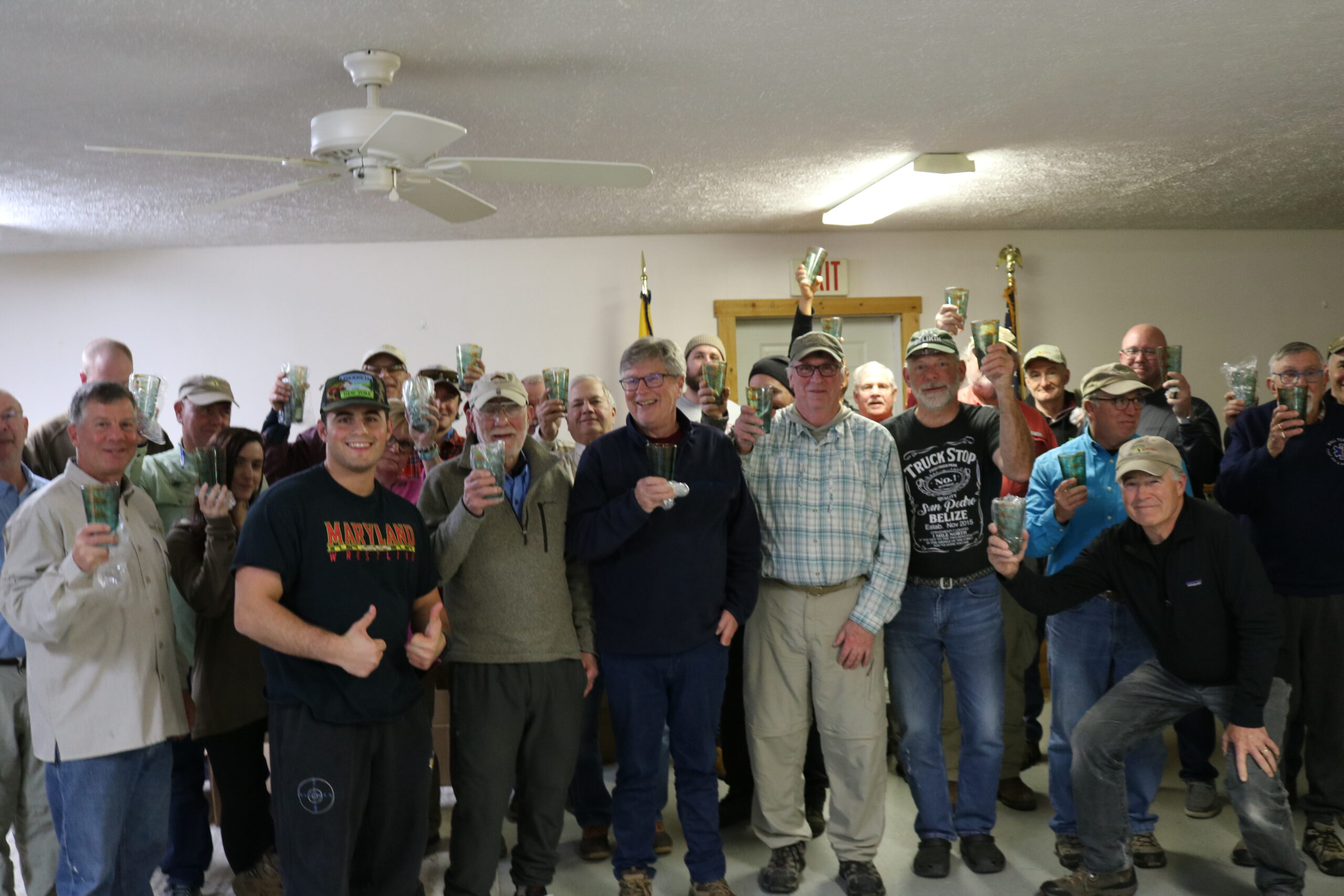
Some folks hit the water again on Sunday morning, and some made the trek home. The weekend was not defined by the amount of fish caught (but, to be clear, that number is high!). Still, by the lasting impact Harman’s Fly Fest has on all participants and volunteers each year when the event concludes. Each year, everyone who makes the trek to Harman’s brings canned and dry goods for the local Petersburg Interfaith Food Pantry to give back to the community. This year, the Fly Fest donated 1,733 pounds of food and a monetary donation of 728 dollars!
The event would not be possible without volunteers from around the National Capital Region and the event organizer Jim Bensinger. Jim expanded the event to include several of the region’s programs to create synergy and promote collaboration between programs. I think I speak for all the participants and volunteers when I say that Jim is onto something here because this event was a heck of a lot of fun and everyone made some new friends. Thank you to Jim and the Besinger Family for all that you did to make this happen.
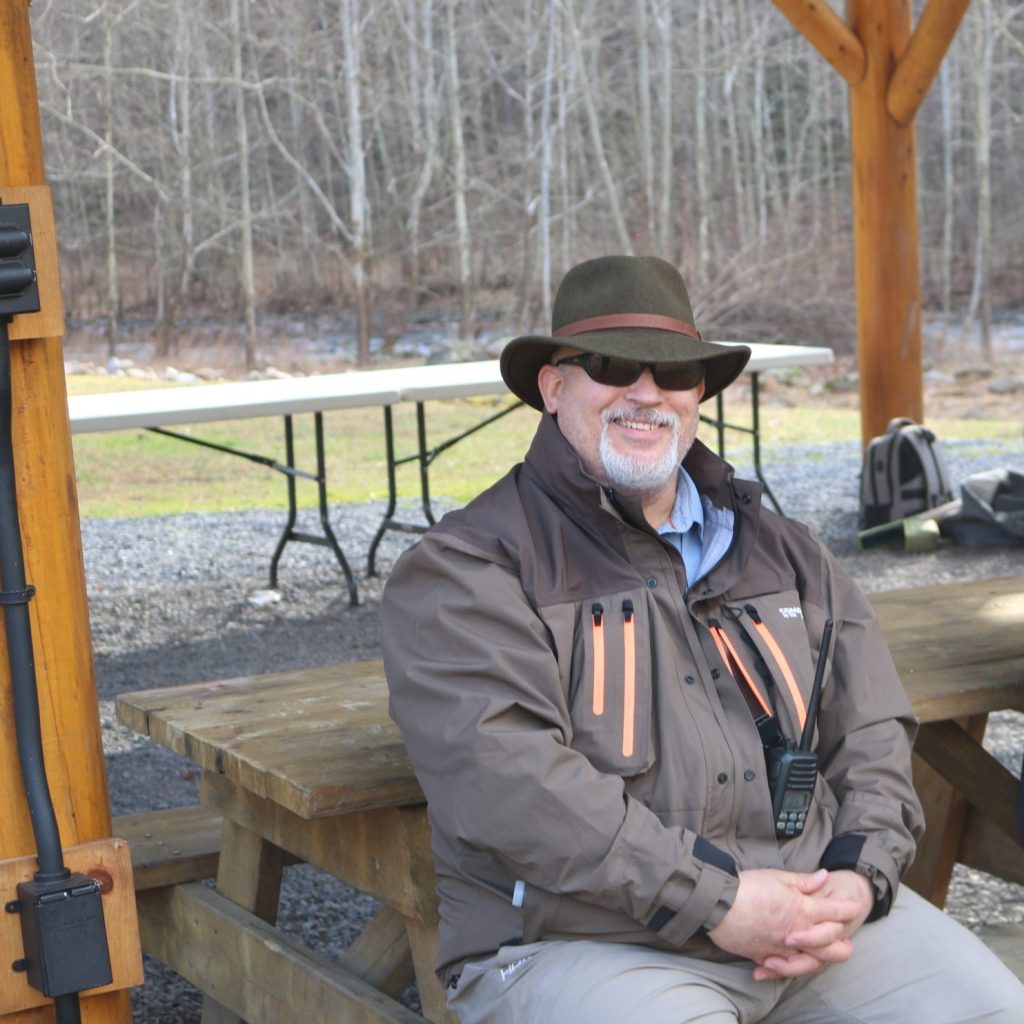
I’d also like to thank my friend Pat McBride of Reston, VA, for lending me his SWEET Cannon camera we used to document this event, and my wife (and Navy Veteran!) Ingrid for taking the pictures, enabling me to guide part of the day.
Here is photo dump of many other great photos taken throughout the day:
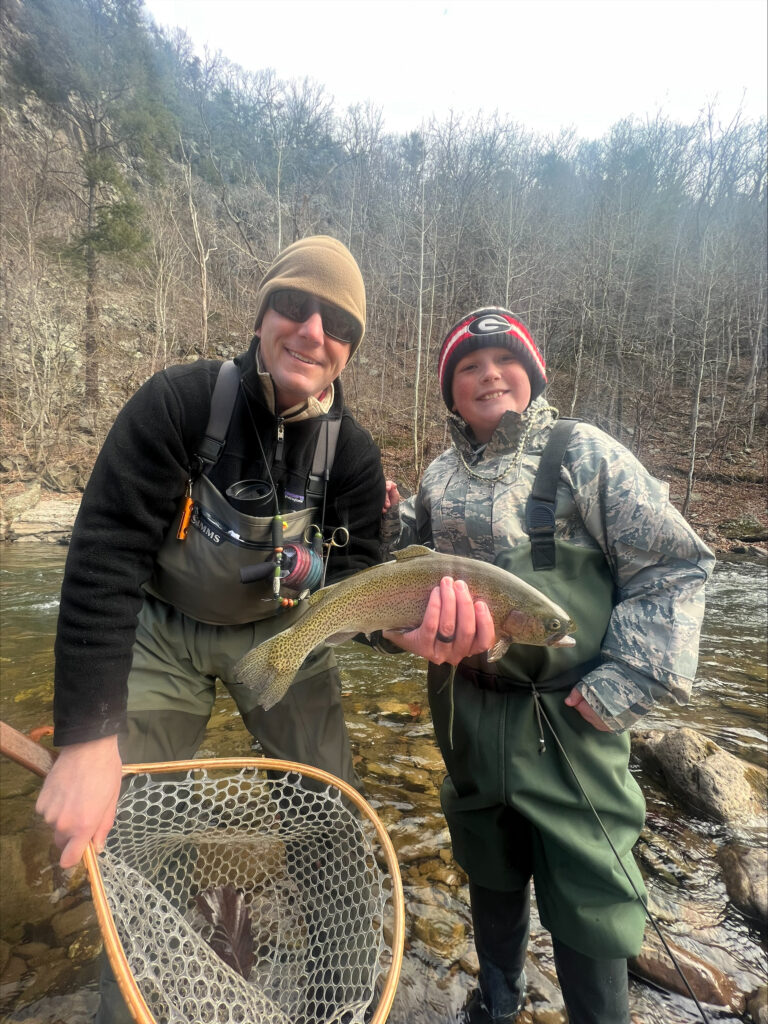
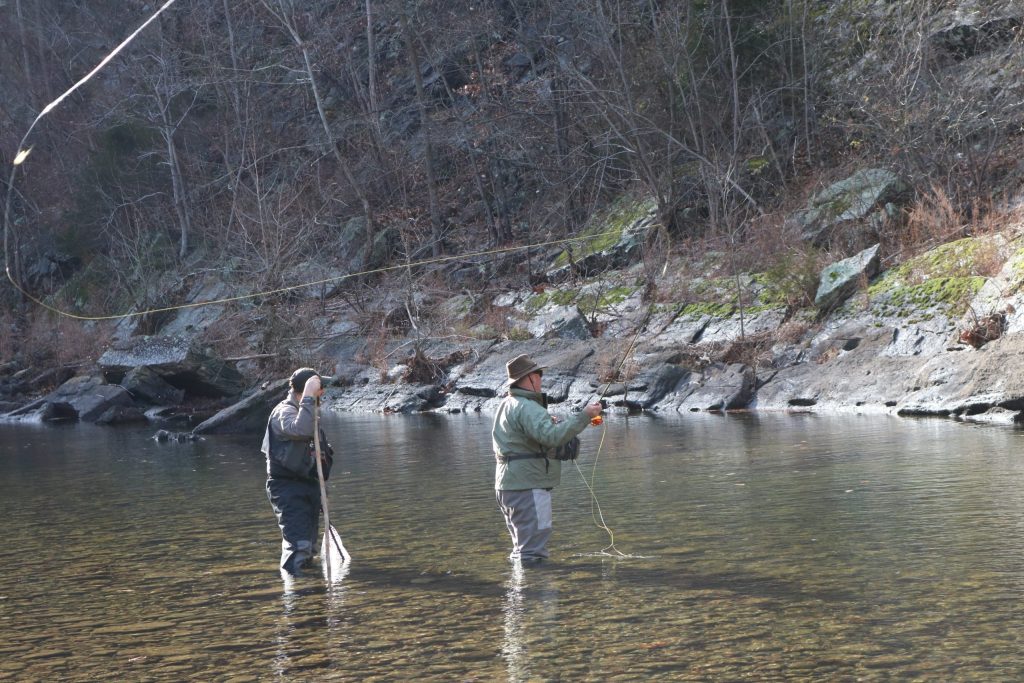
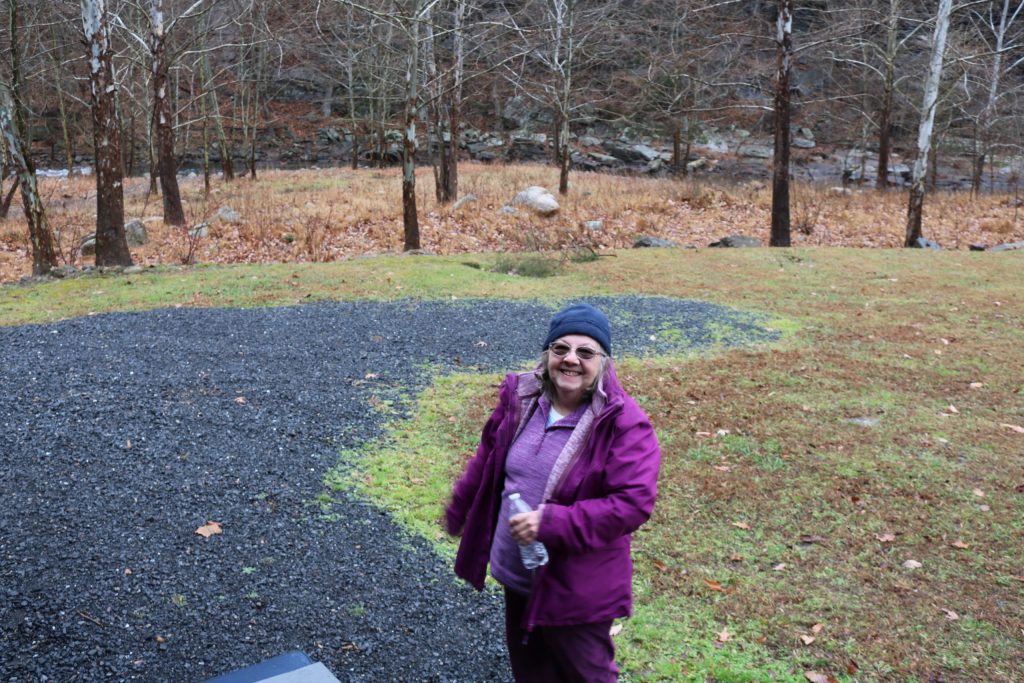
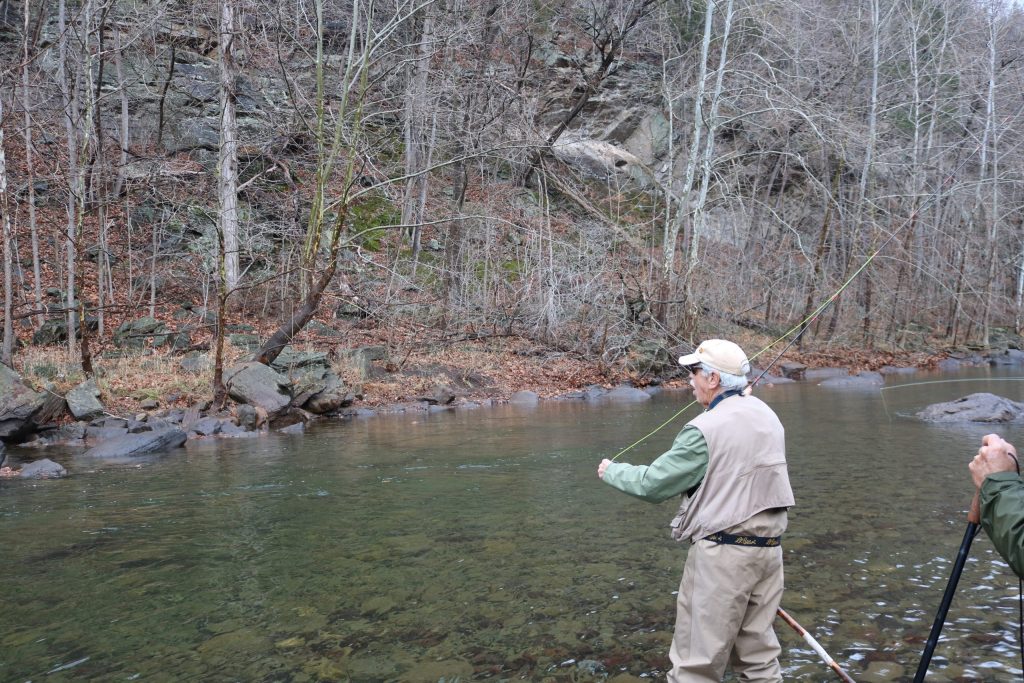
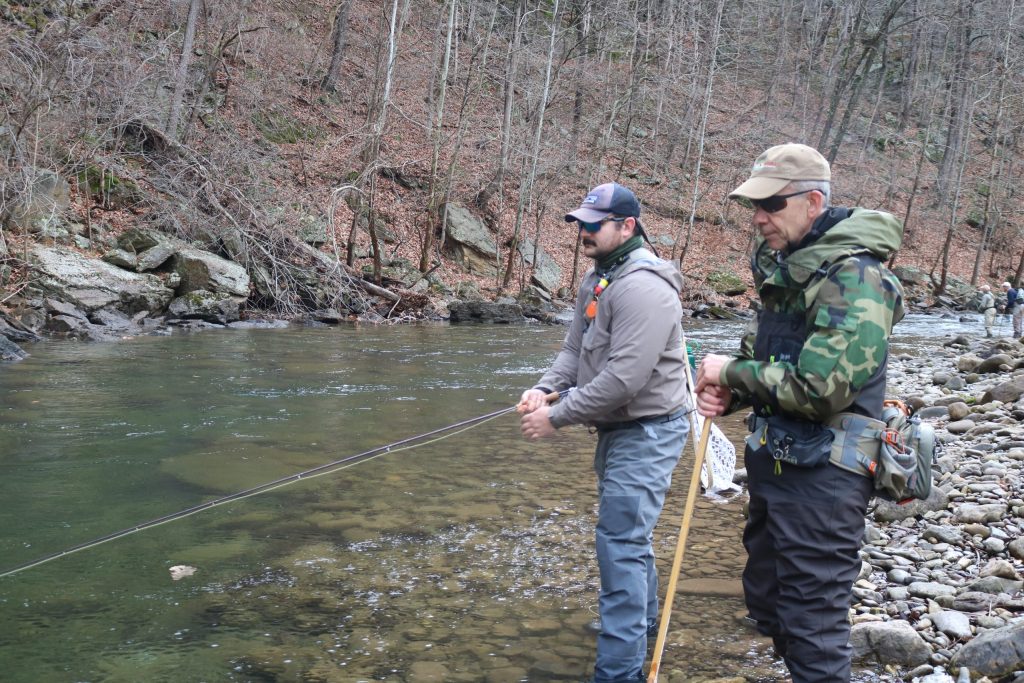
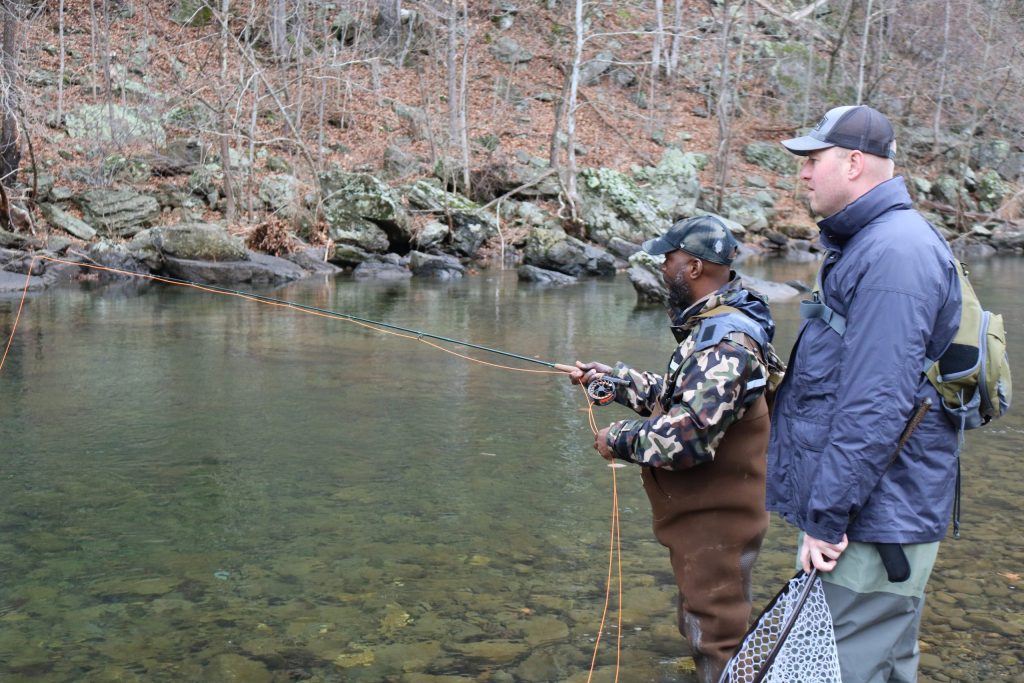
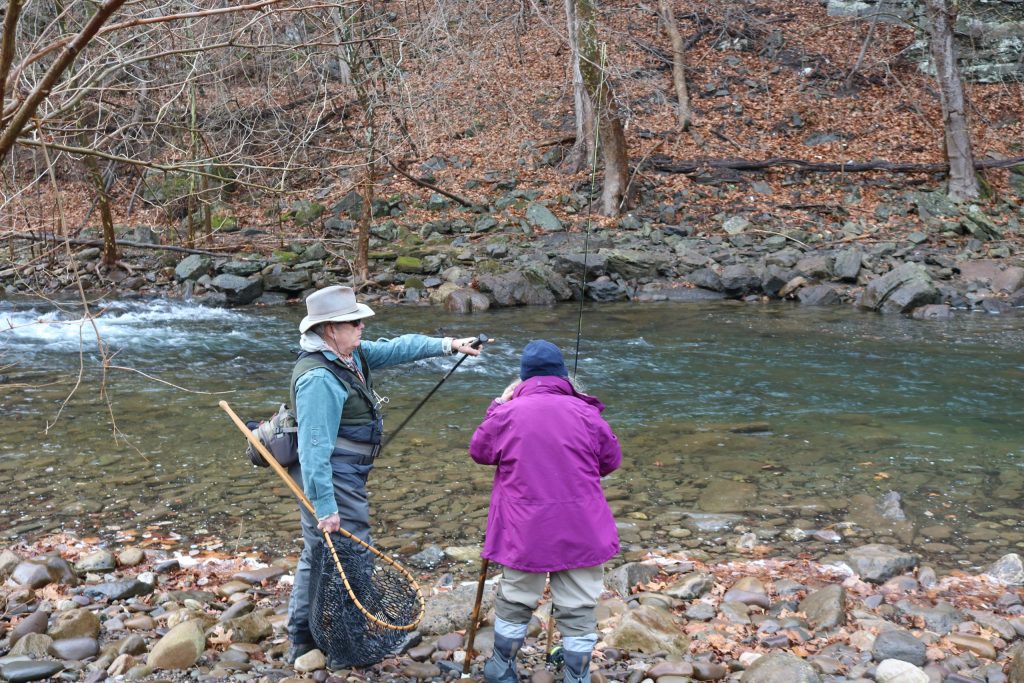
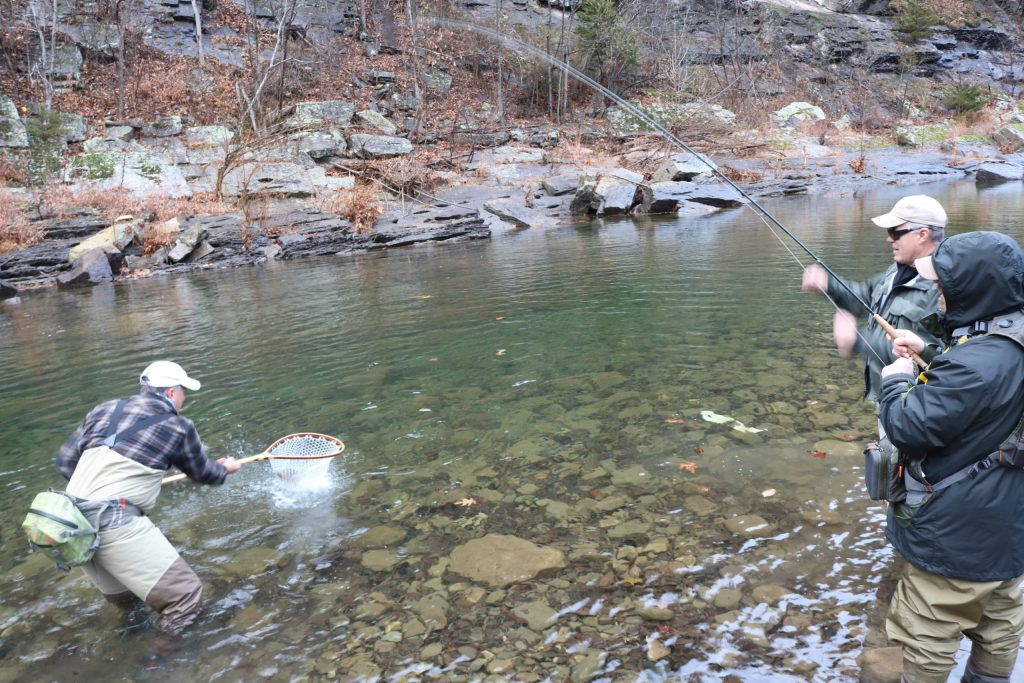
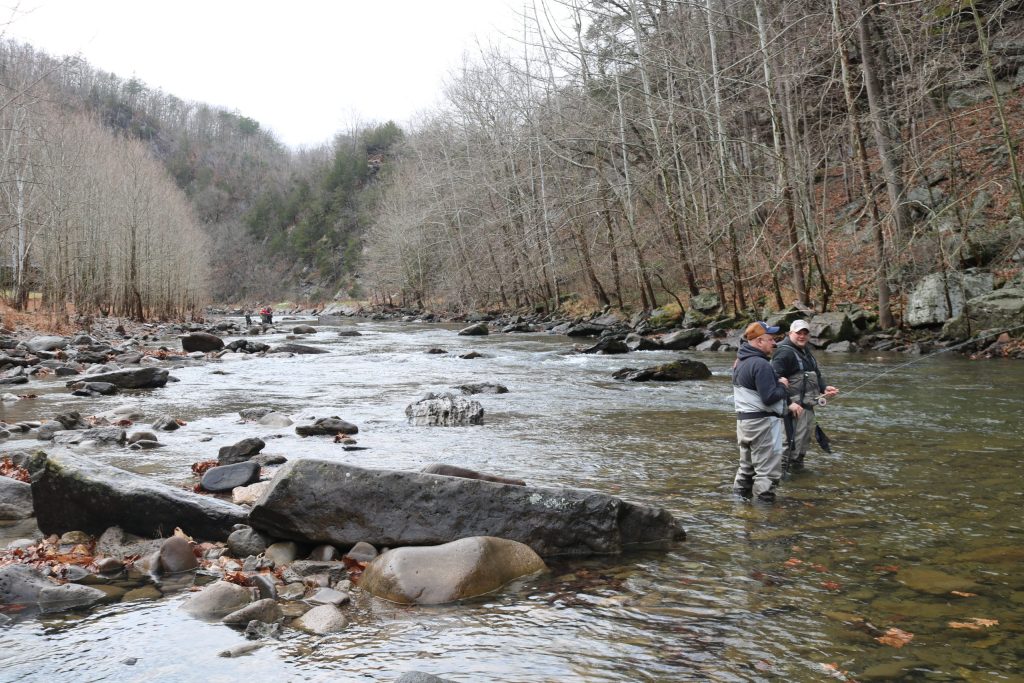
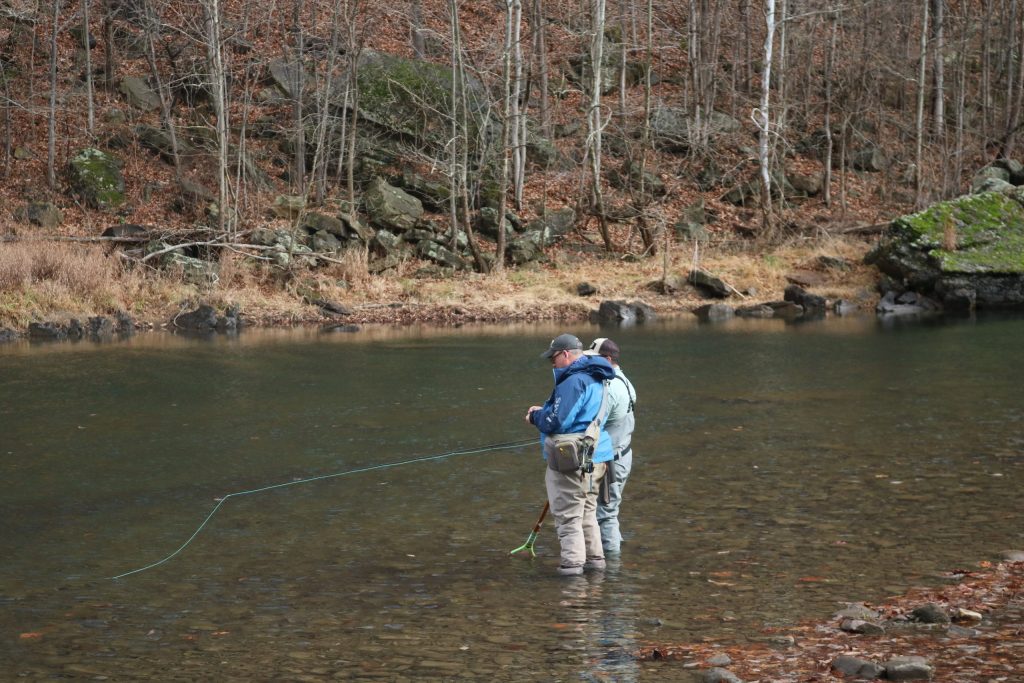
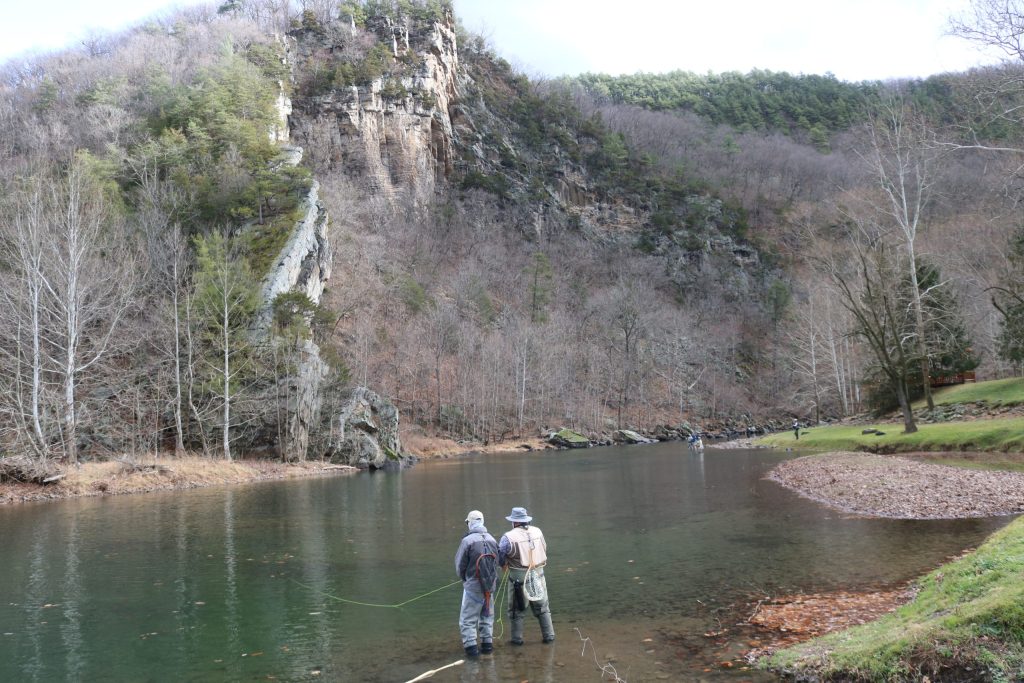

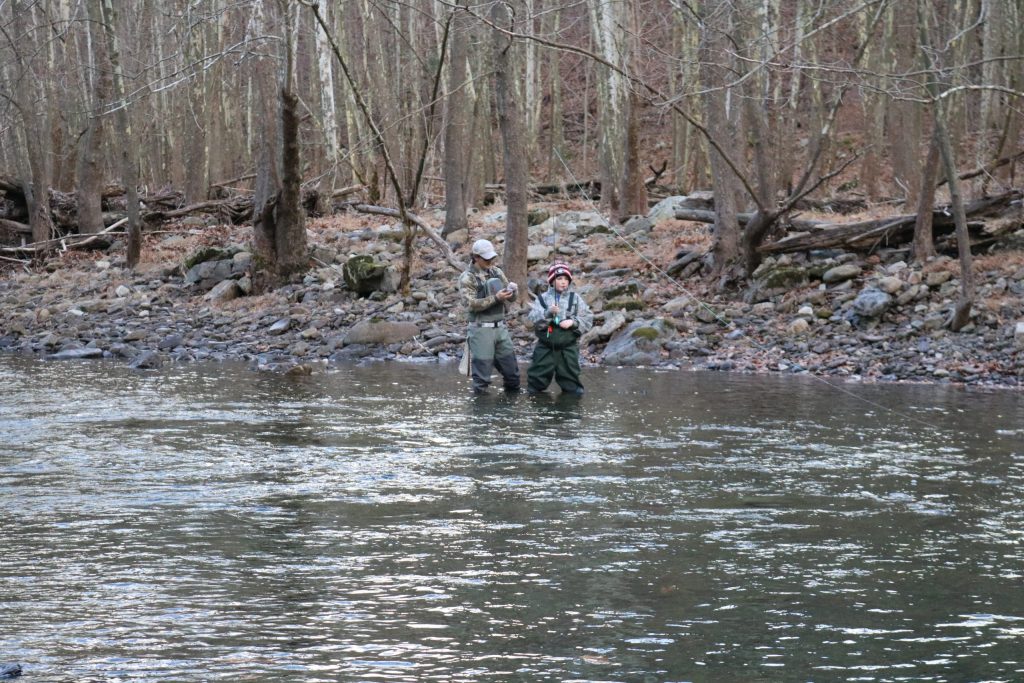
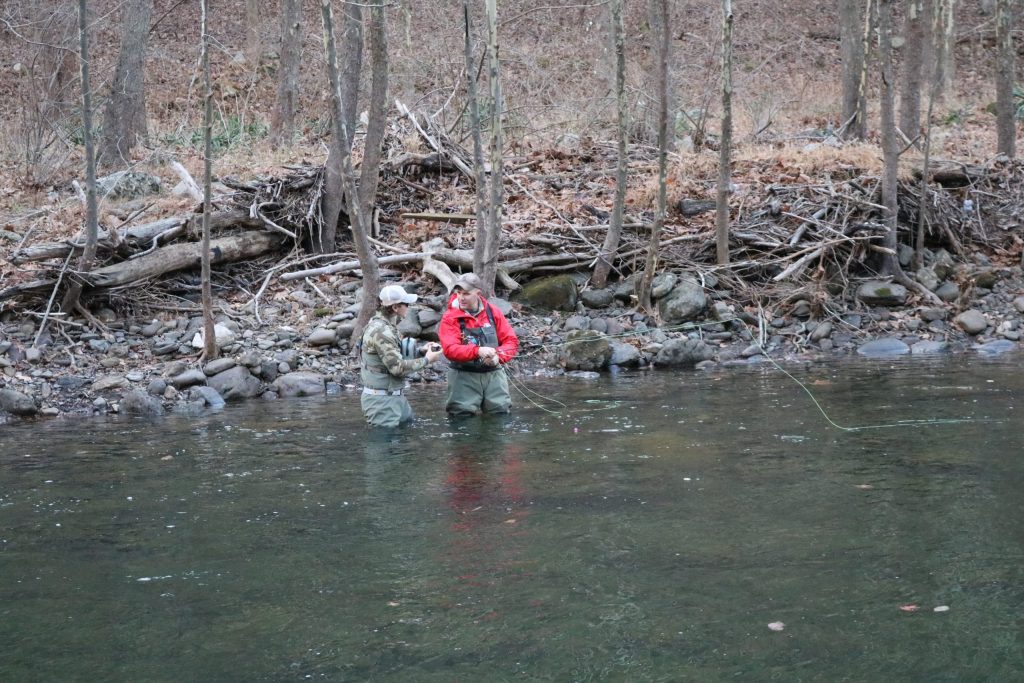
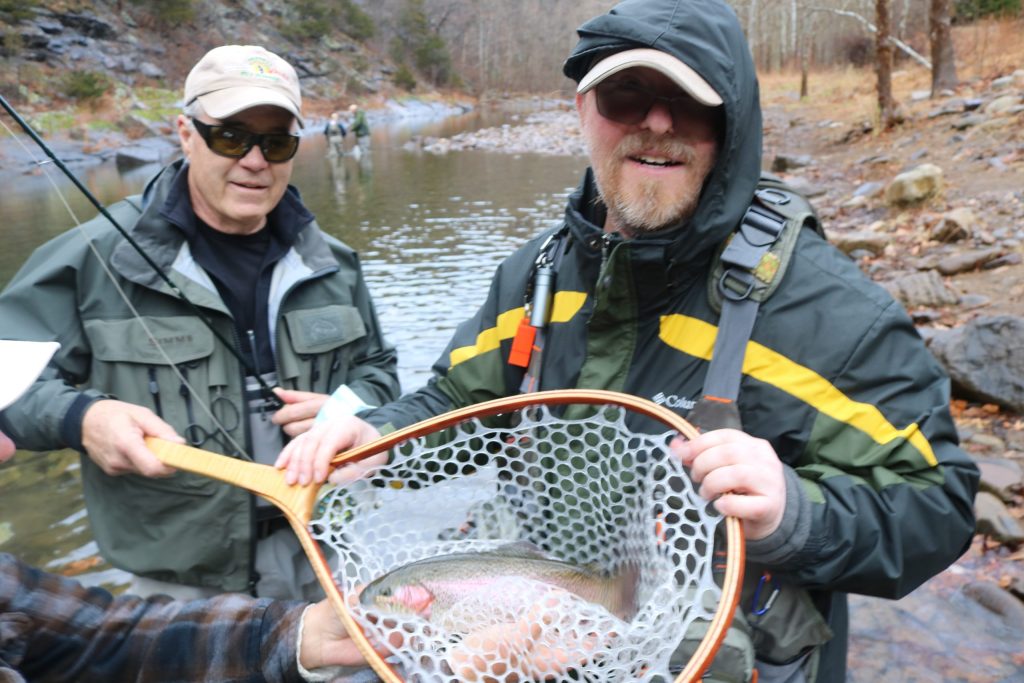
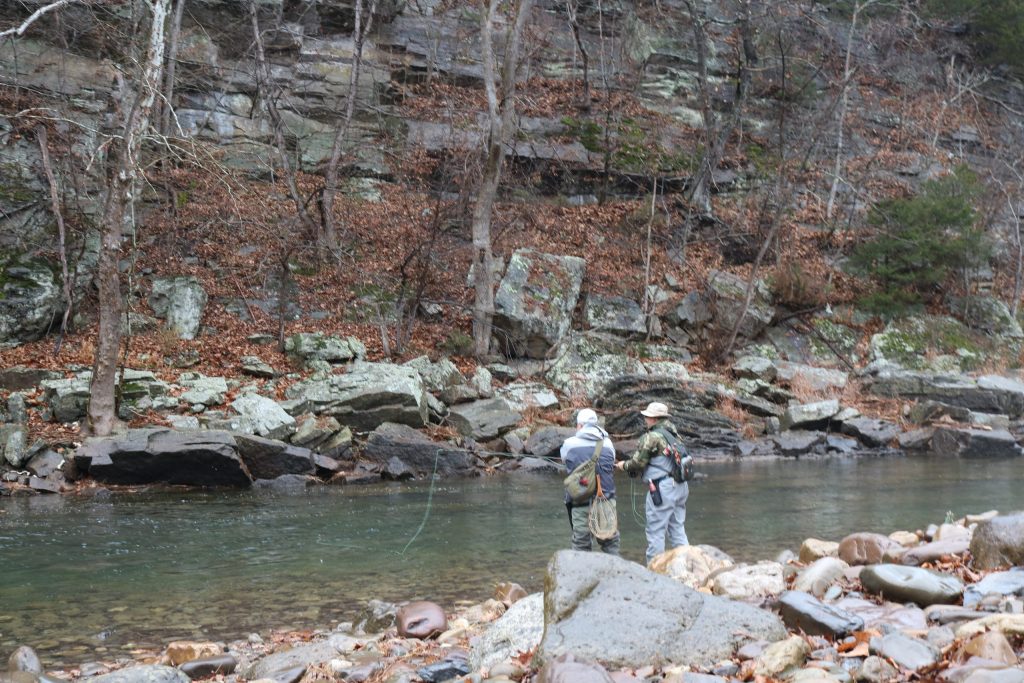
Harman’s Luxury Log Cabins Website | Harman’s Luxury Log Cabin Facebook | Harman’s Luxury Log Cabin Instagram
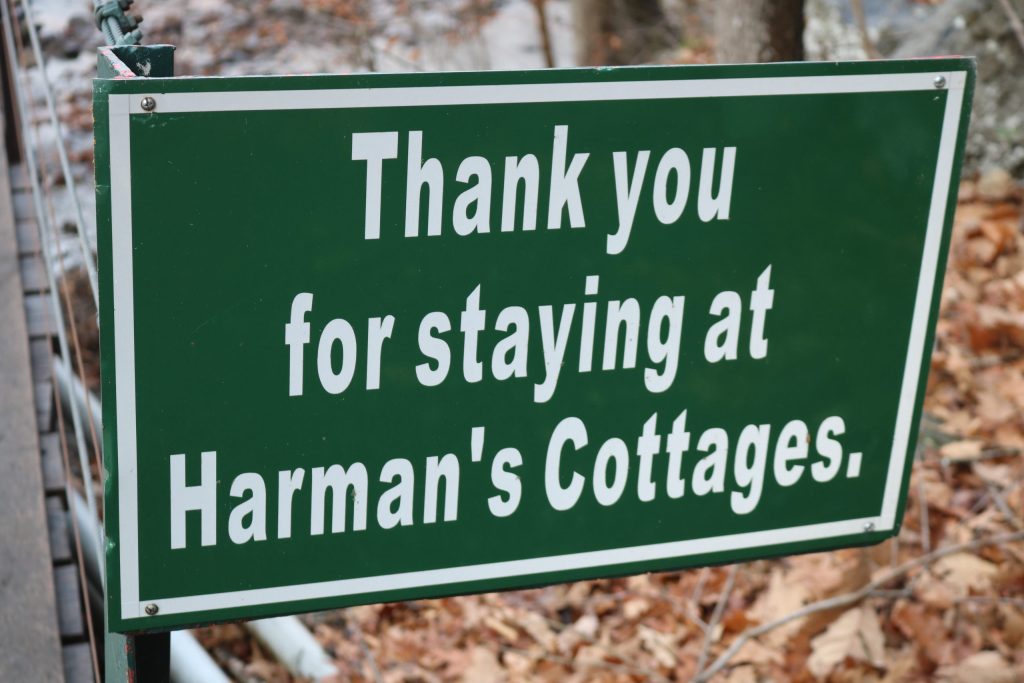
Latest News
PHW Volunteers Partner with TAPS at the National Mall
November 16, 2022
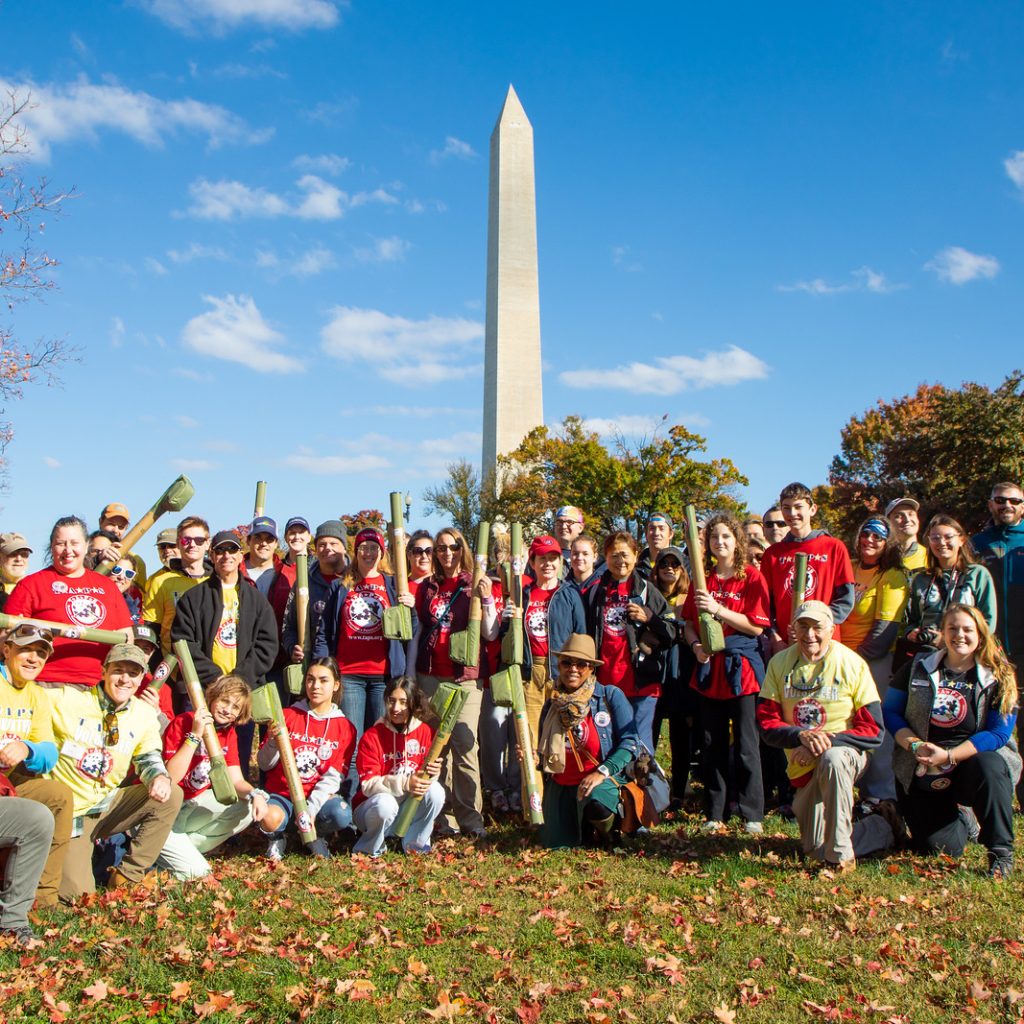
TAPS is the national nonprofit organization providing compassionate care and comprehensive resources for all those grieving the death of a military or veteran loved one.
On a brisk October morning several otherwise unrelated groups came together at the National Mall tidal basin with a common purpose: supporting the military community, specifically those grieving the death of a military loved one.

Volunteers from the DC Program of Project Healing Waters partnered with the Tragedy Assistance Program for Survivors (TAPS), National Capital Chapter – Trout Unlimited (NCC-TU), the National Park Trust, Amazon Web Services, DC Department of Energy and Environment (DOEE), and Ackerman LLP to provide a day of fly fishing to a group of families grieving the death of their military loved ones. DC PWHFF and NCC-TU Volunteers provided instructions and guiding, the National Park Trust provided brand new Orvis Encounter rod and reel to all family members, DC DOEE Fish and Wildlife Biologist Chris Campo provided traditional tackle for catfishing, Ackerman LLP provided flies, and Amazon Web Services provided lunch!
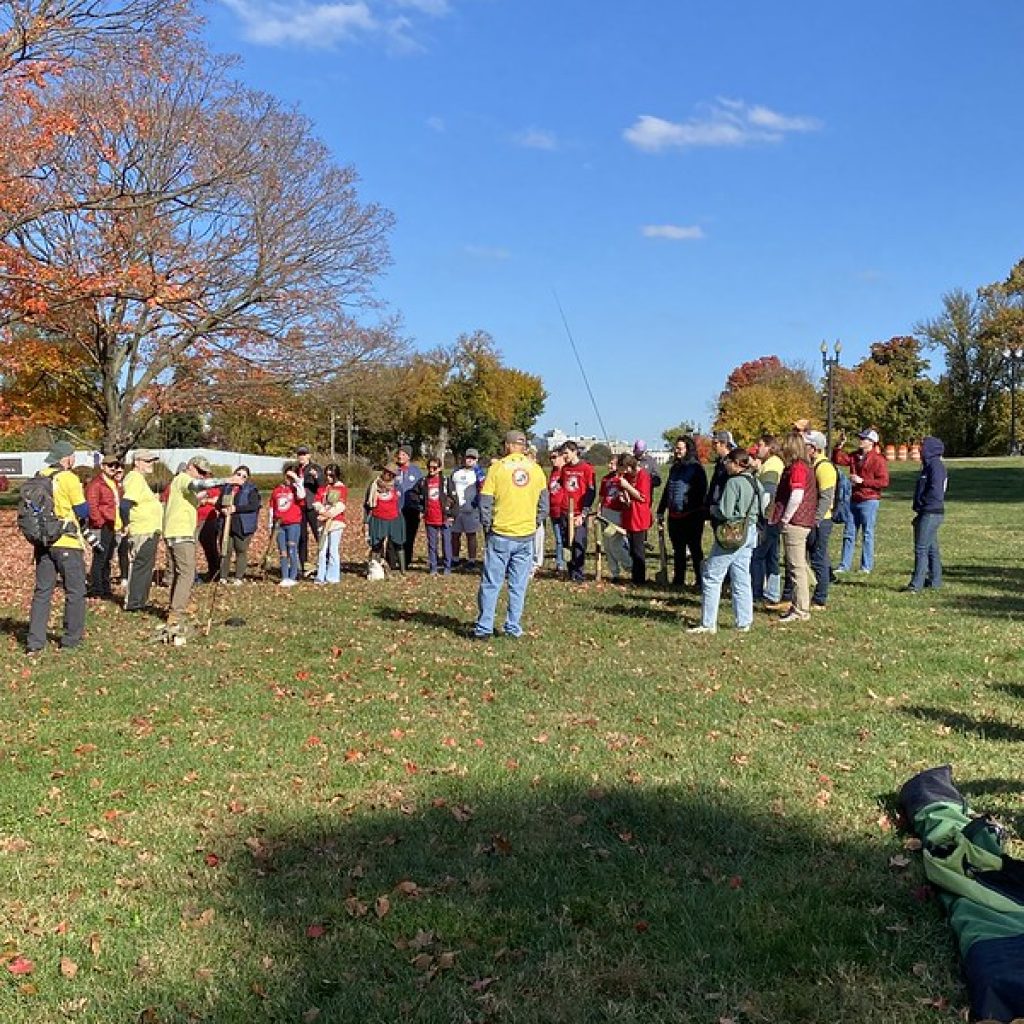
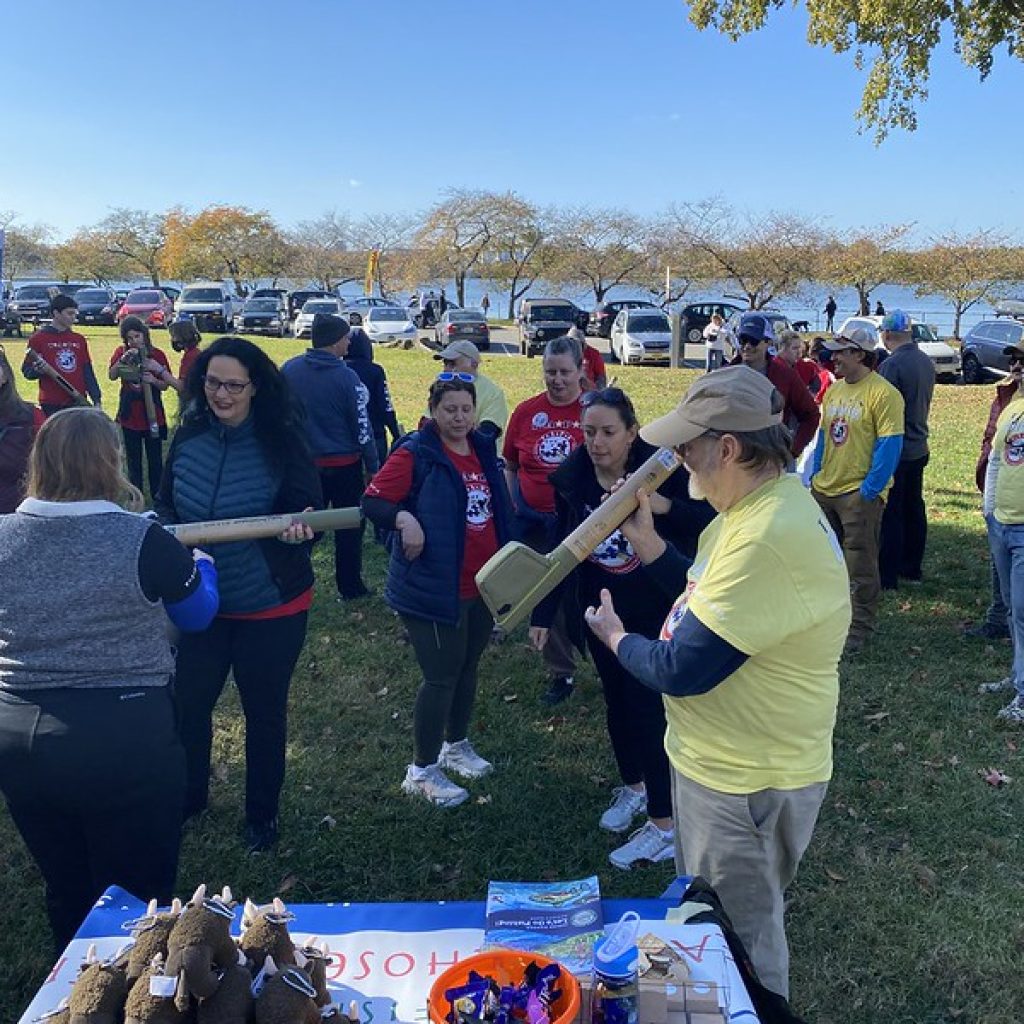

The morning started off with a rod set up and casting lesson from Matt Moedritzer (more on Matt’s wonderful efforts later). After the lesson for the group, families were paired up with volunteer guides from NCC-TU and DC PHWFF.
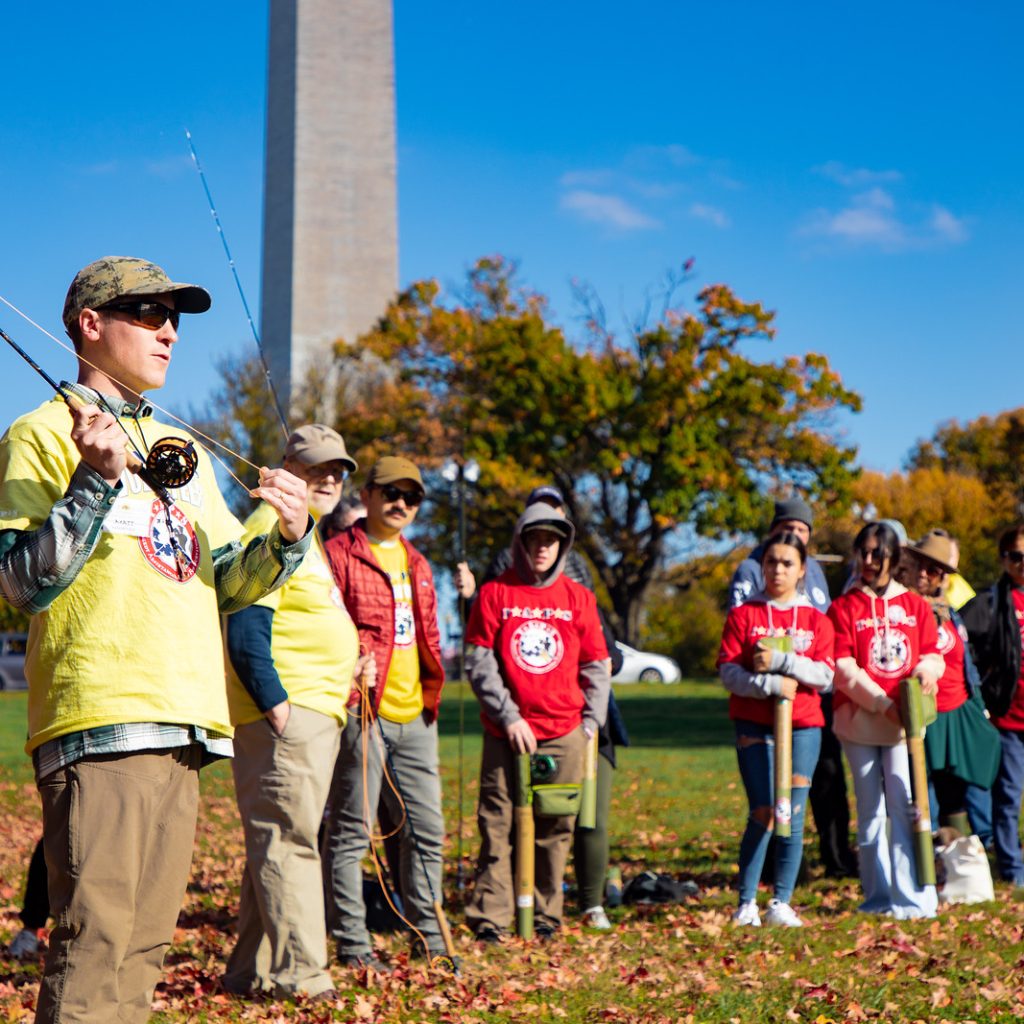
After a catered lunch, courtesy of Amazon Web Services, everyone was rigged up with flies, courtesy of Ackerman LLP.
Everyone had a great time experimenting with their new rods, learning a skill, and being in the outdoors. Several participating families were curious to learn more and were given online resources to practice their fly fishing at home.
Chris Campo, friend of PHWFF and Fish and Wildlife Biologist at DOEE also came prepared with his signature Anacostia Cat Fishing rigs.
This event at the tidal basin was the second of two events, the first being at Fletchers Cove earlier in October for more families grieving the loss of a military loved one, while healing through fly fishing as we are all so familiar with at Project Healing Waters.

A album of photos from the Fletchers Cove event is below (all Photo Credits National Park Trust):
Both of these events could not be made possible without the coordination of Matt Moedritzer, former DC Program Lead, Secretary of NCC-TU, and Government Affairs and Public Policy Attorney at Ackerman LLP. Through Matt’s passion for the military community, his love for fly fishing, and his “can-do” attitude this event was made possible. The event was also made possible due to the work of George Gaines. George has dedicated the better part of his life to PHWFF and TU, and continues to volunteer in the DC Program. Matt and George saw the potential for collaboration and helped facilitate a day the families and volunteers will not soon forget.
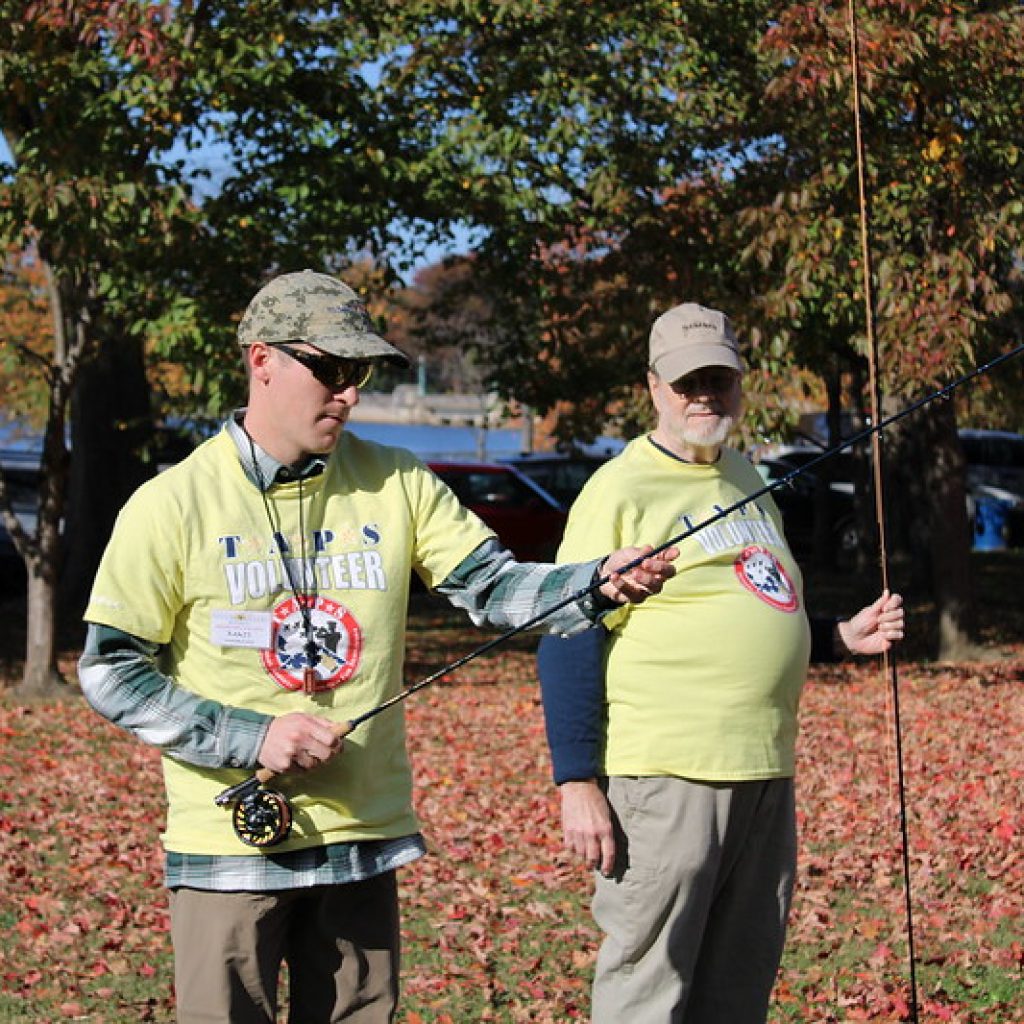
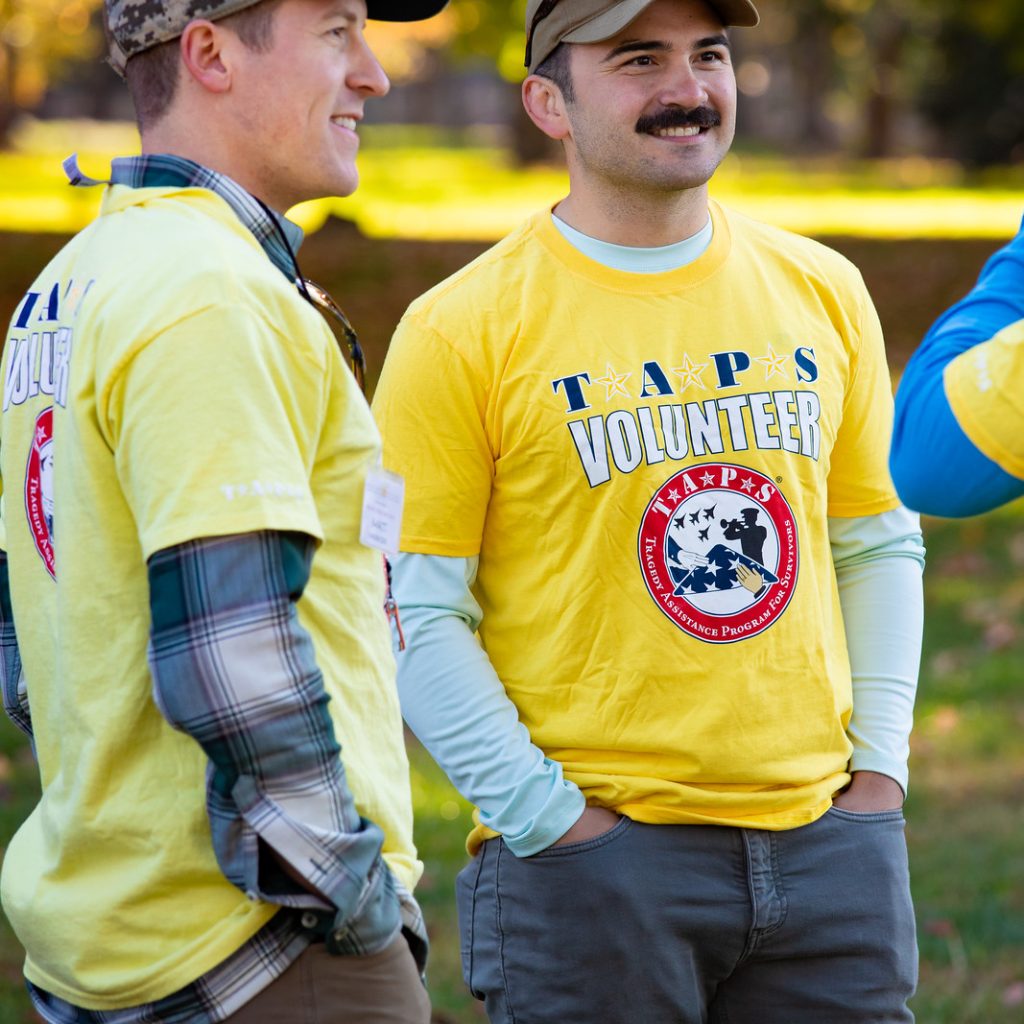
Thank you to all there rest of the volunteers that made this event possible:
Mike Abramowitz
John Fitzgerald
Eric Dooley
Fred Michaud
Timothy Norville
Mark Holzrichter
Andrew Haley
Chris Campo
Rob Catalanatto
Chuck Lukacs
Jason Garrett
Andrew White
Links to credited photo albums: TAPS Media. National Park Trust “Buddy Bison”
Latest News
Abraham Lincoln, Legendary Fly Fisherman? Fun from Washington DC
August 24, 2022
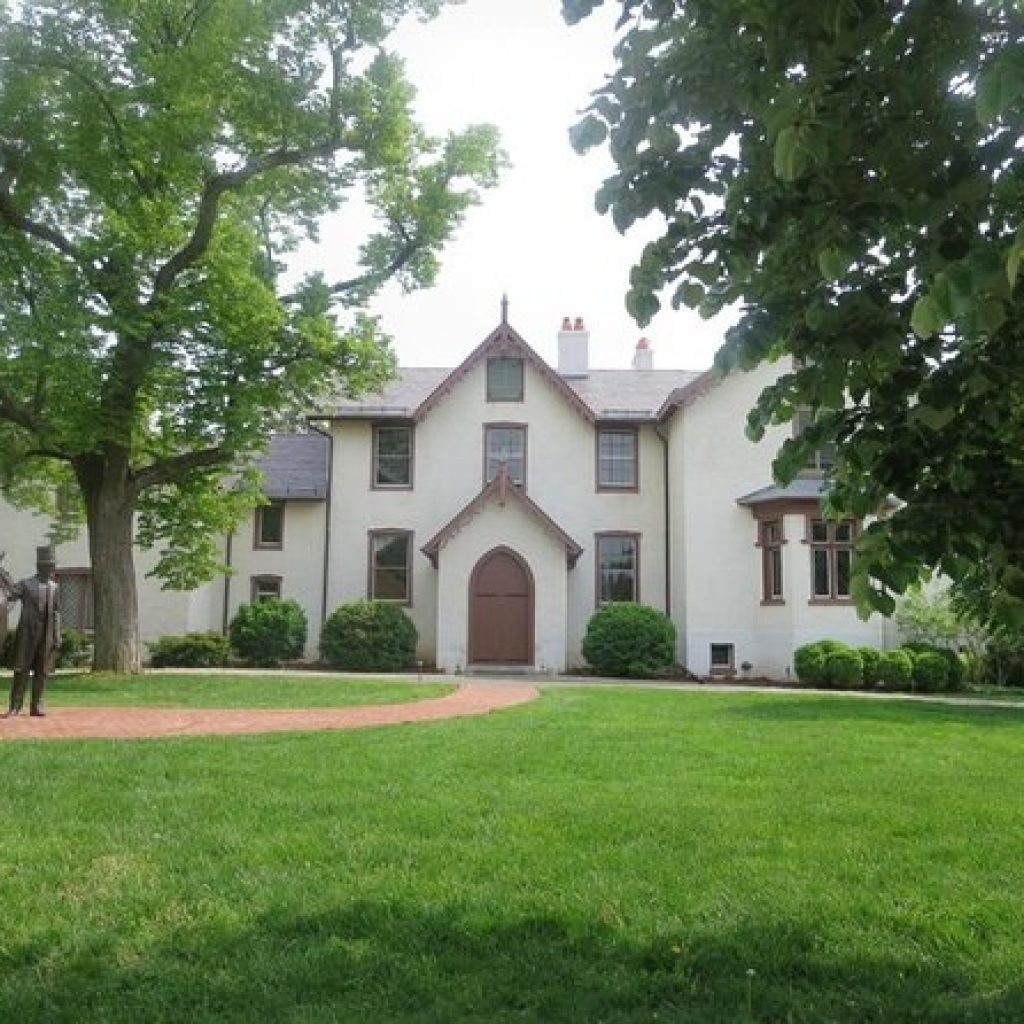
President Lincoln’s historic cottage is a national monument on the grounds of the Soldiers’ Home, now known as the Armed Forces Retirement Home (AFRH). I promise I am not turning this into a history blog… stick with me! I can’t say for certain if President Abraham Lincoln was a fly fisherman, but was once asked what he remembered most about the War of 1812 and he recalled: he had fished all day, catching some small fish, and giving them to hungry soldiers returning from the war.
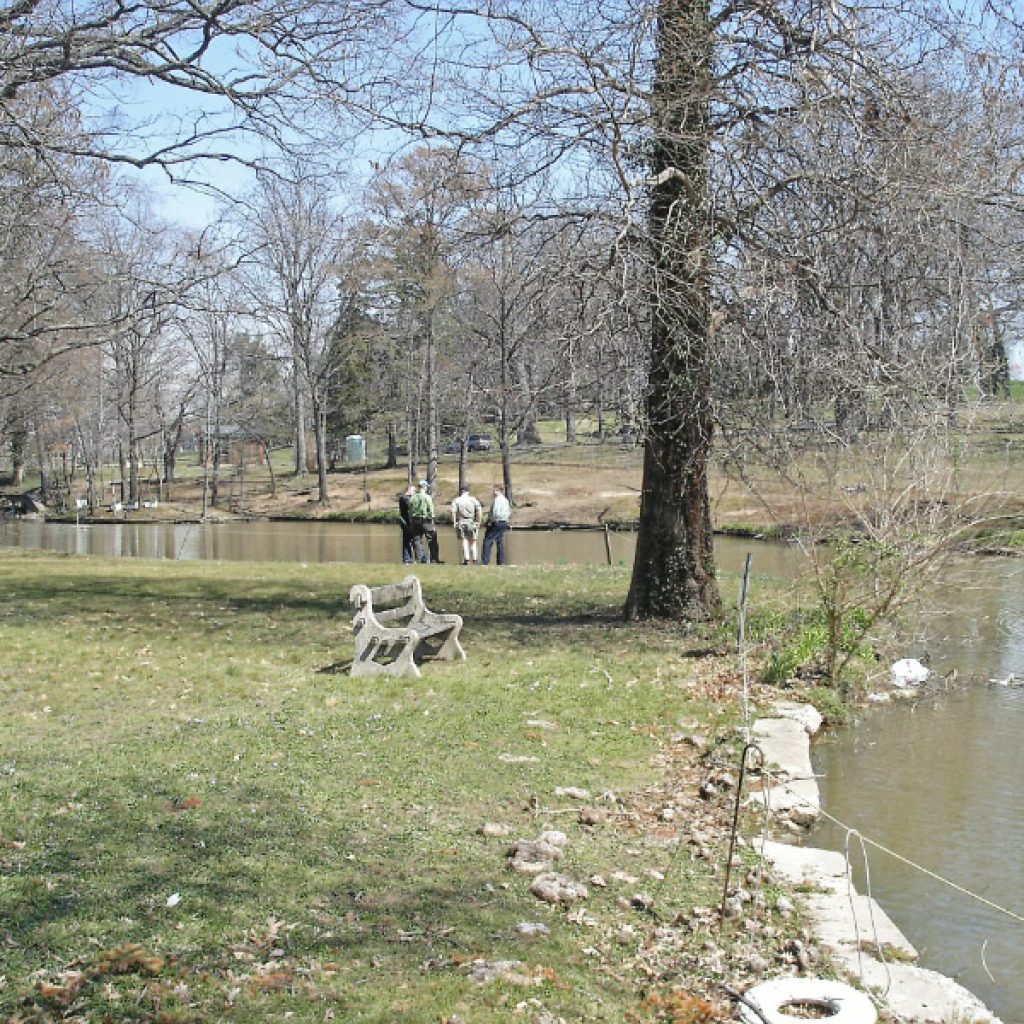
Fast forwarding to 2005, a group of veterans and volunteers led by Ed Nicholson is on its very first on the water outing for the participants at the ponds at the AFRH in Washington DC. Needless to say, the AFRH ponds are a special place to Project Healing Waters.
Fast forwarding again to 2022. the Washington DC Program is keeping tradition alive, fishing at the AFRH ponds as our home waters thanks to the warm welcome and support of the AFRH and its staff.
DC Program Participants and Volunteers have found the pond to be resilient and healthy! There is more growth on the banks than pictured in 2005, but the large mouth bass, bluegill, and crappie are still biting and fighting !
The DC Program return to the AFRH has also presented a new recruiting opportunity. There are residents of the home that love to fish, but have never been fly fishing before. What a fantastic opportunity to share our passion for fly fishing and it’s therapeutic enjoyment with the residents of the AFRH; a small thanks to the generosity and welcoming nature of the staff and it’s residents.
At the most recent outing on August 6th, the DC Program was delighted to host Ed Nicholson, founder of PHWFF, at the AFRH Pond. Ed supported a DC Program virtual meeting during the pandemic, sharing his thoughts on the early days of the Program, how the organization grew to what it is today, and encouraging words for the participants and volunteers.
Fishing wasn’t the only highlight of this weeks outing. The DC Program also received a generous donation of fly tying materials from a gentleman by the name of Fred Olds.
Fred is no ordinary donor. Fred, or should I say Captain Olds (Ret) is a 1959 graduate of the United States Naval Academy, a Vietnam War Veteran, 30 year career military officer, and evidently a fly tyer!
The DC Program is thankful for the donation and grateful for Captain Olds for his career of service to our Navy and to our country.
Latest News
Bobby Shelton aka PHWFF Santa Clause !
August 24, 2022
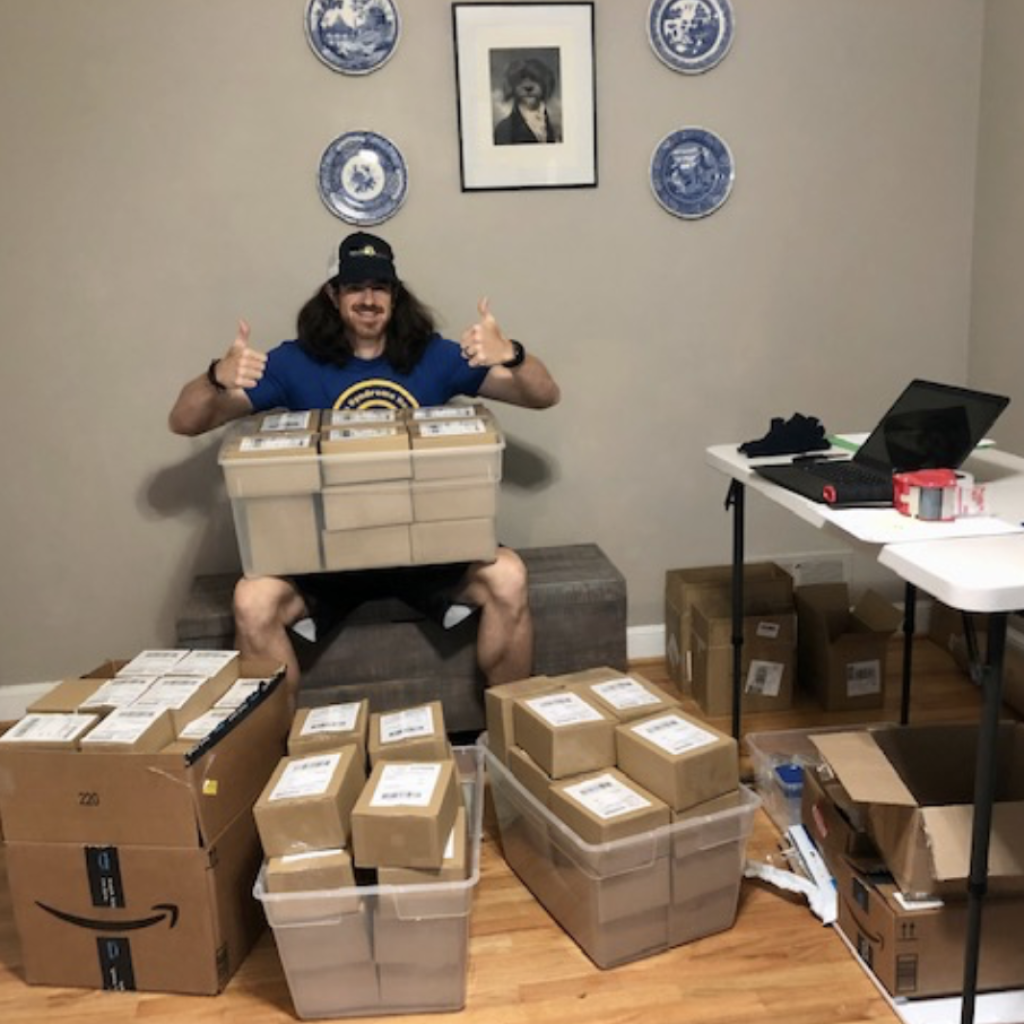
It’s no secret that the COVID-19 Pandemic has presented challenges to Project Healing Waters Fly Fishing and it’s Program’s nationwide. Through the use of virtual education, virtual fly tying and rod building, and other remote engagements, participants and volunteers were able to stay engaged.
Thanks to Fort Belvoir veteran, Bobby Shelton and his wife, Beth, 17,000 flies were sent to 97 PHWFF Programs nationwide in May and early June. The flies were collected from previous Fly Tying Marathons hosted by the Fort Belvoir and Quantico Programs along with donations from the Camp LeJeune Program and one tyer, Arthur Lazerow from Bethesda, MD, who tied over 7,000 flies for the donation.

Due to Covid, Fort Belvoir and Quantico Programs haven’t had a Fly Tying Marathon since 2019, but tyers kept sending us flies. In a year-long effort, Fort Belvoir volunteer, Rob Varela, gathered all the flies and broke them down into dozens and into categories of saltwater, warmwater, and trout. When Fort Belvoir and Quantico Programs advertised for a volunteer to take orders and ship the flies, Bobby and Beth volunteered. Their only instructions were to “get rid of everything and to get them out by early June so they could be used as soon as possible.”
It’s safe to say that the impact of Bobby and Beth’s efforts will have a long lasting impact. On behalf of the 97 PHWFF Programs nationwide – THANK YOU BOBBY AND BETH!
Latest News
Rapid City Veterans Enjoy Cliffside Park Event
August 1, 2022
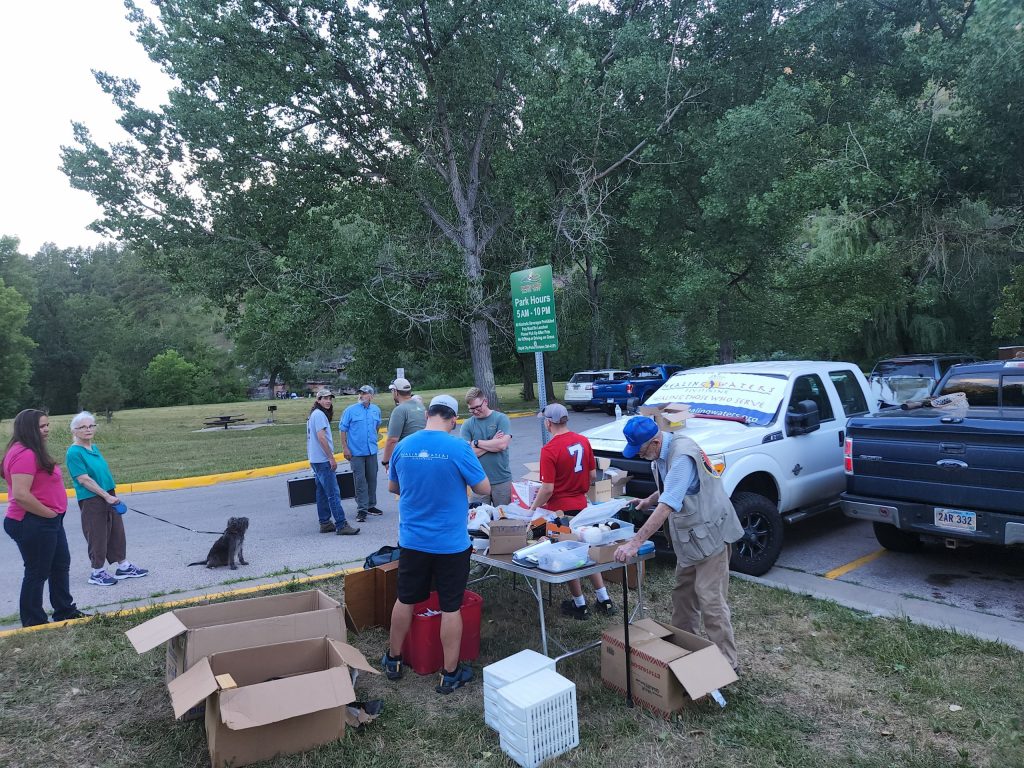

The Rapid City, South Dakota Program held a local fishing event on Rapid Creek, and did a give away for participants. There was a storm passing through that almost cancelled the event, but as soon as it was time to start, clouds cleared to reveal blue skies. The Rapid City Program was given a large donation, and the donor specified that the participants be given equipment, flies, flying materials, books, and DVDs. Every participant was given multiple bags of fly tying materials, and had a chance to pick out other equipment for fly fishing education as well as enhance their experience on the water.

Participants were thrilled to see all the materials and equipment they could chose from; it was an overwhelming amount of gear to chose from! This donation will give all participants an opportunity to tie their own flies using new materials to build their fly boxes. The book and DVD donations will help the participants learn new techniques, enhance their fly fishing knowledge, and prepare for future outings and experiences.
Everyone was very grateful for the donations, and excited to use their new equipment. Everyone said they would be “in trouble” with their significant others for bringing home so much new gear! After the donations were distributed, participants and volunteers enjoyed sandwiches, fishing in the local cree, and catching up with each other.
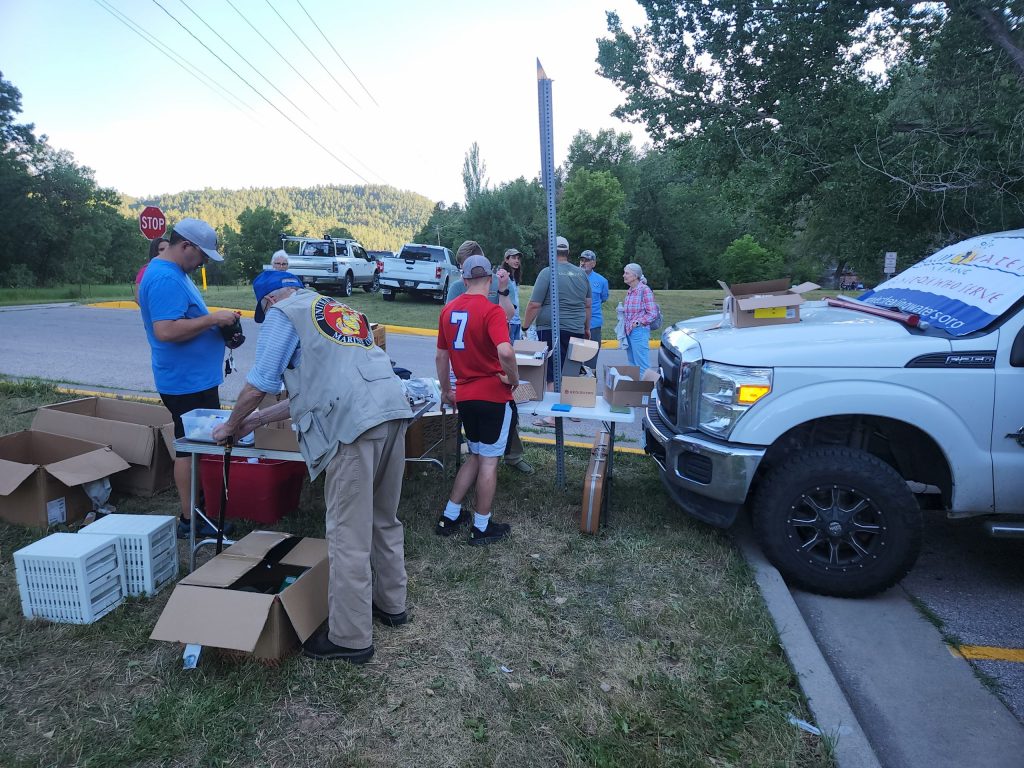
Rapid City Program would like to thank Harvey Crow (Vietnam War Veteran) for his generous donation to the Program. His 30+ years of commercial fly-tying and avid fly-fishing expertise will give the program participants many new opportunities. Mr. Crow has previously volunteered with the Rapid City Program, and has touched many veterans in the local community. His dedication to help other veterans will never be forgotten!
“I am extremely grateful for substantial support our community gives to this program and for all the time the volunteers give up a considerate amount of time to help support our participants, it is all very inspiring. I look forward to another year with PHWFF Rapid City.”
Josh Osterbur, Program Lead – PHWFF Rapid City, SD
